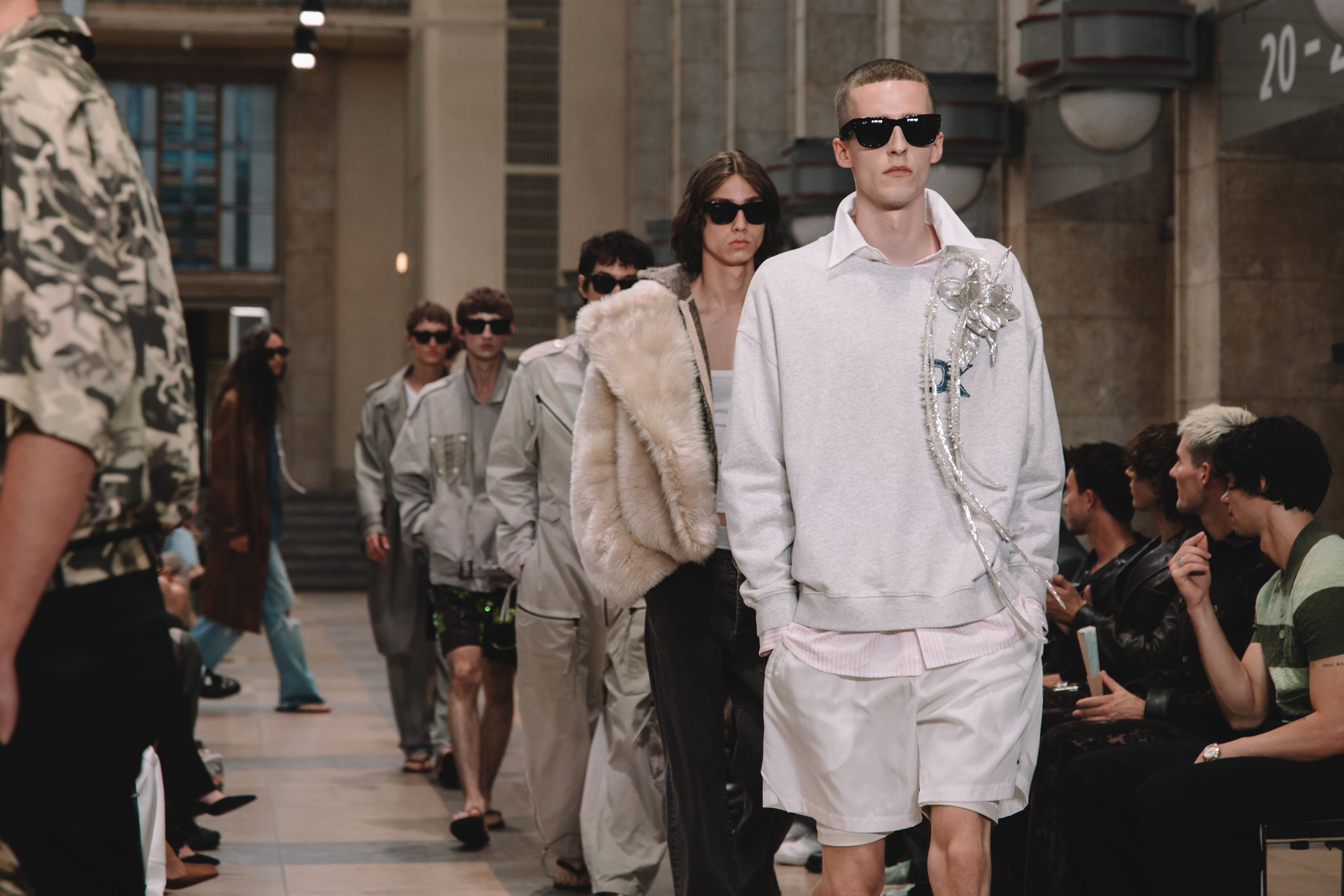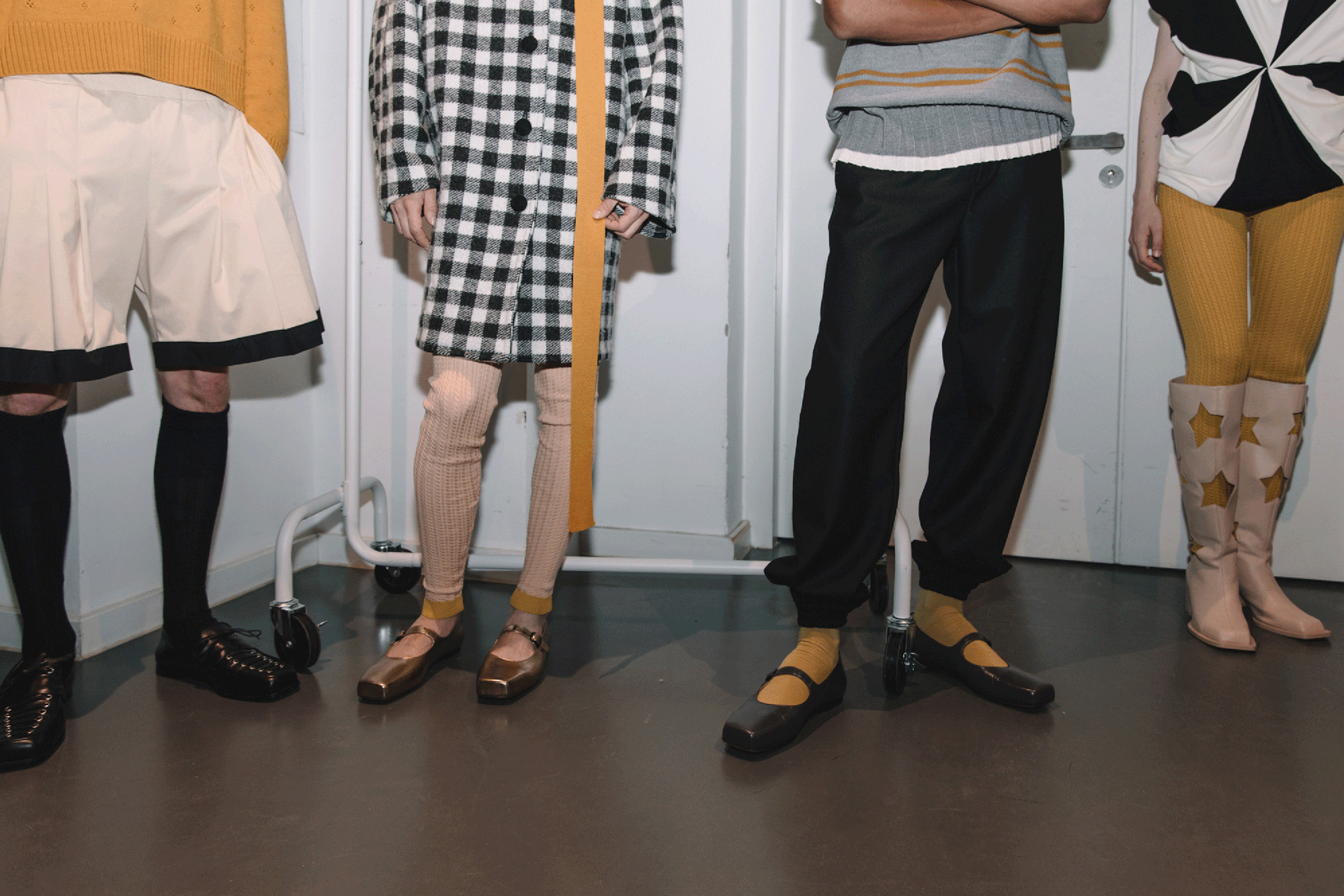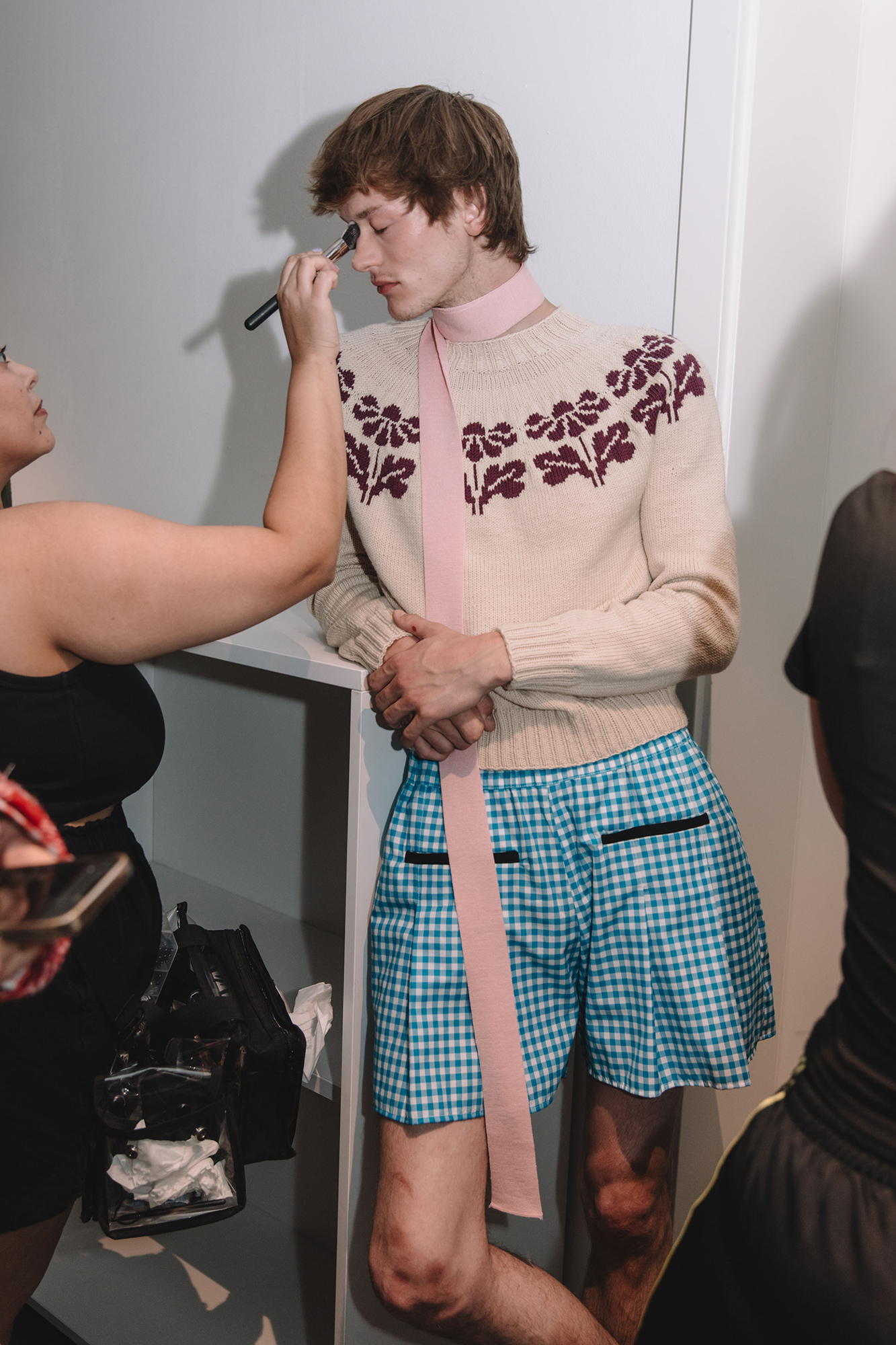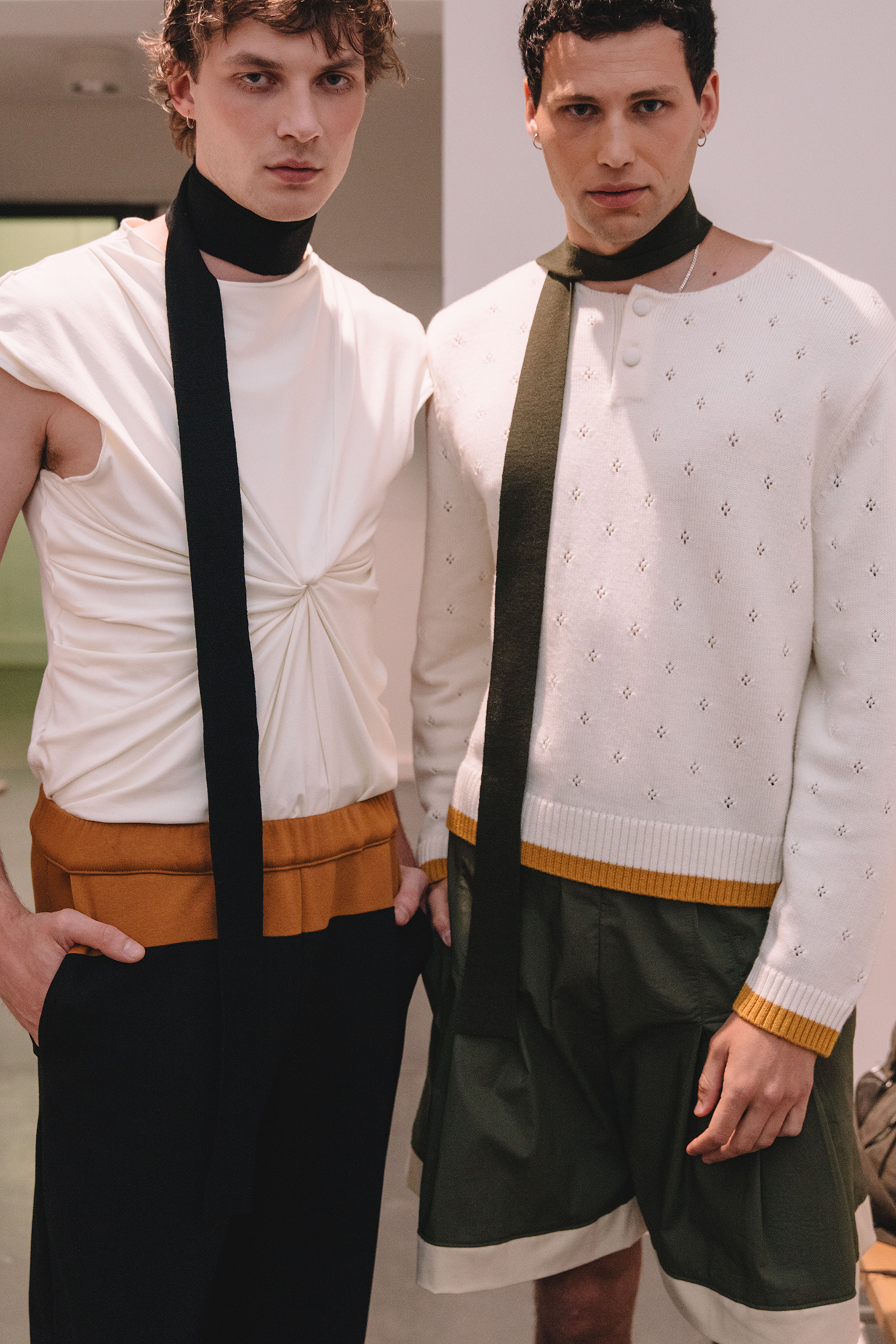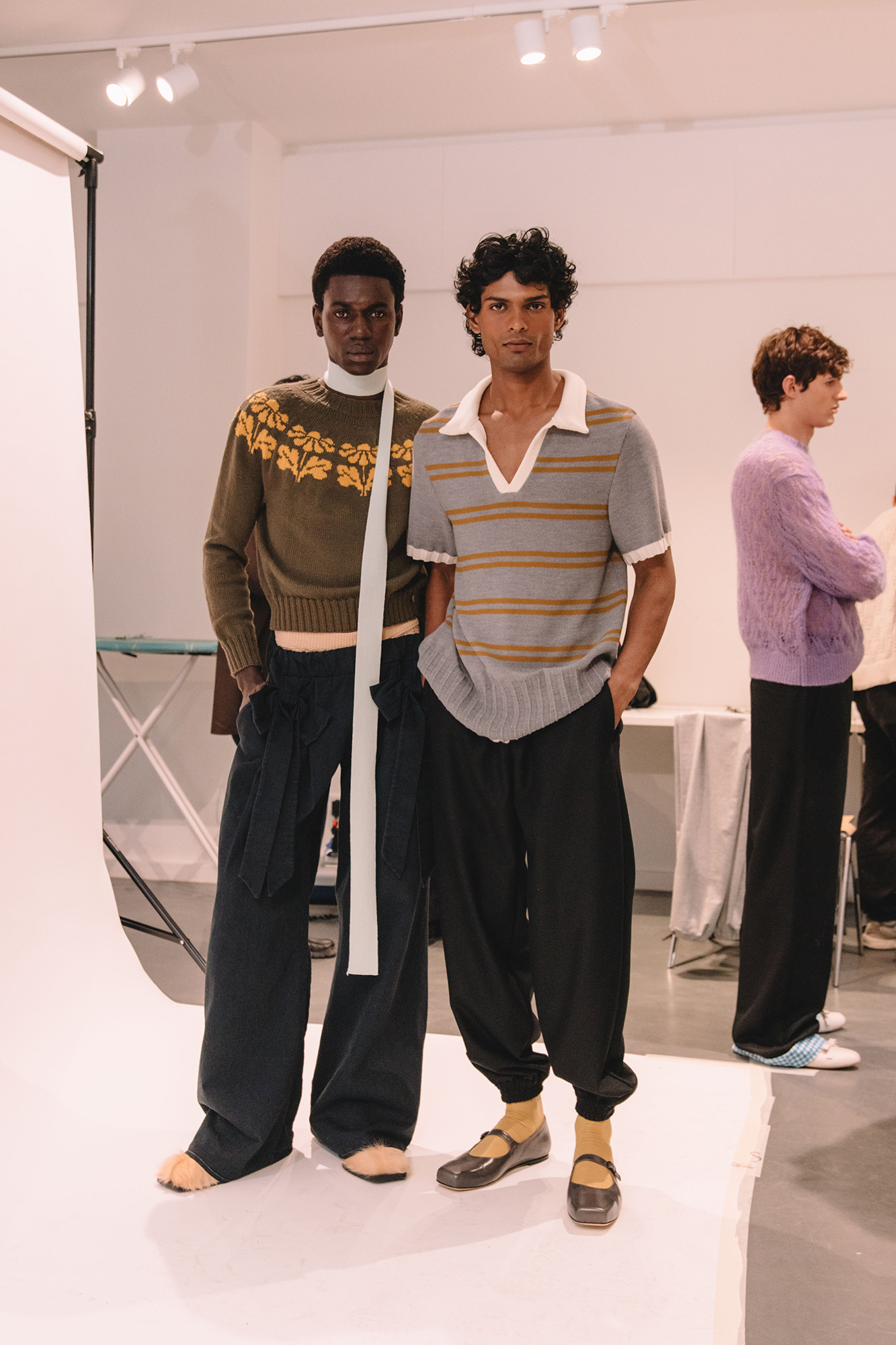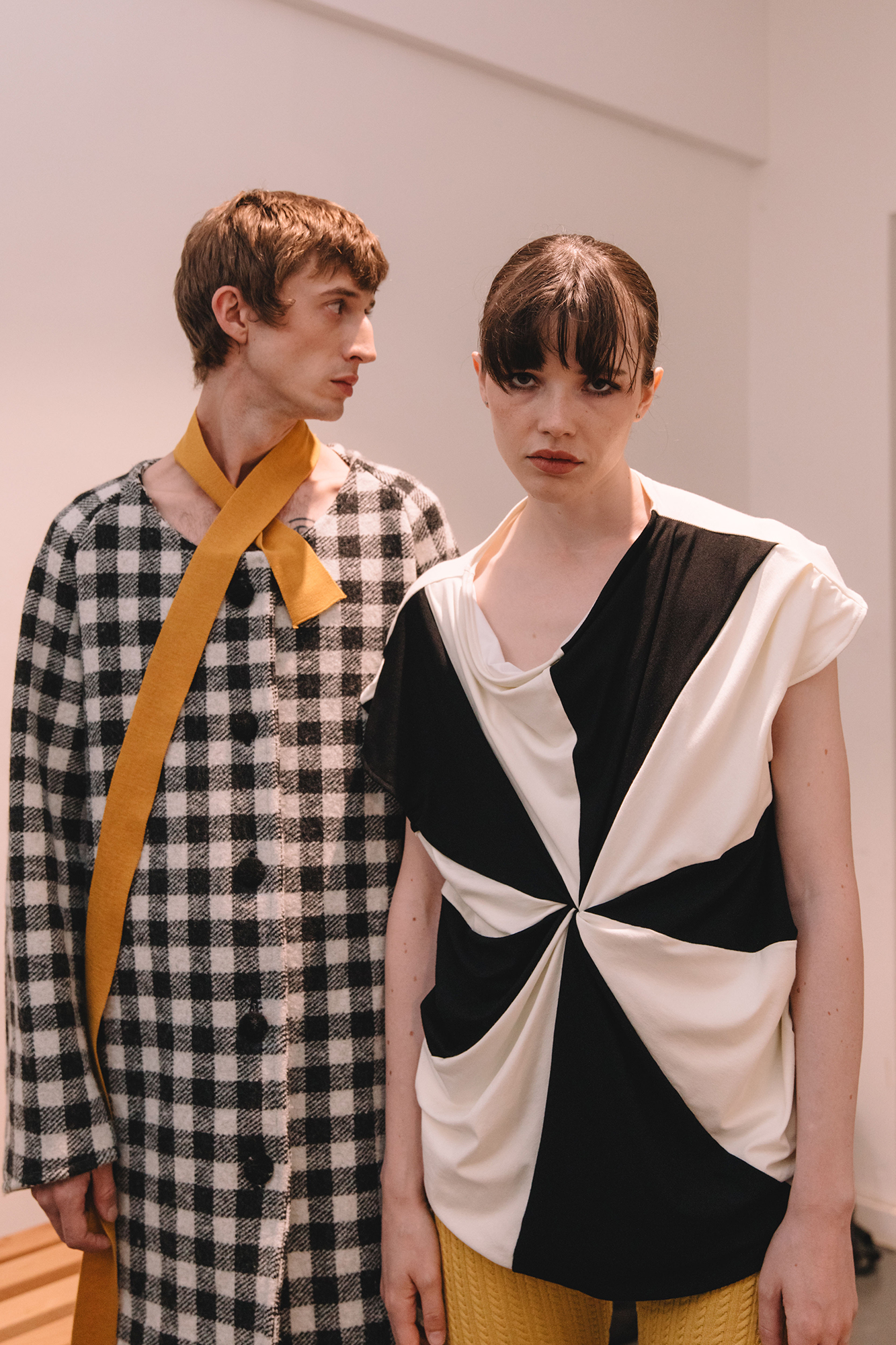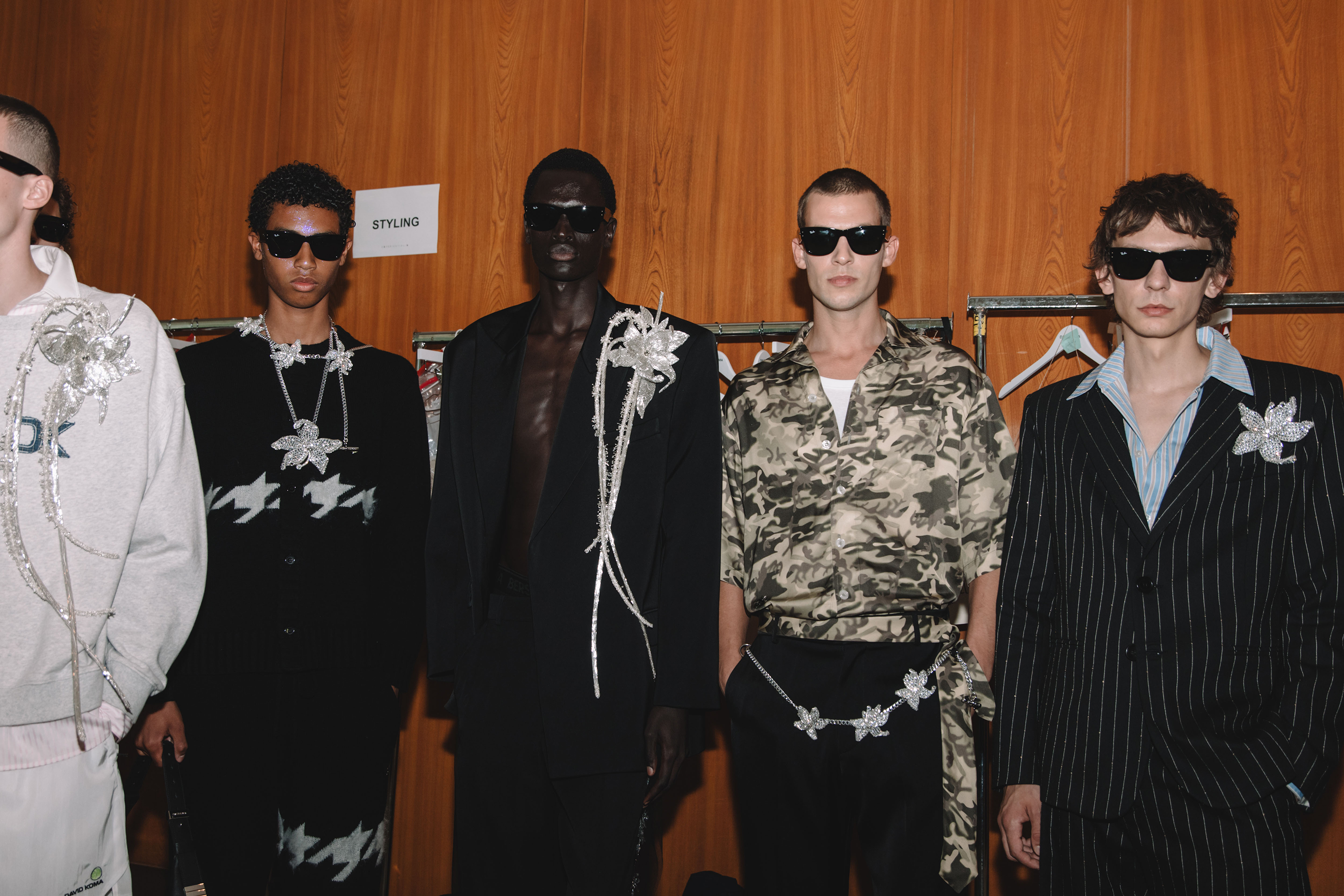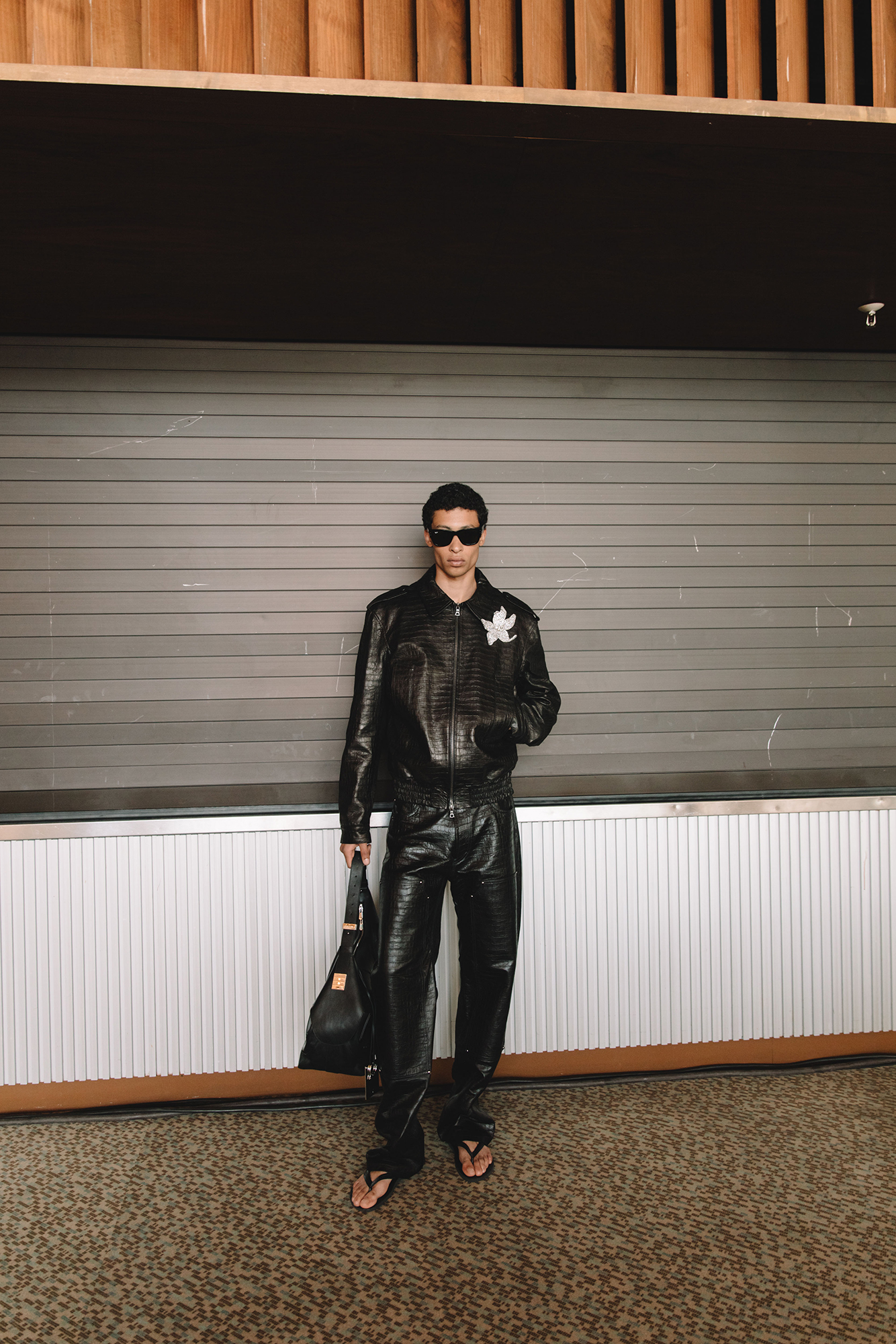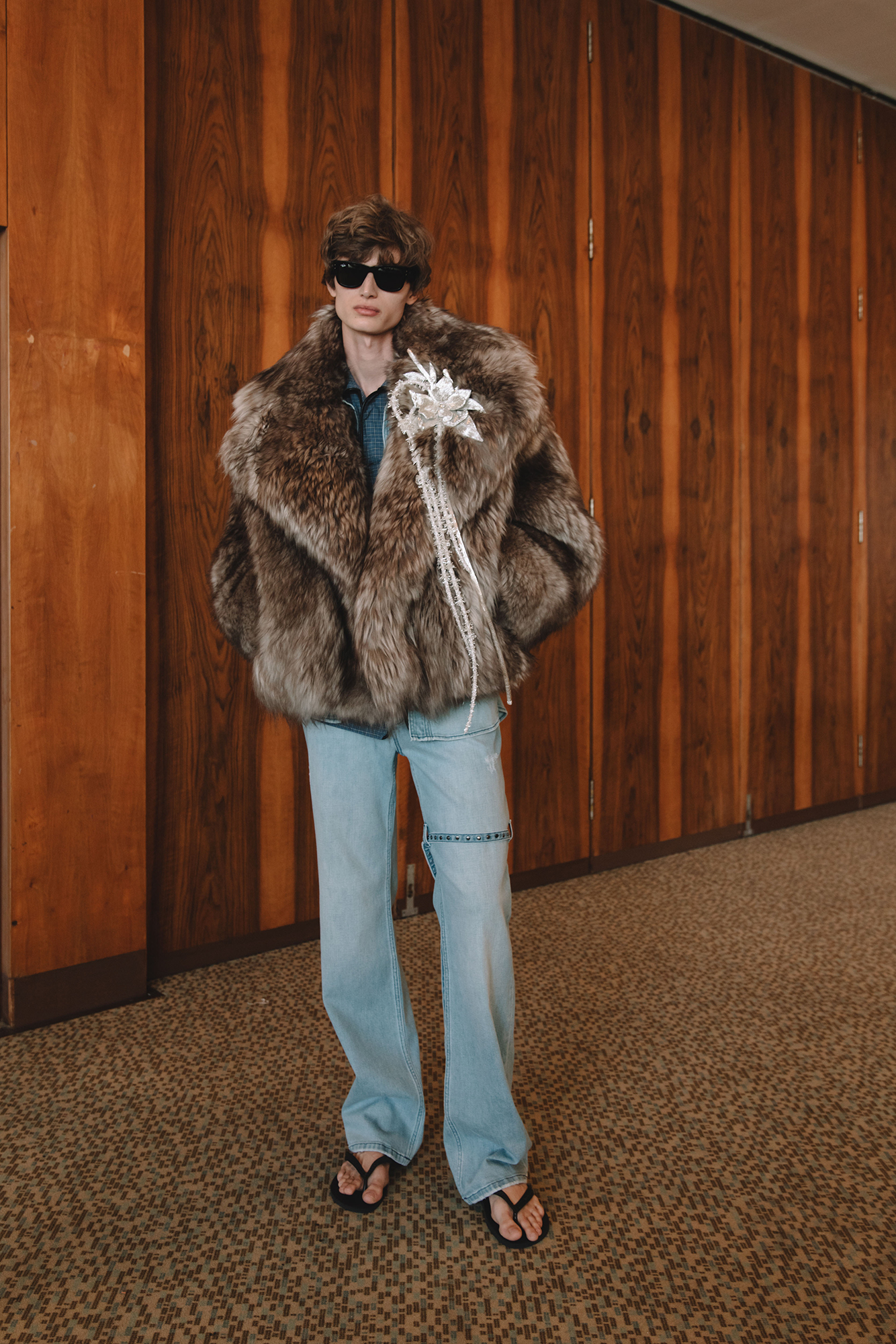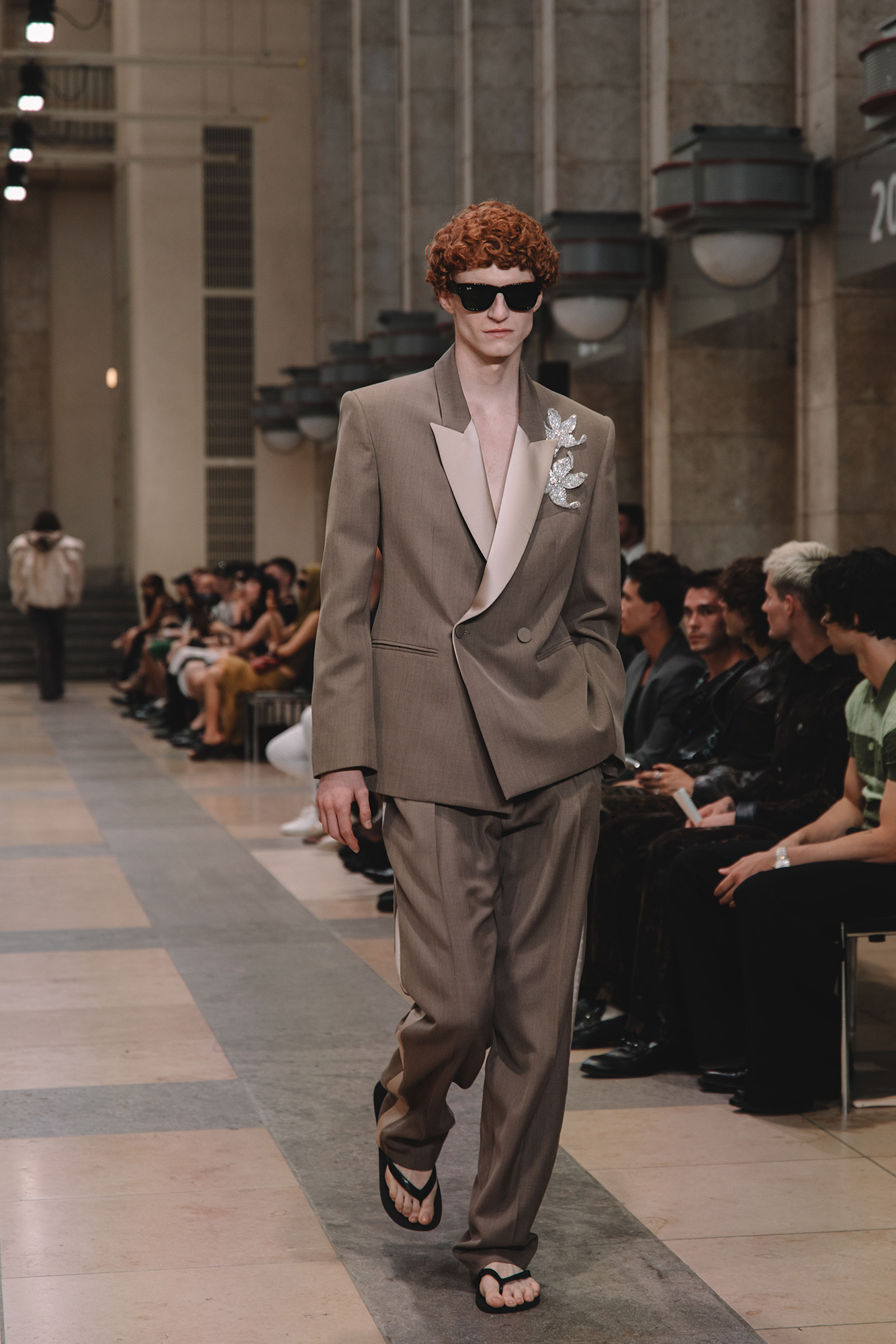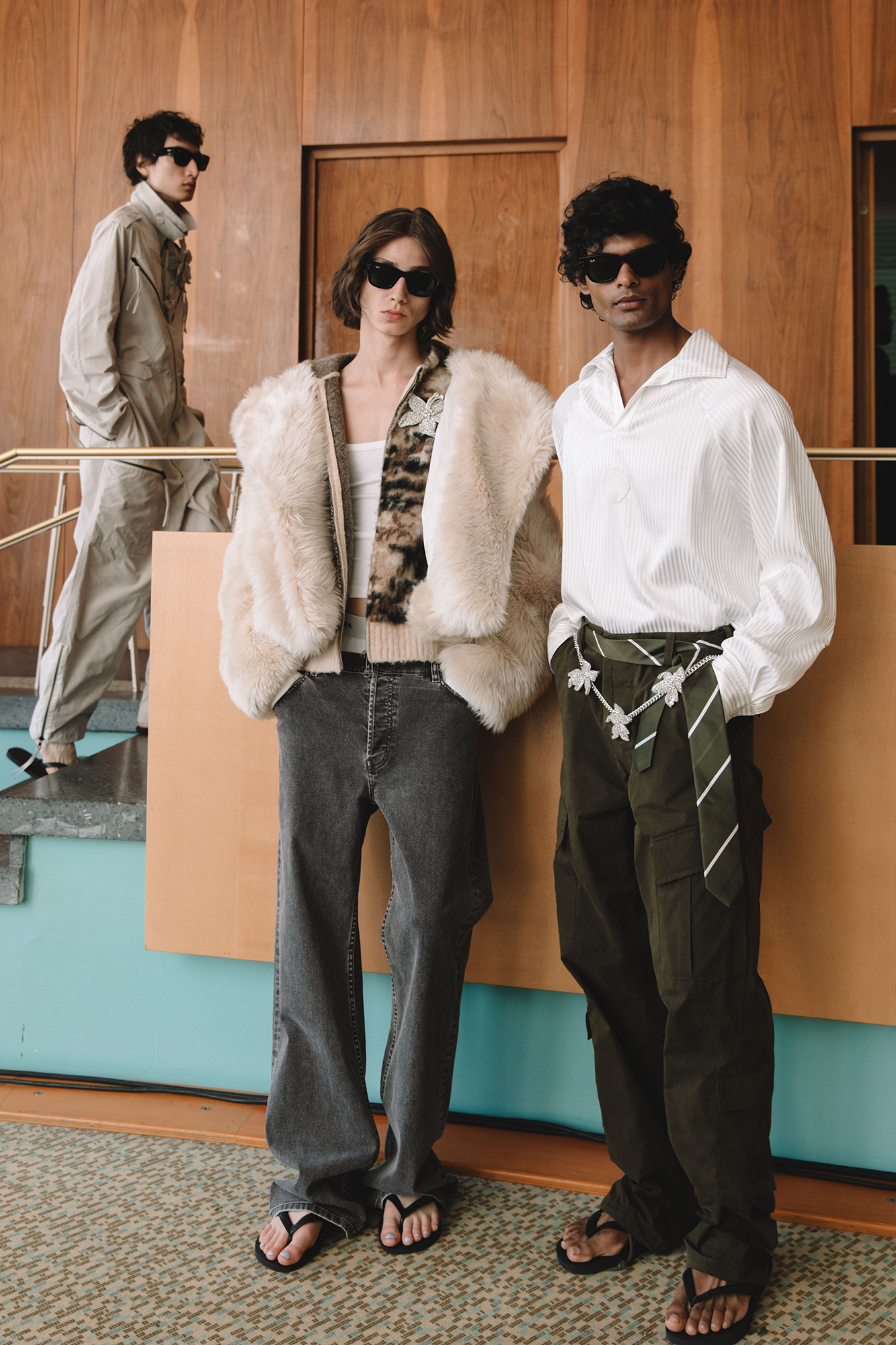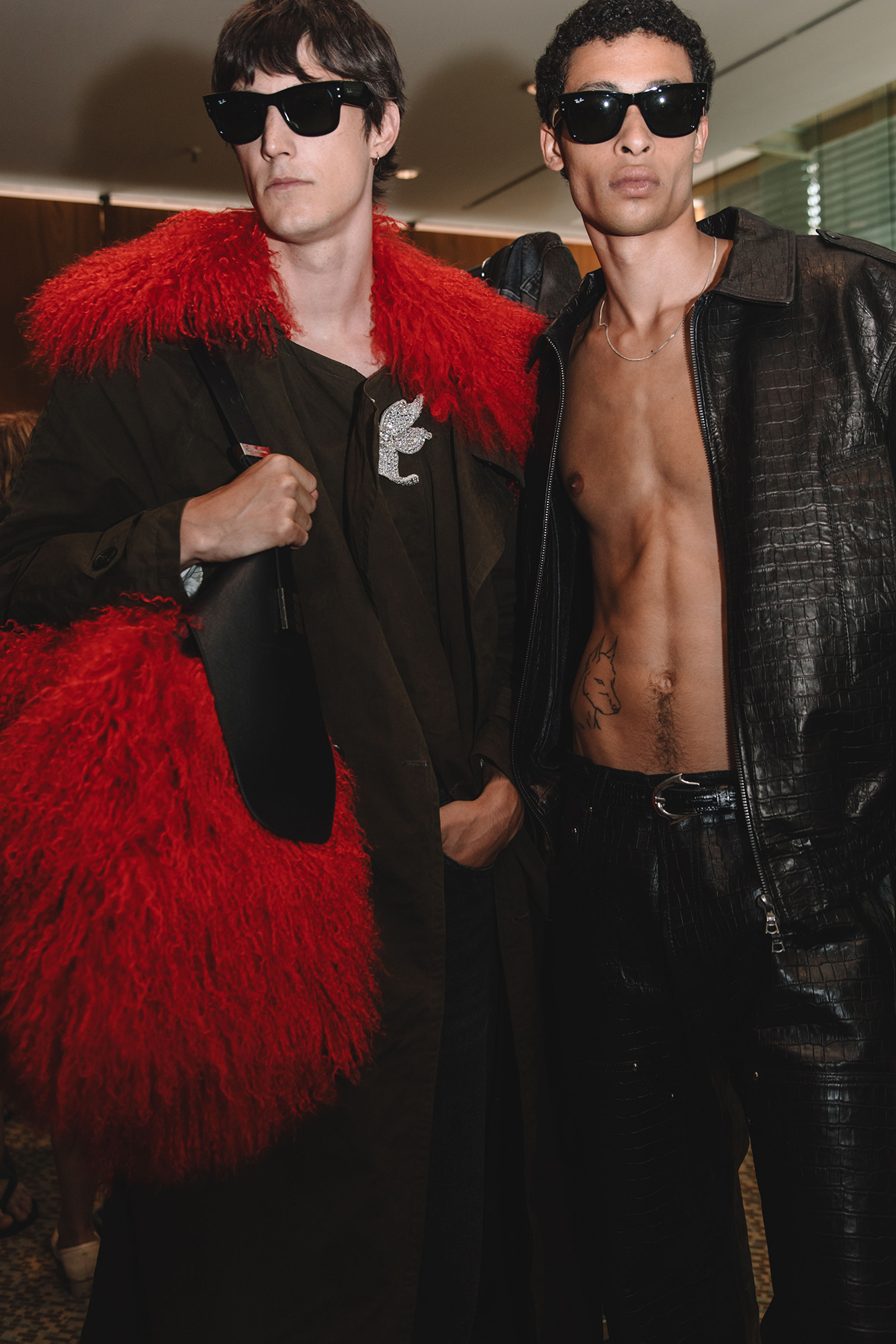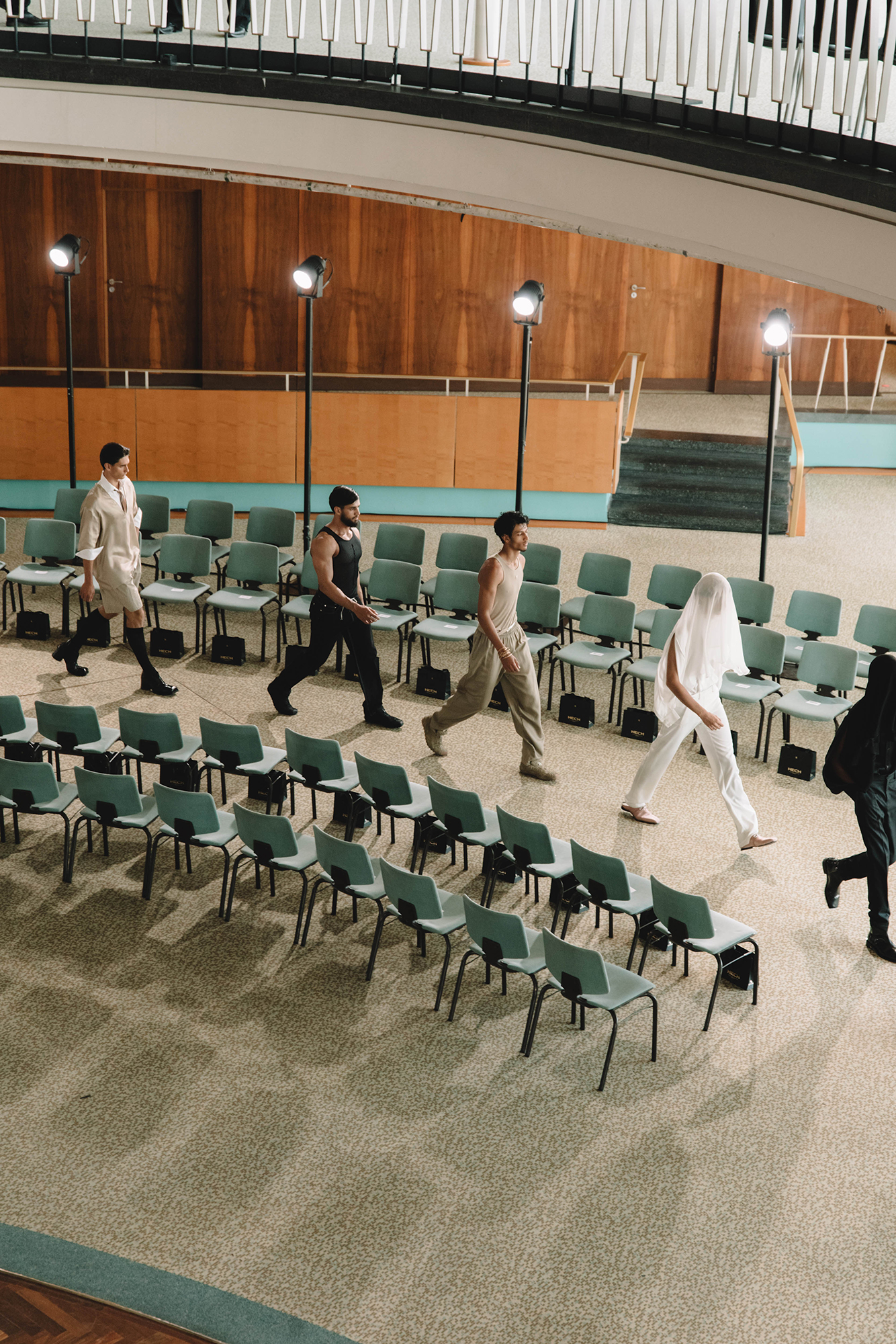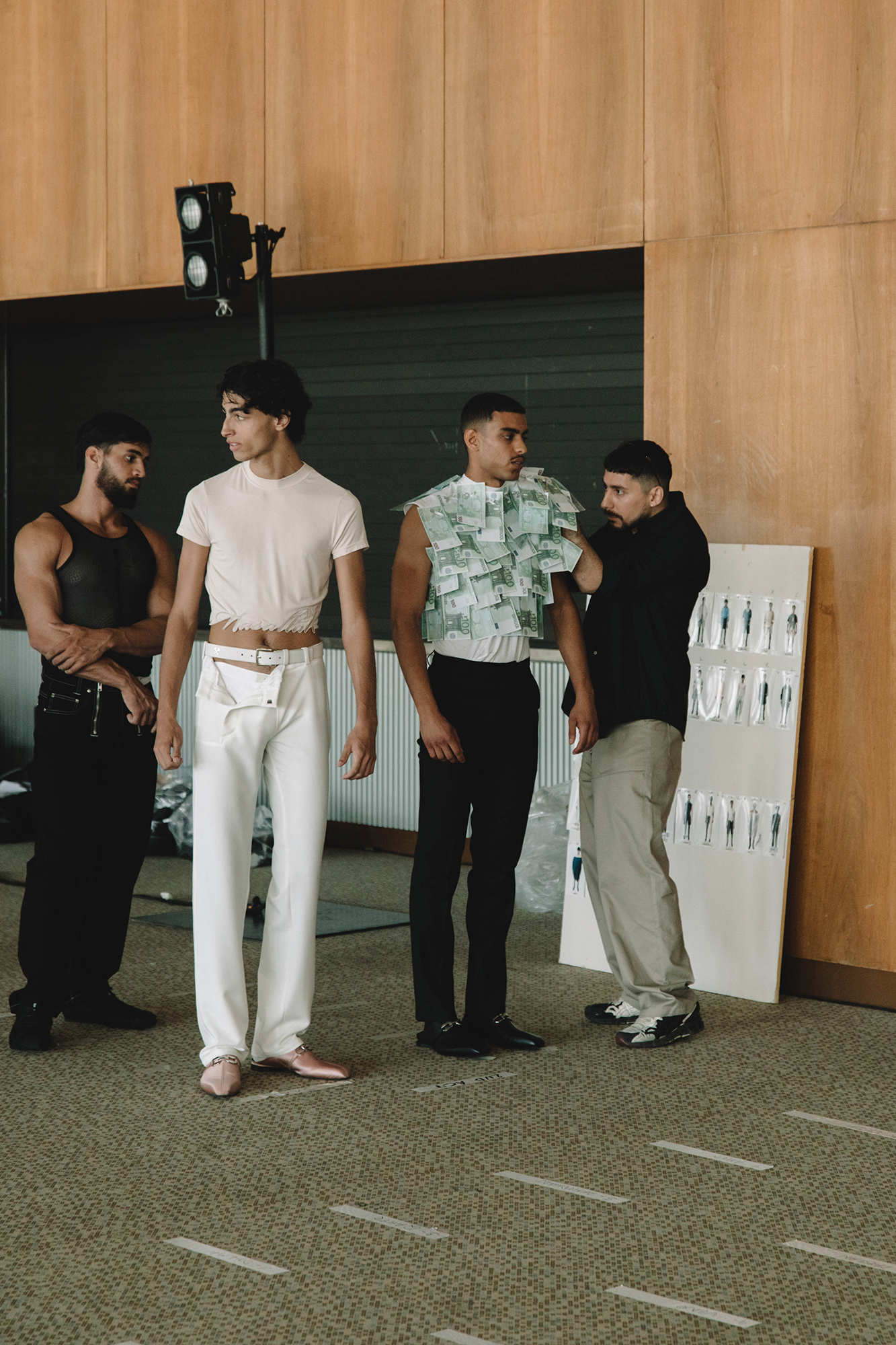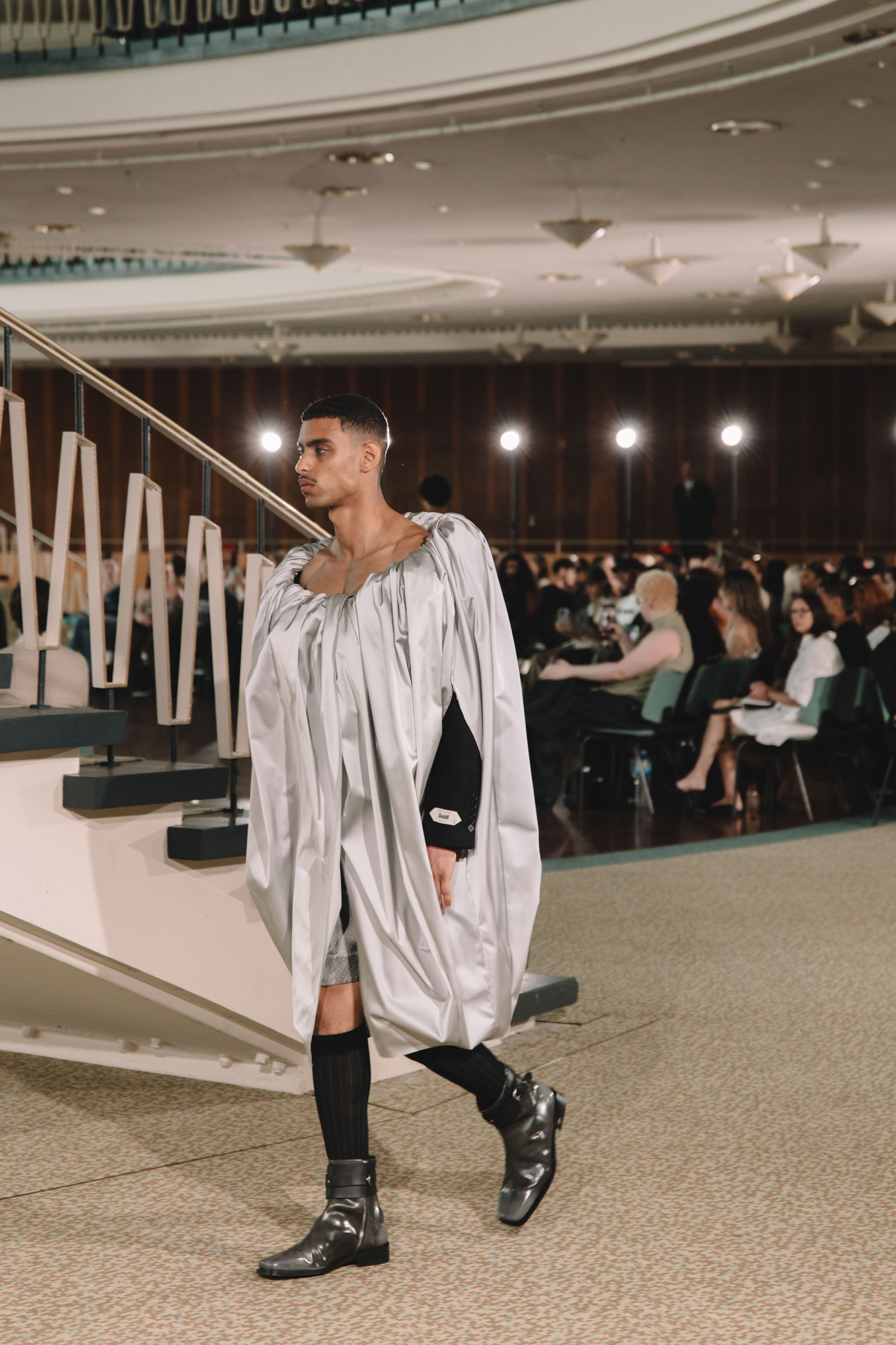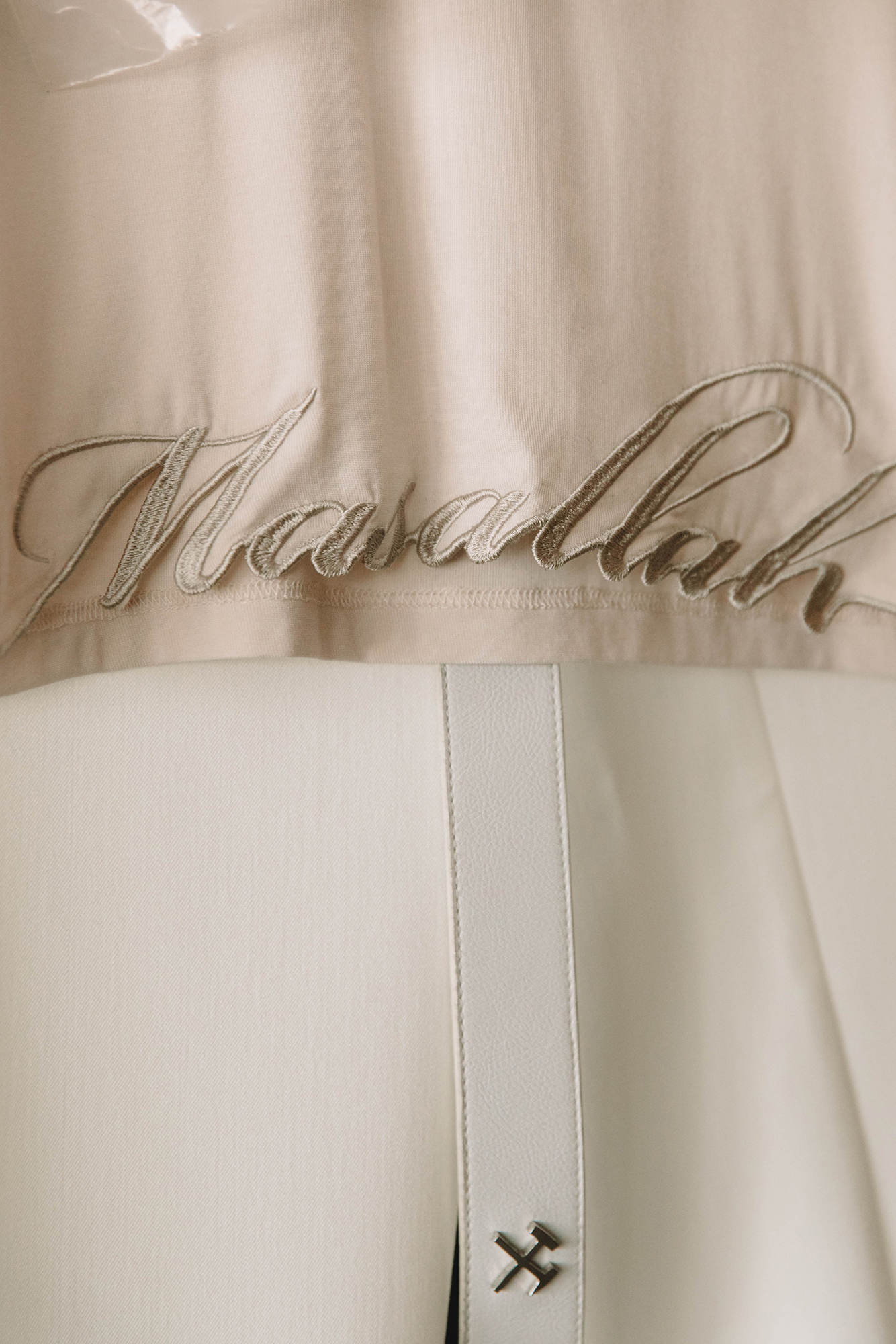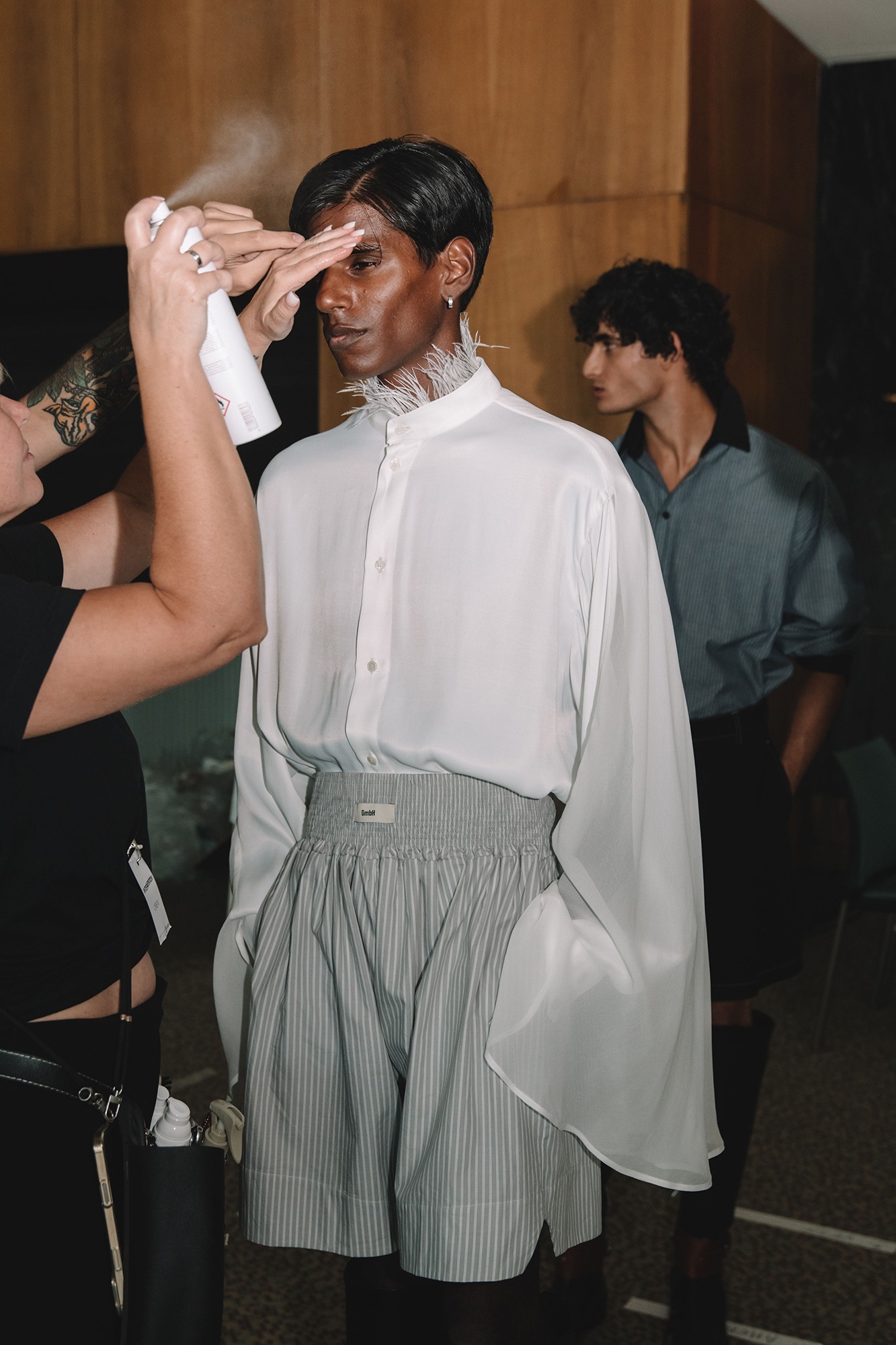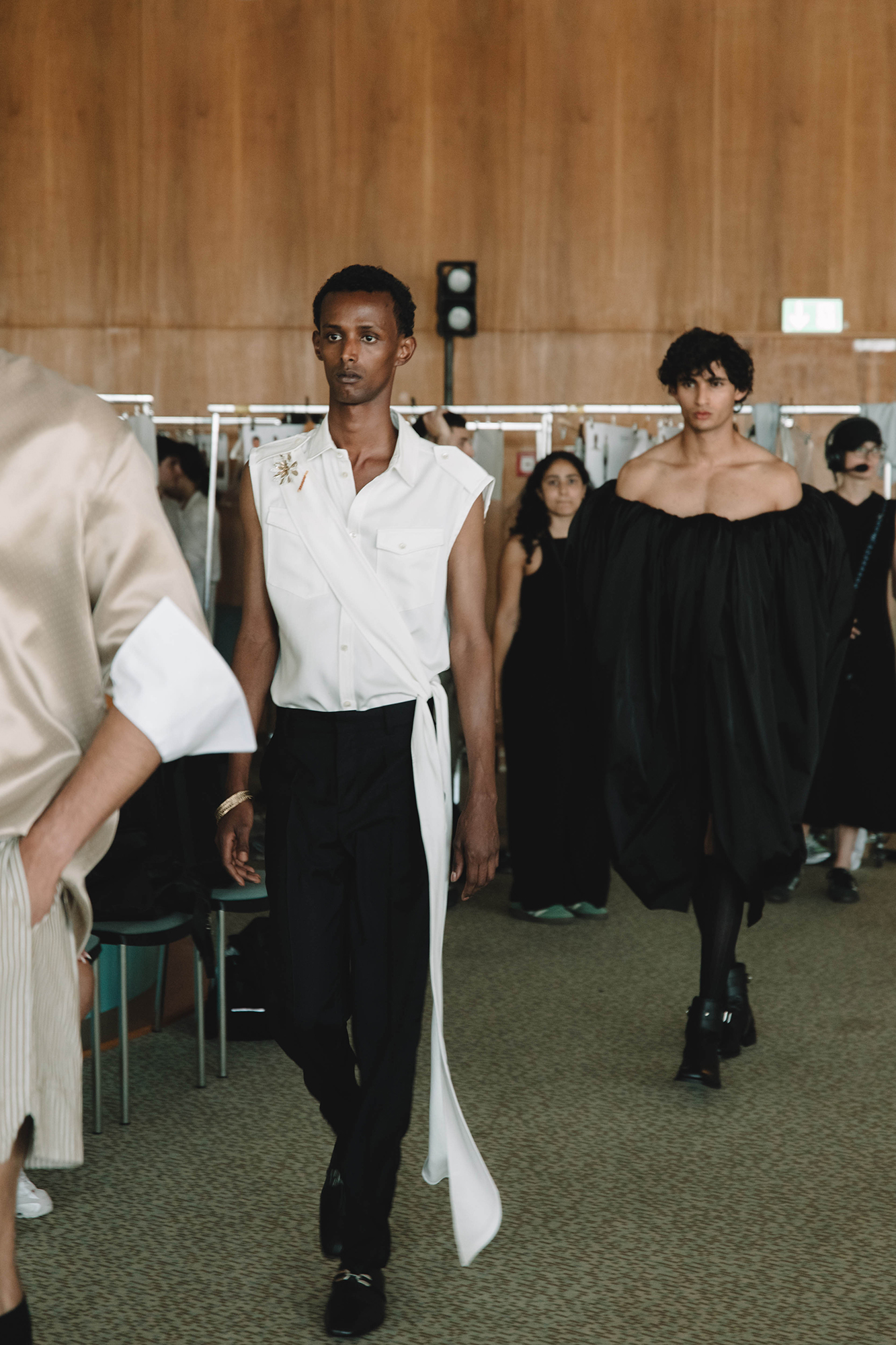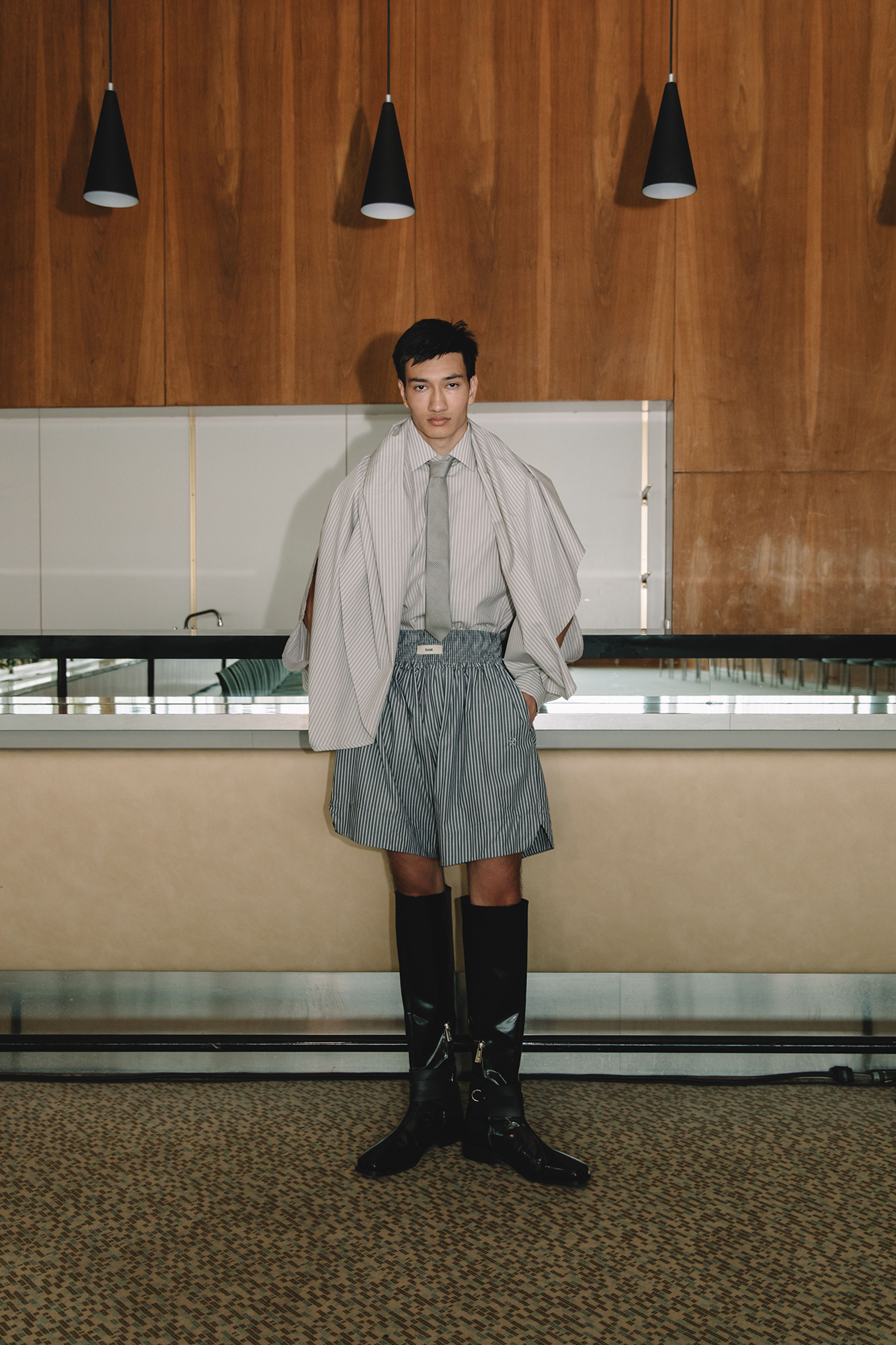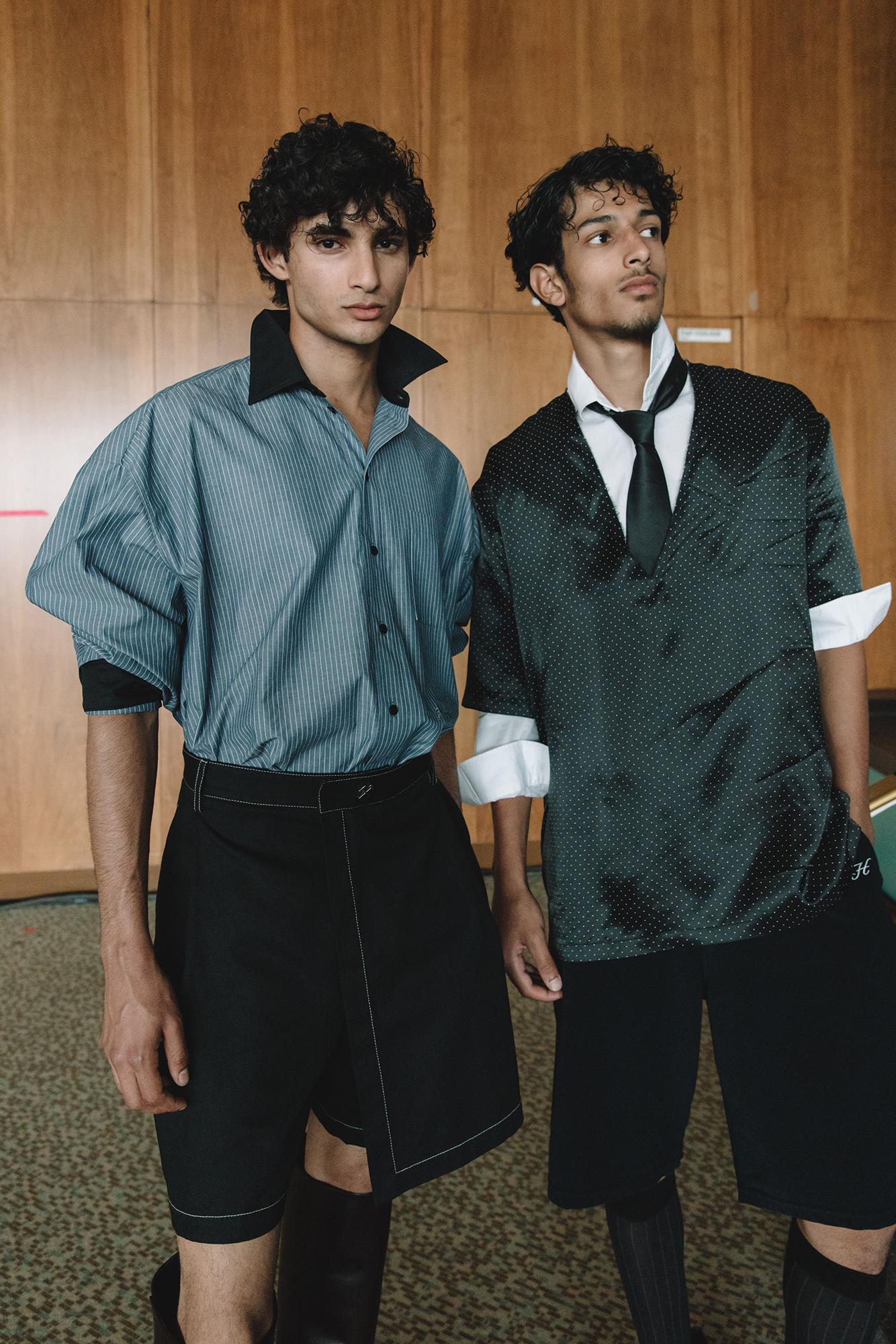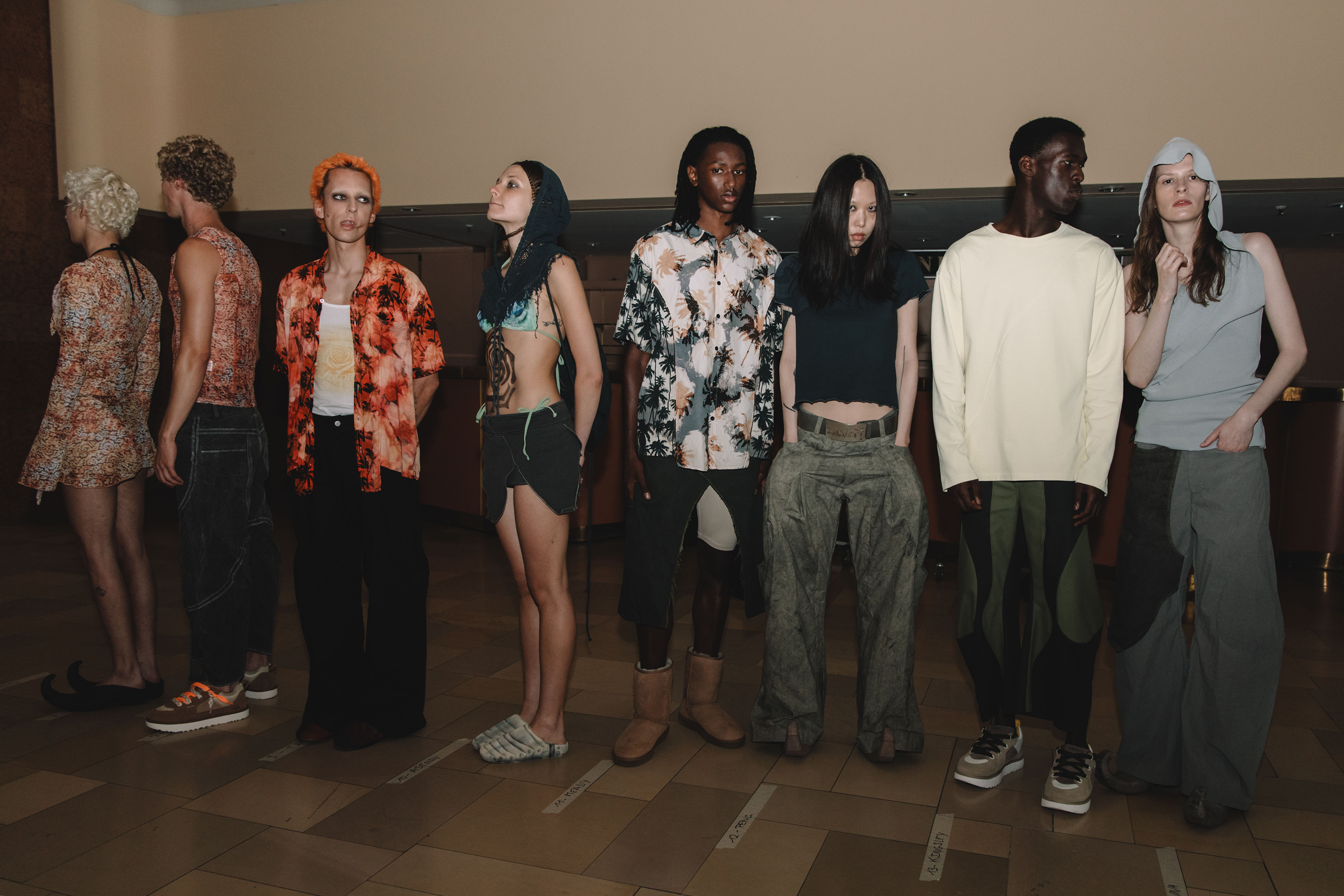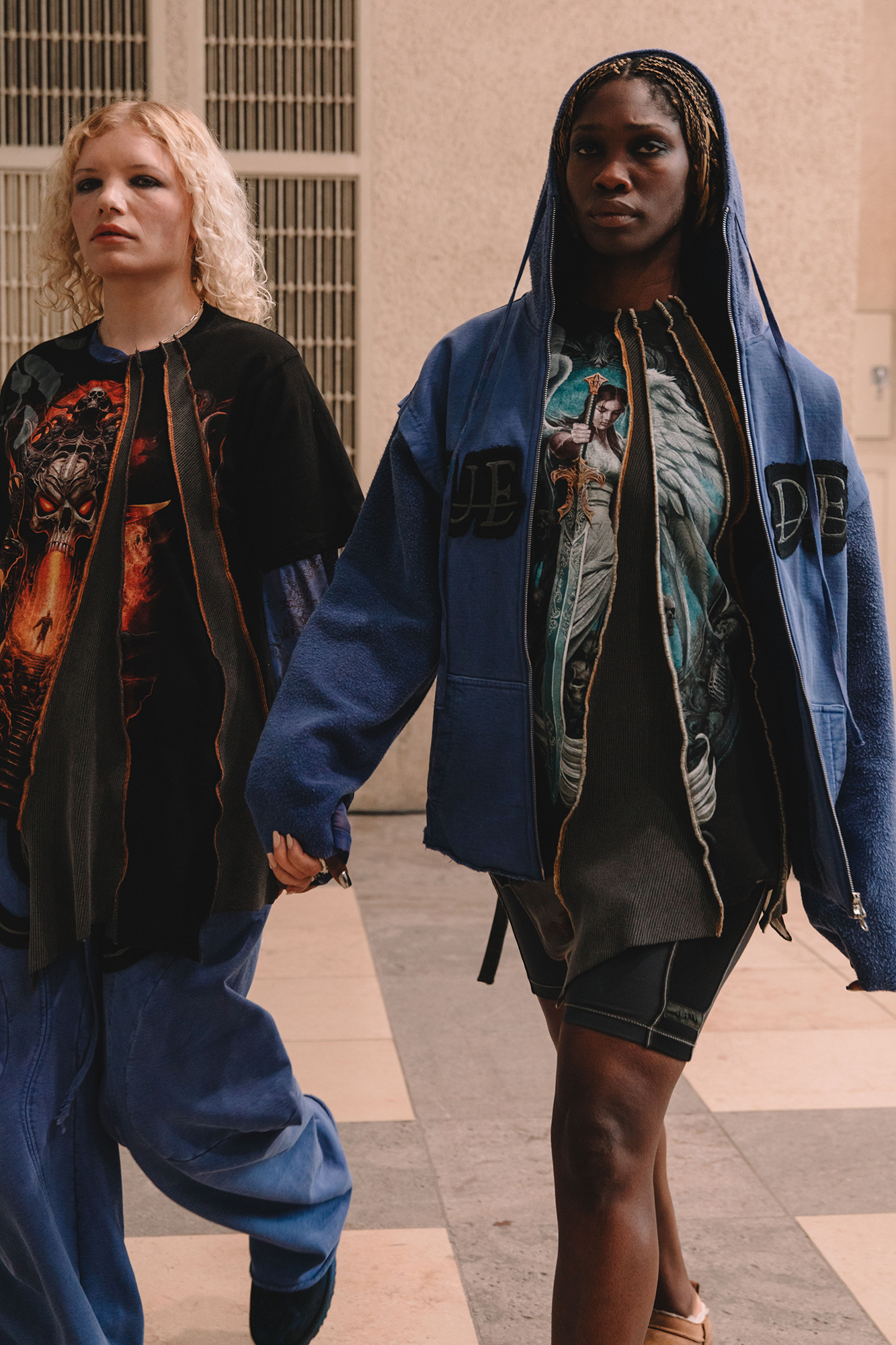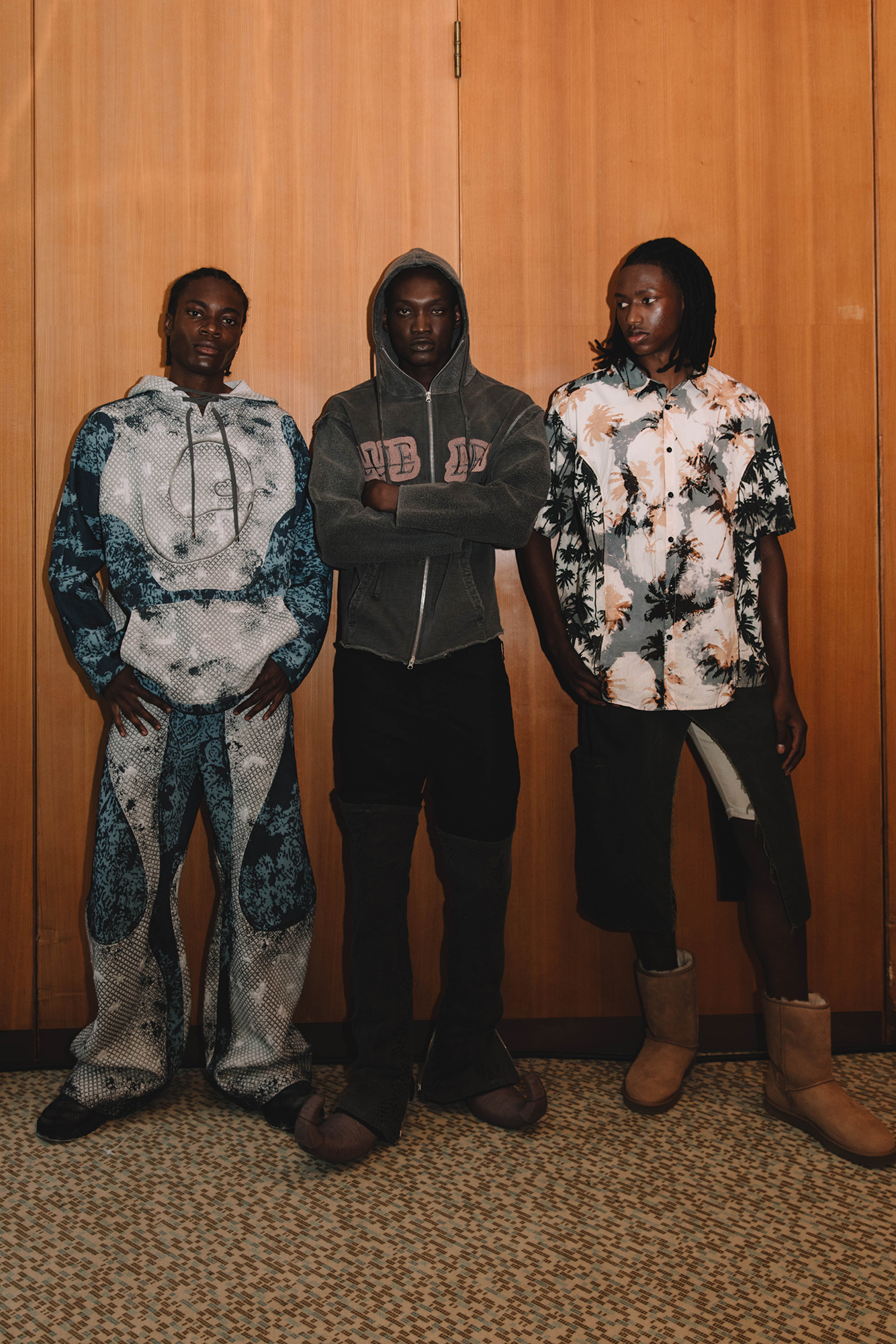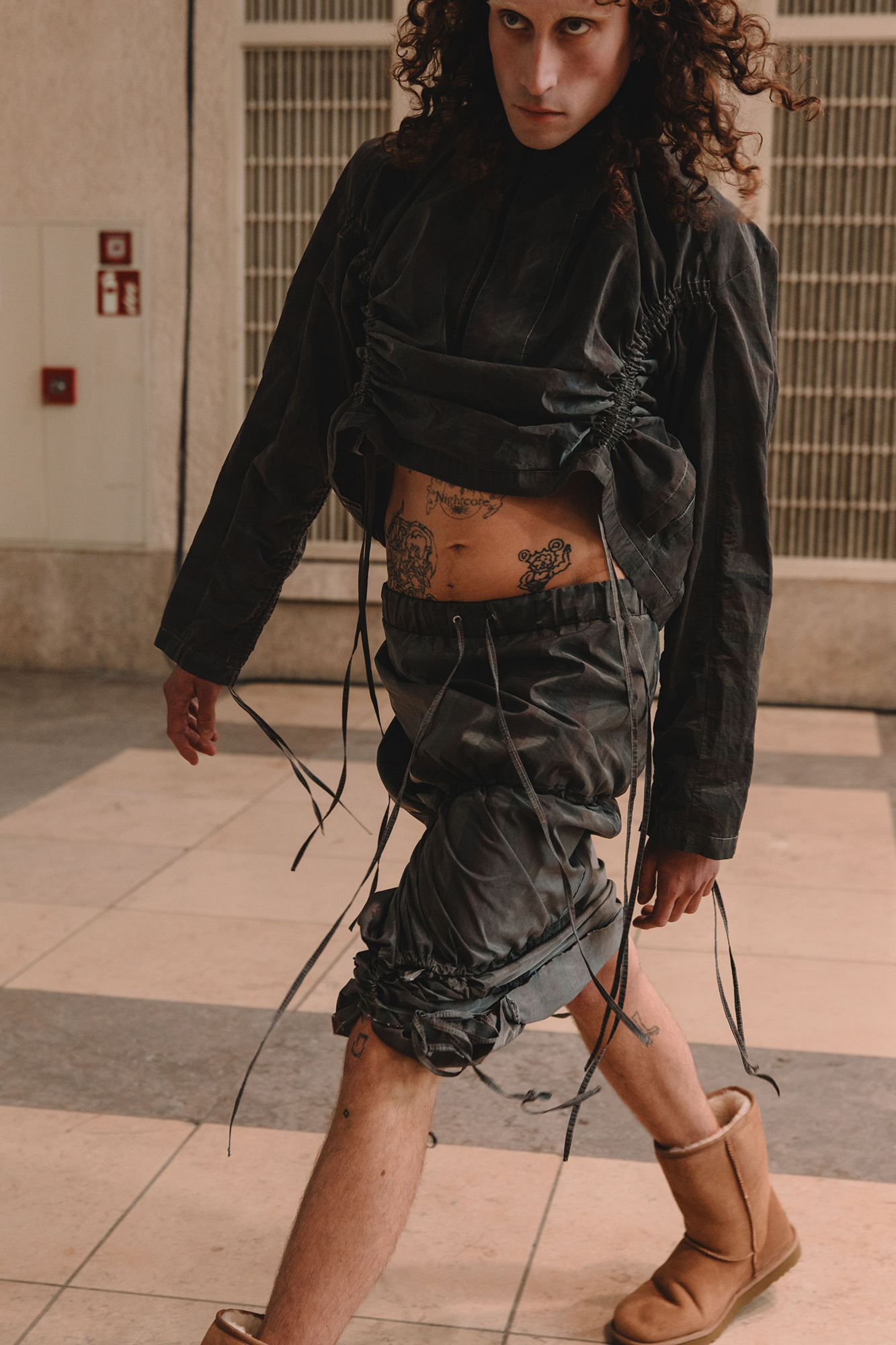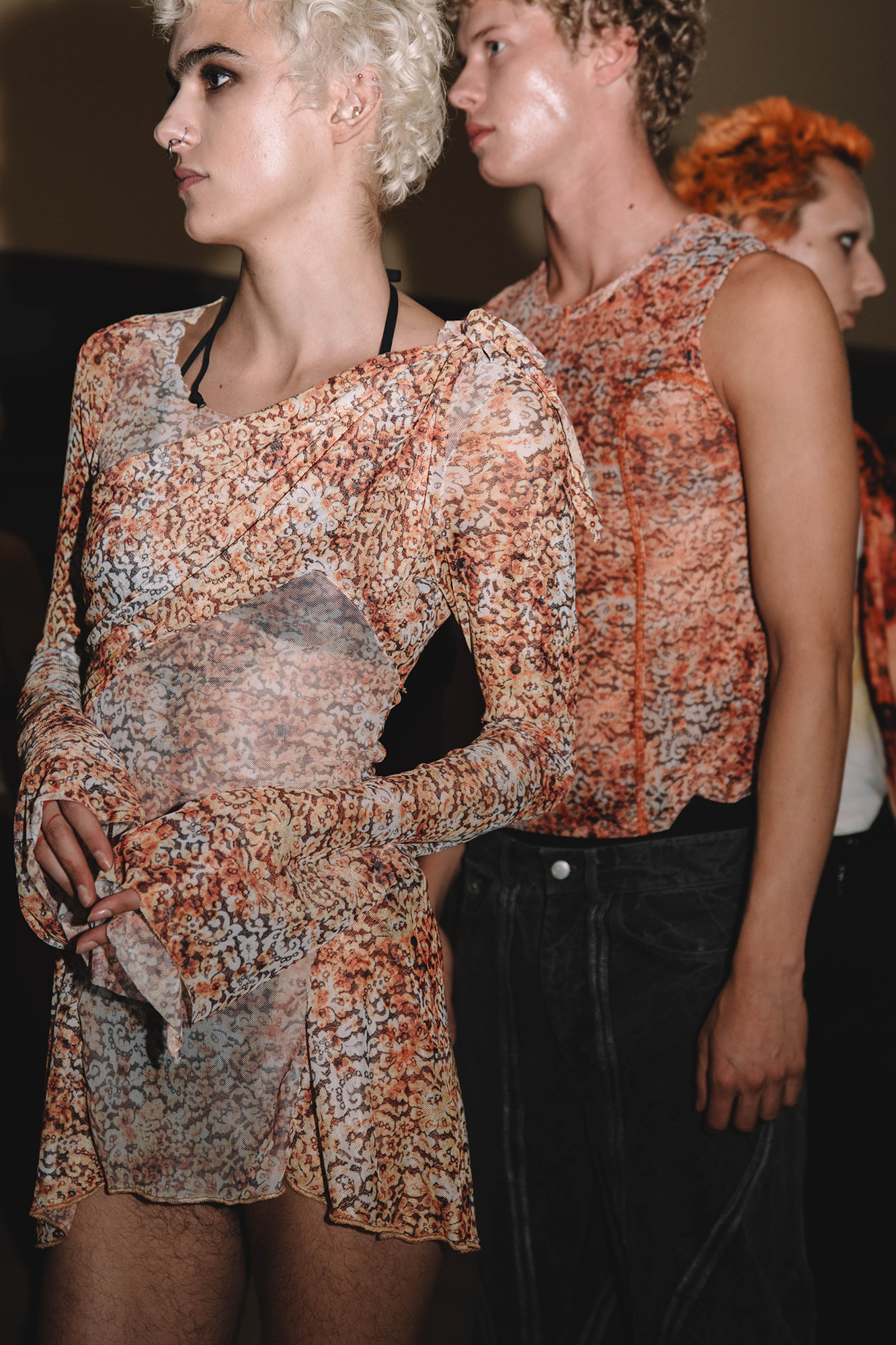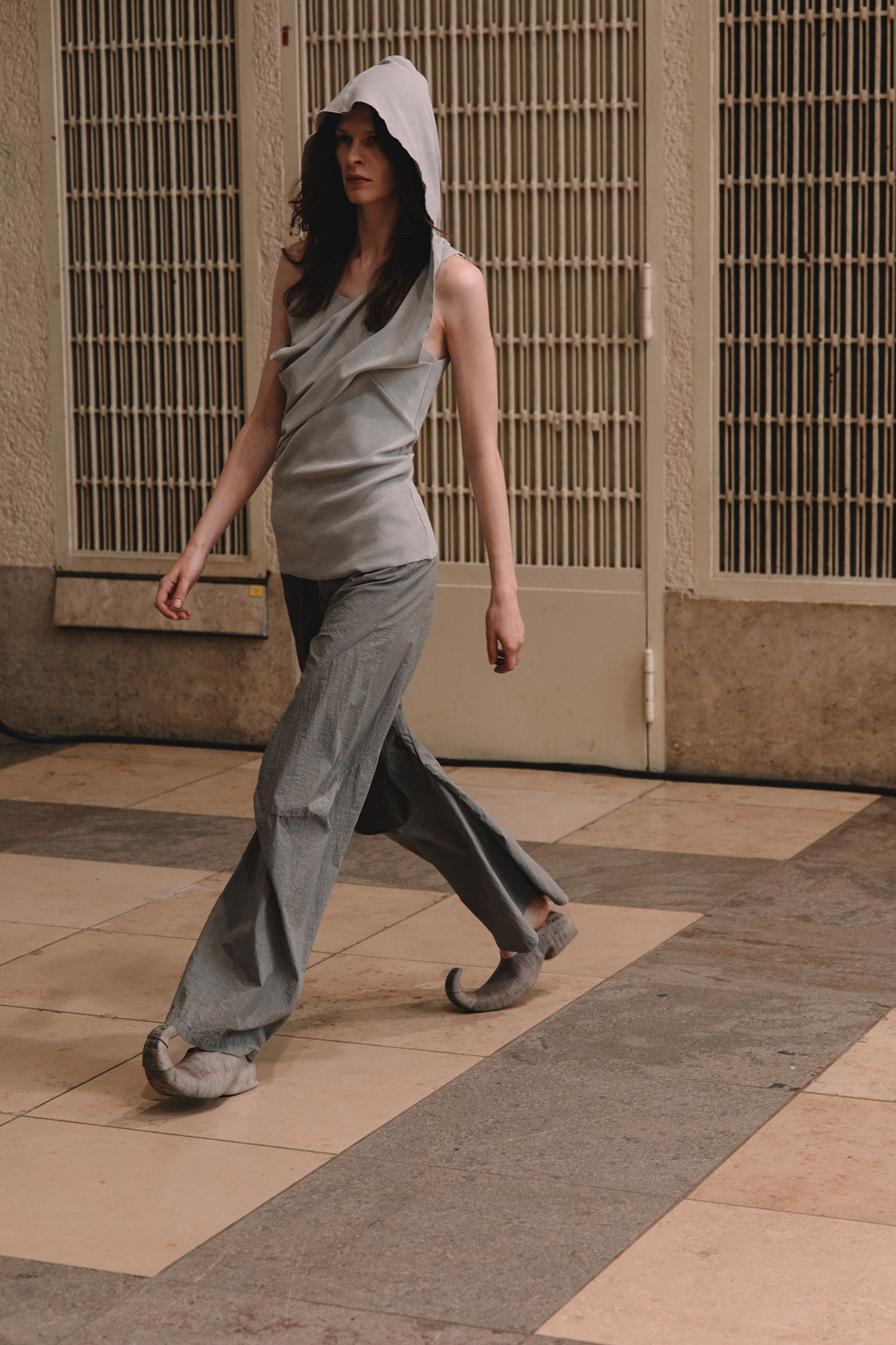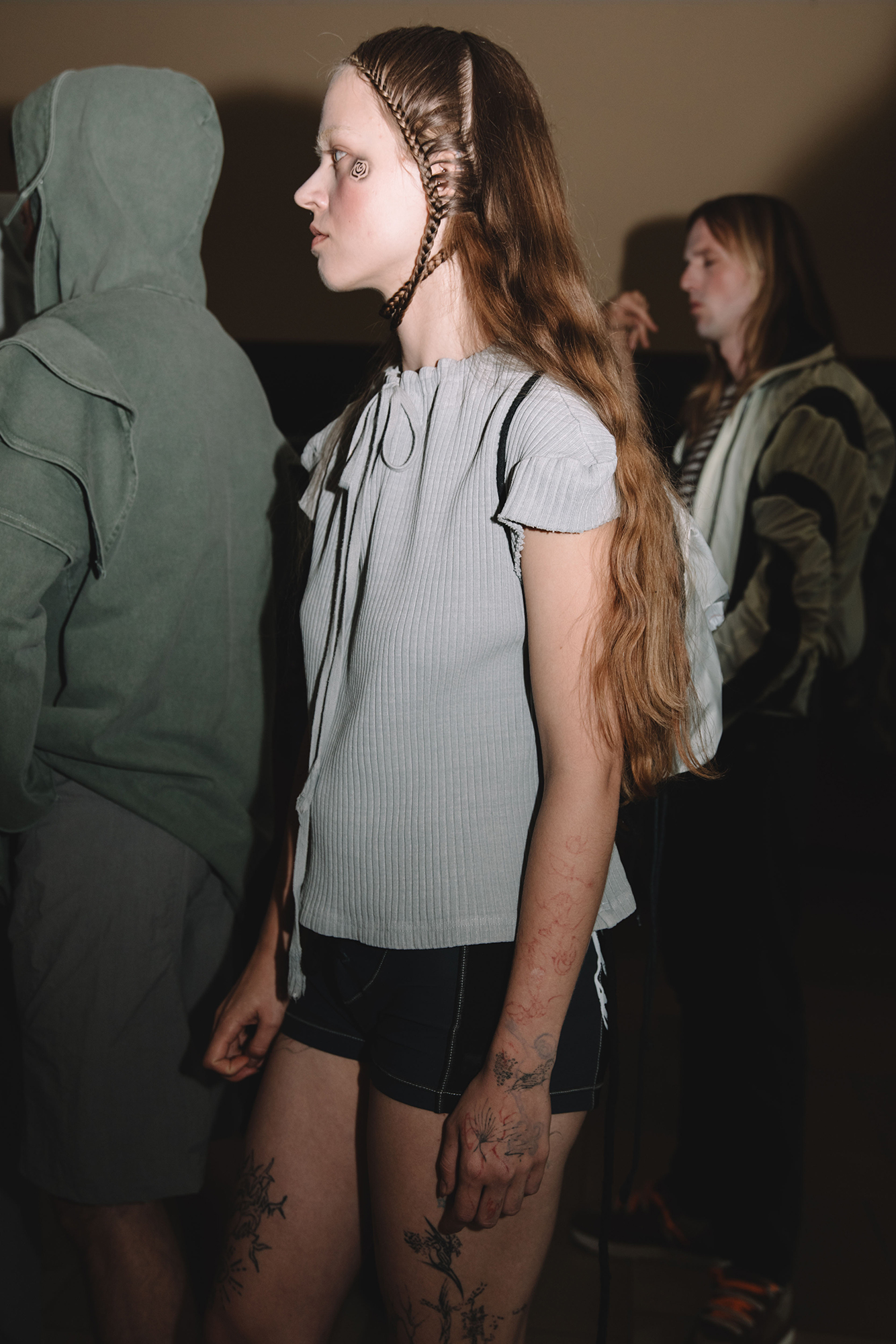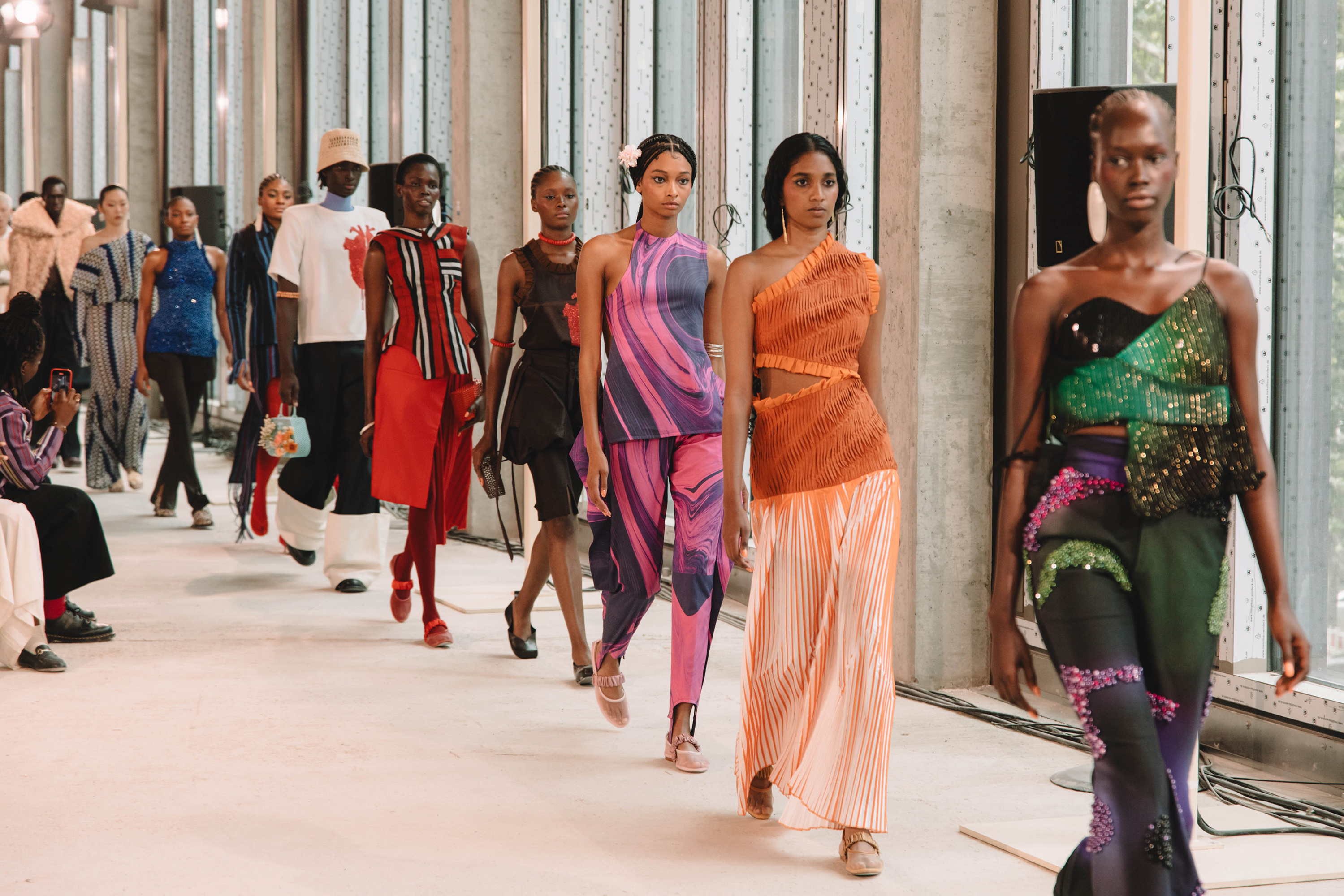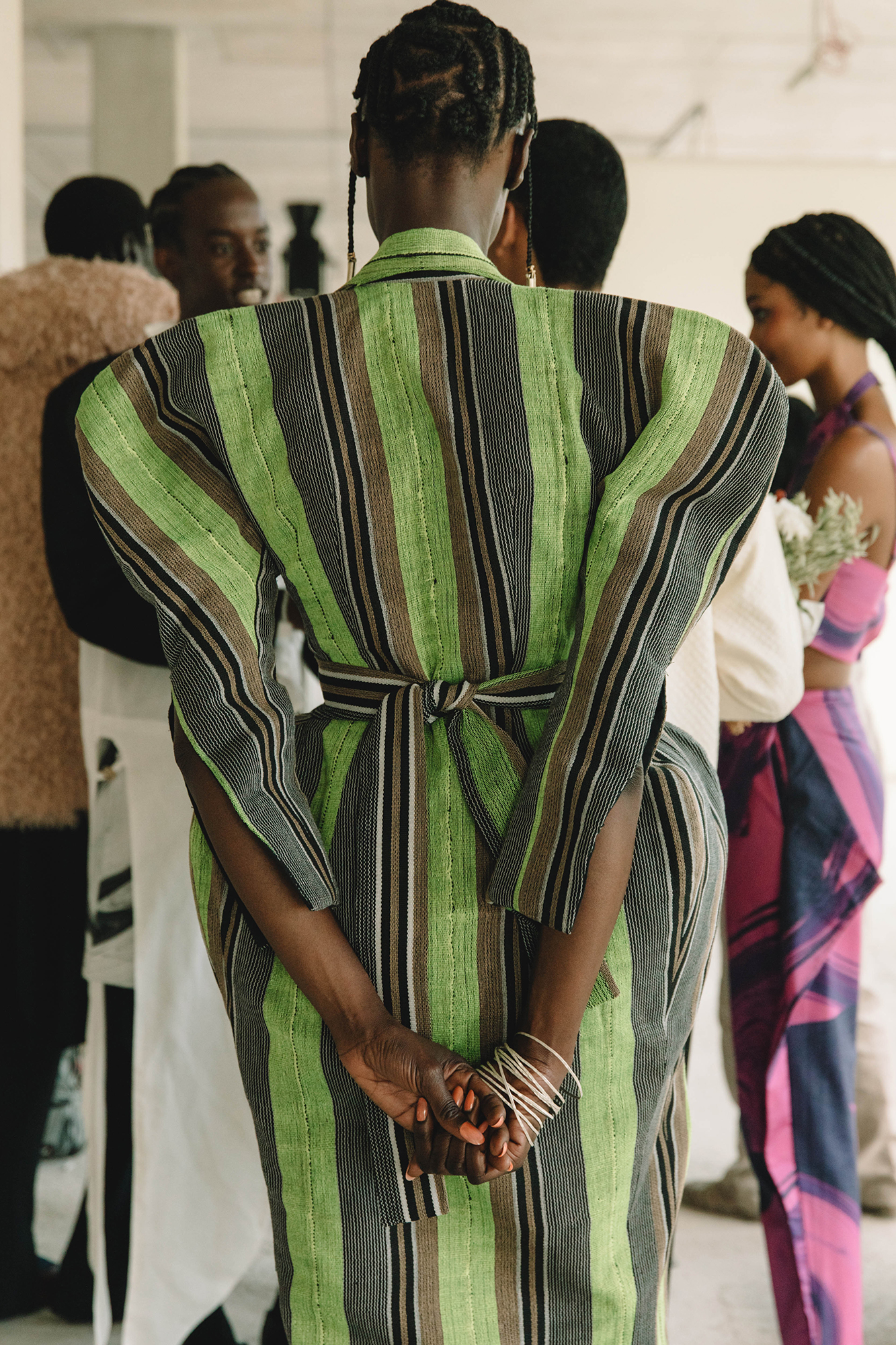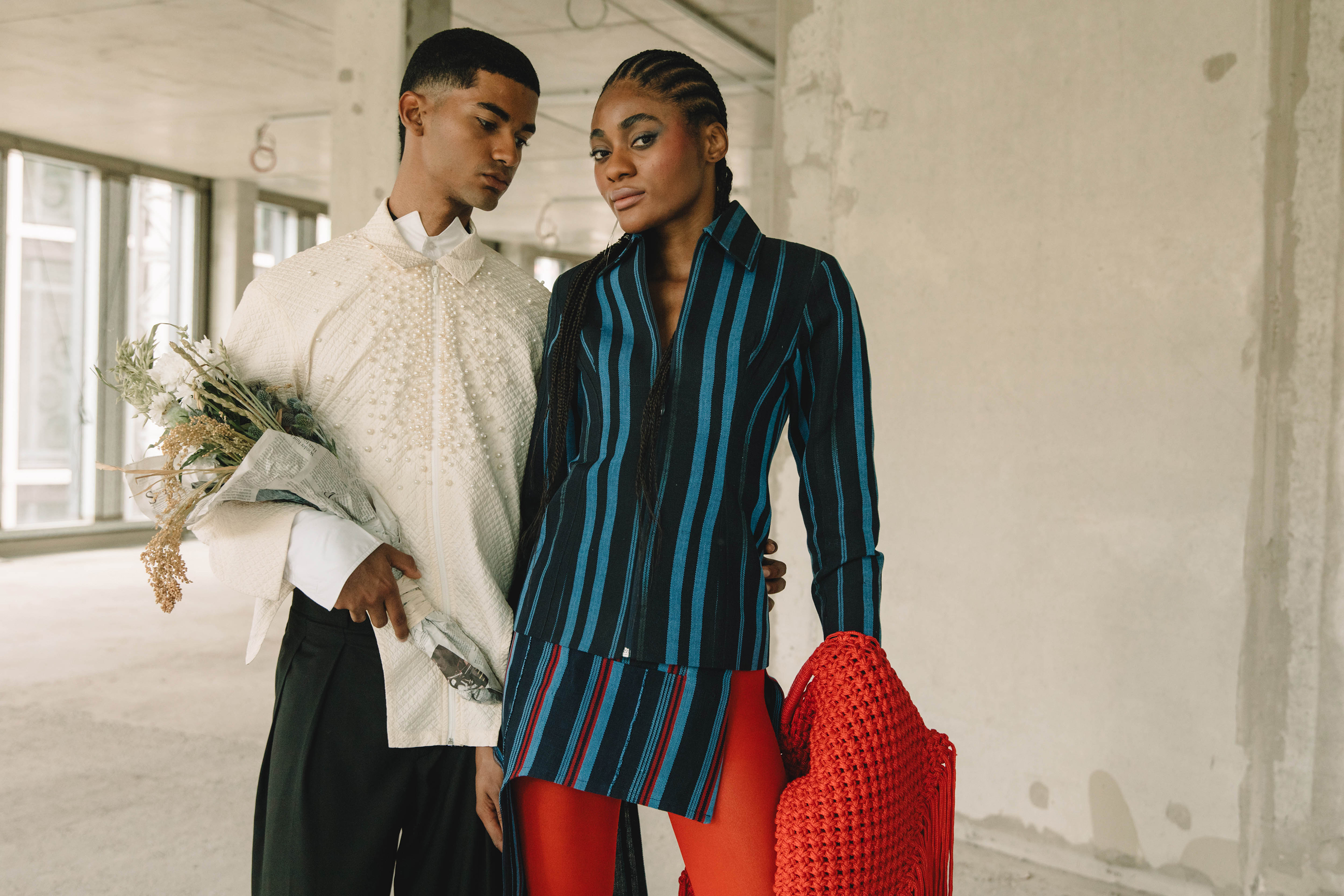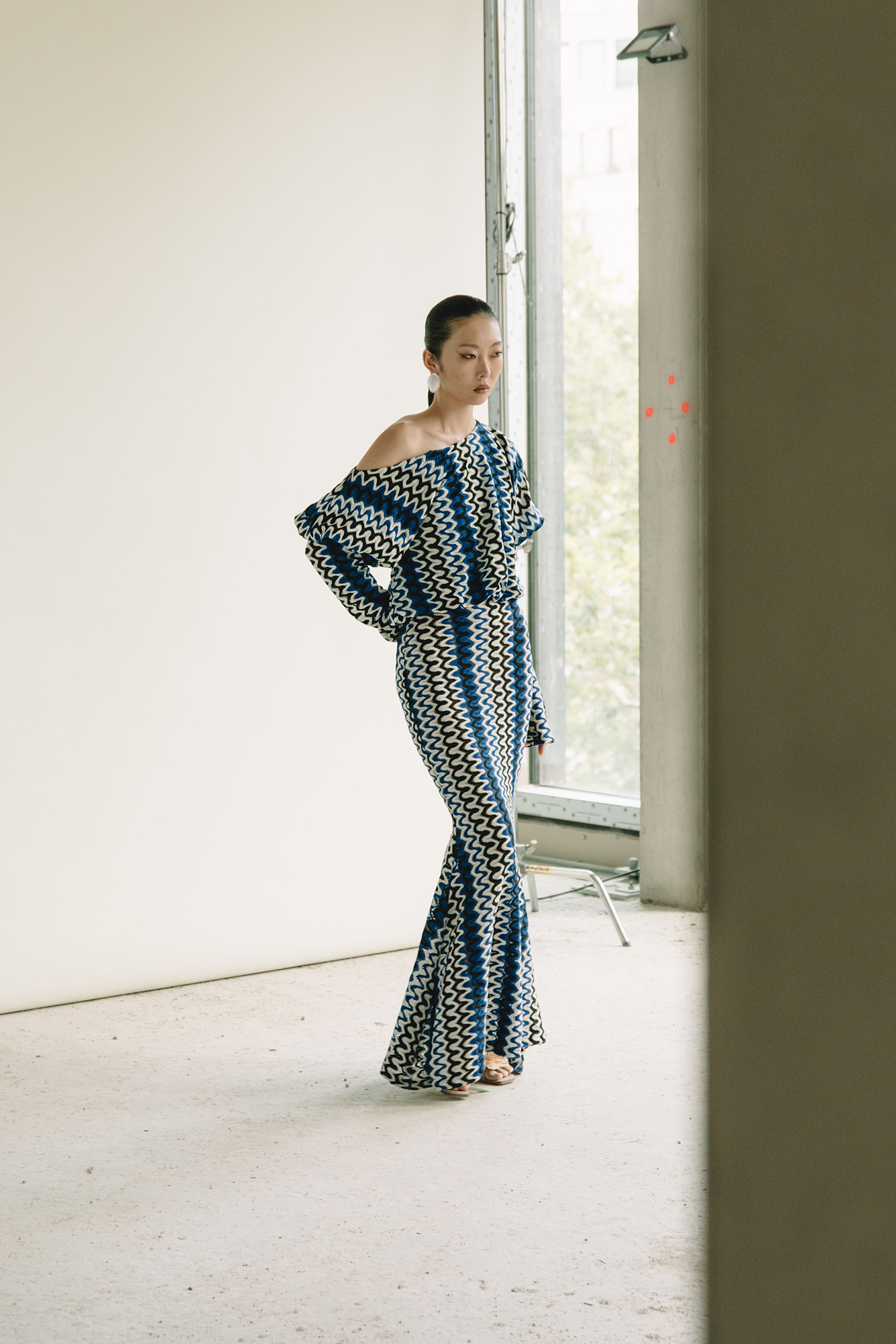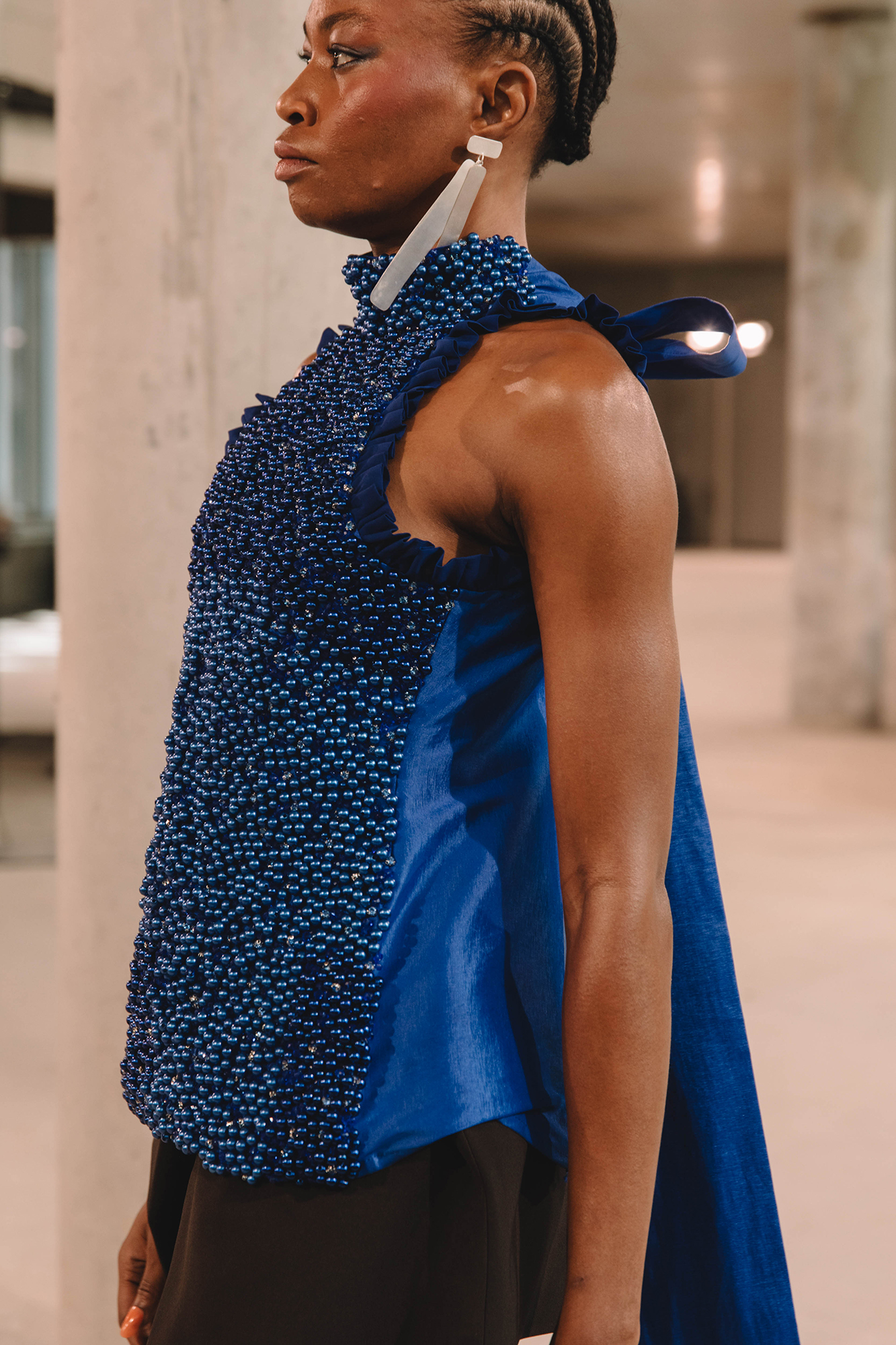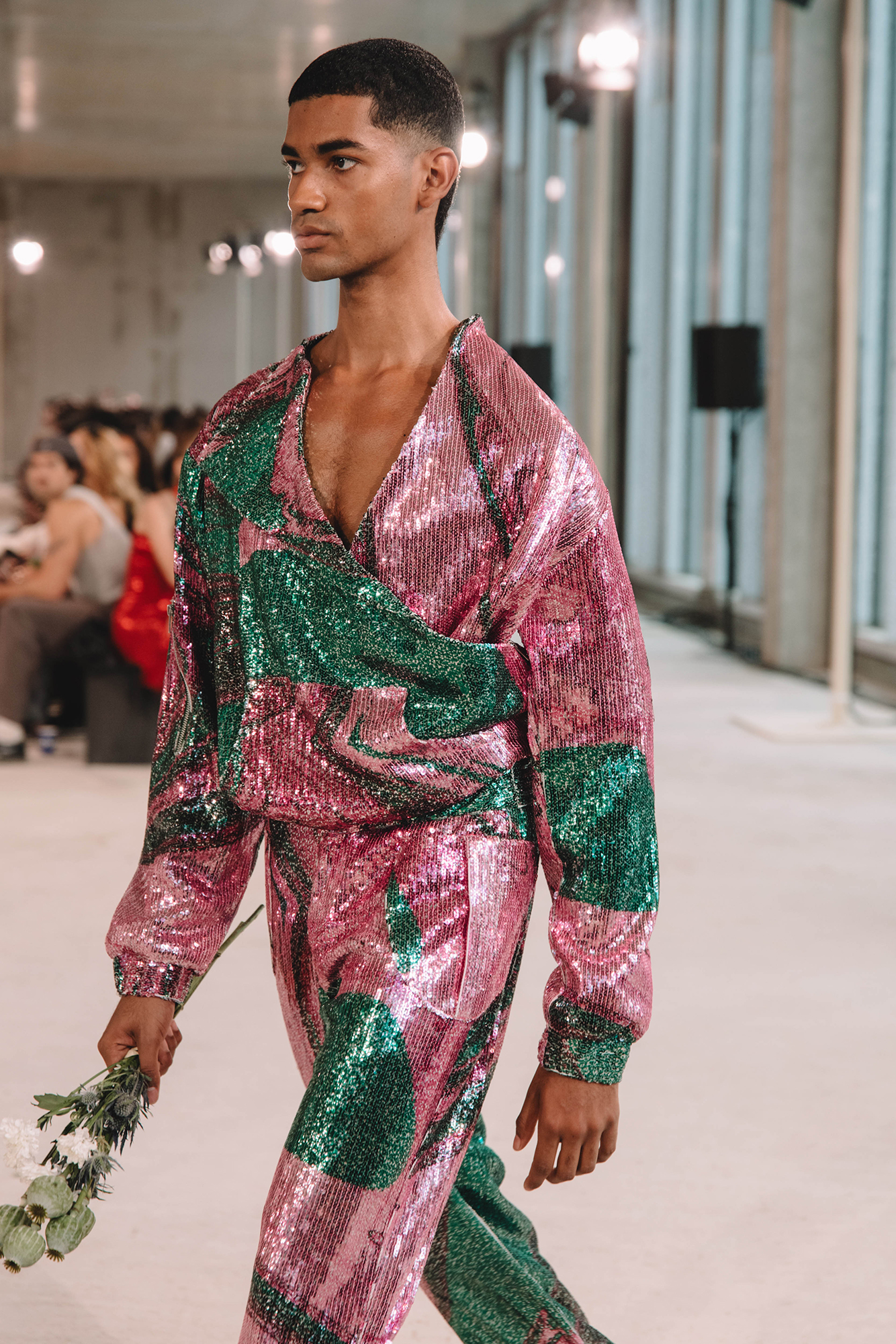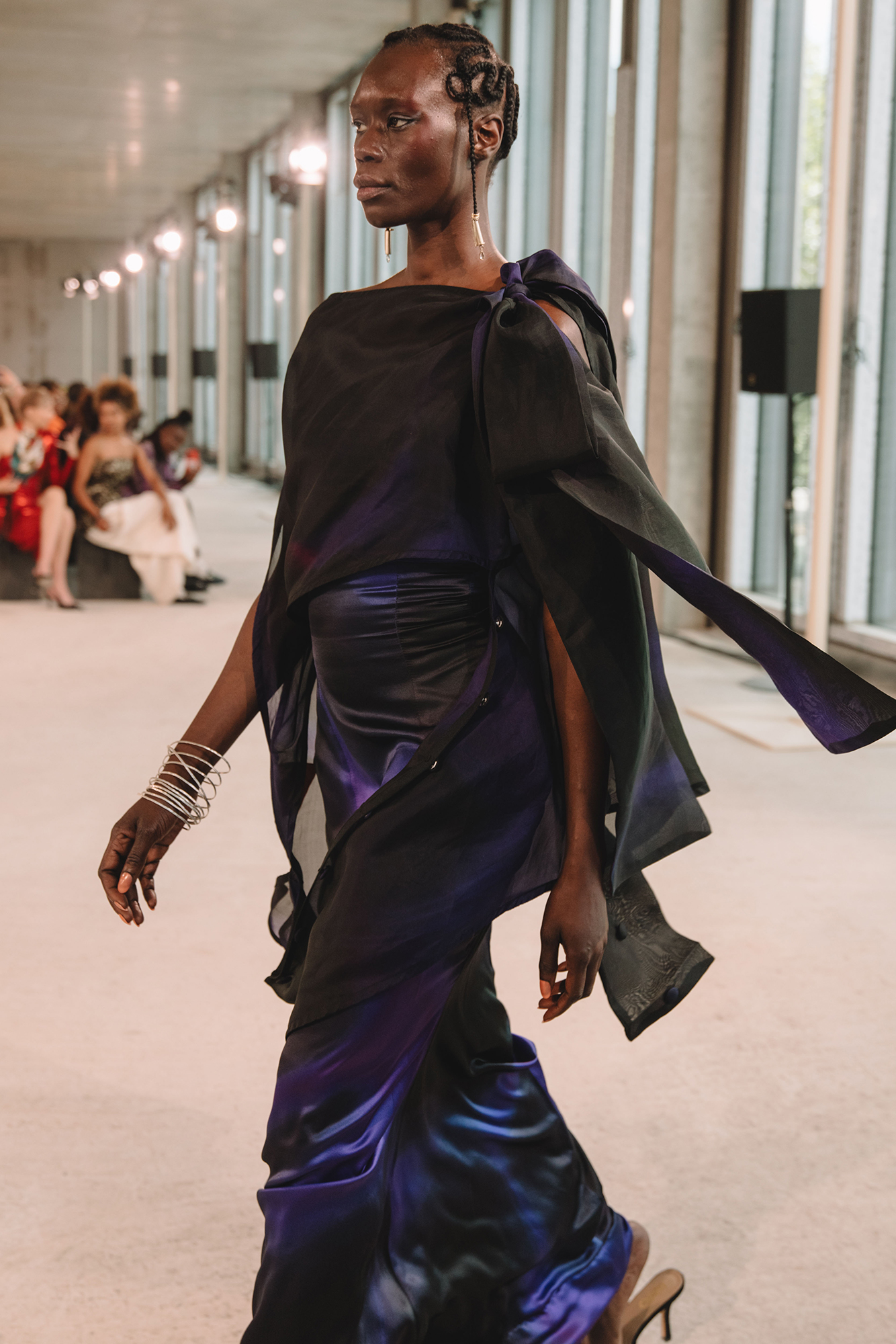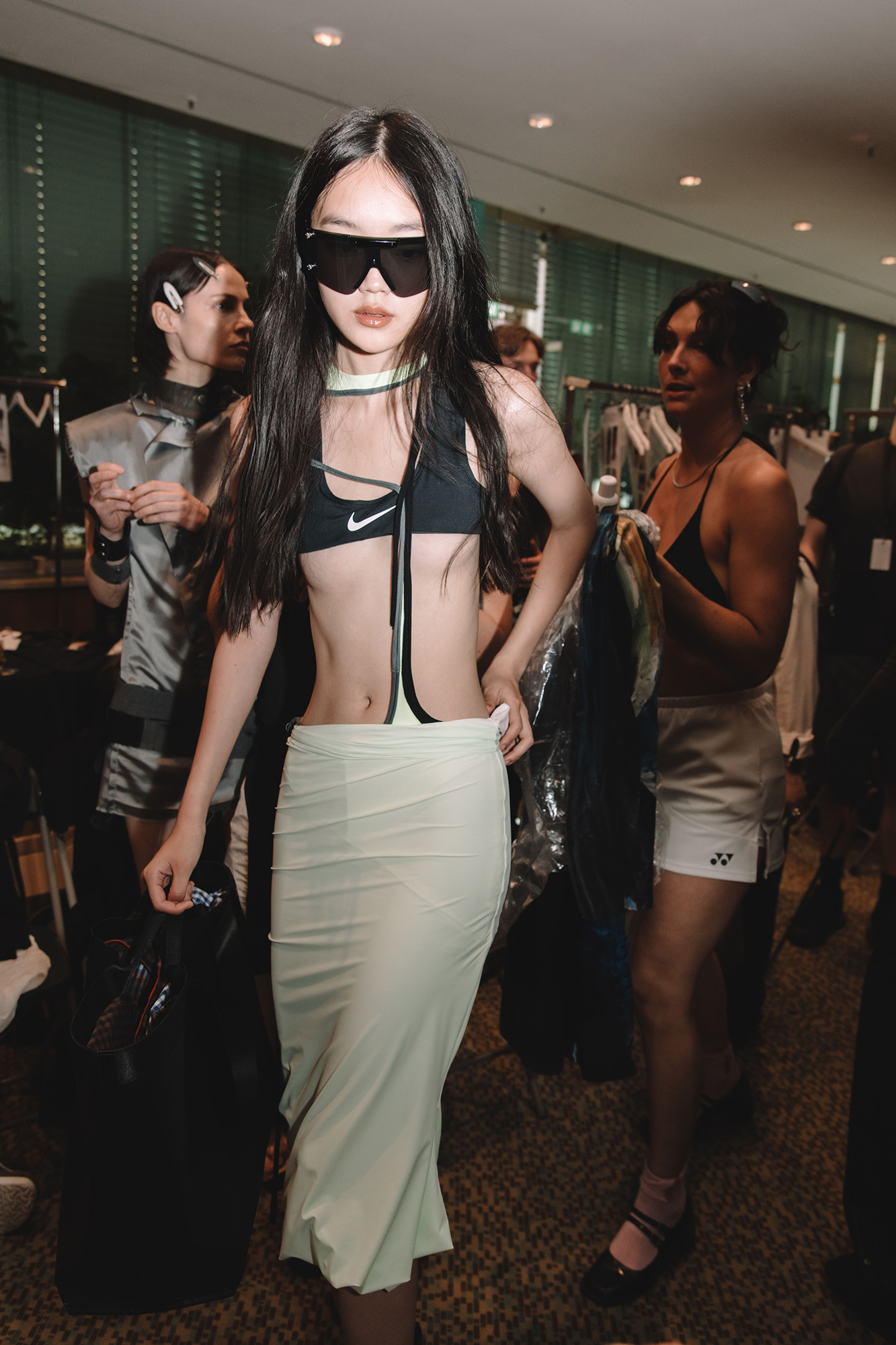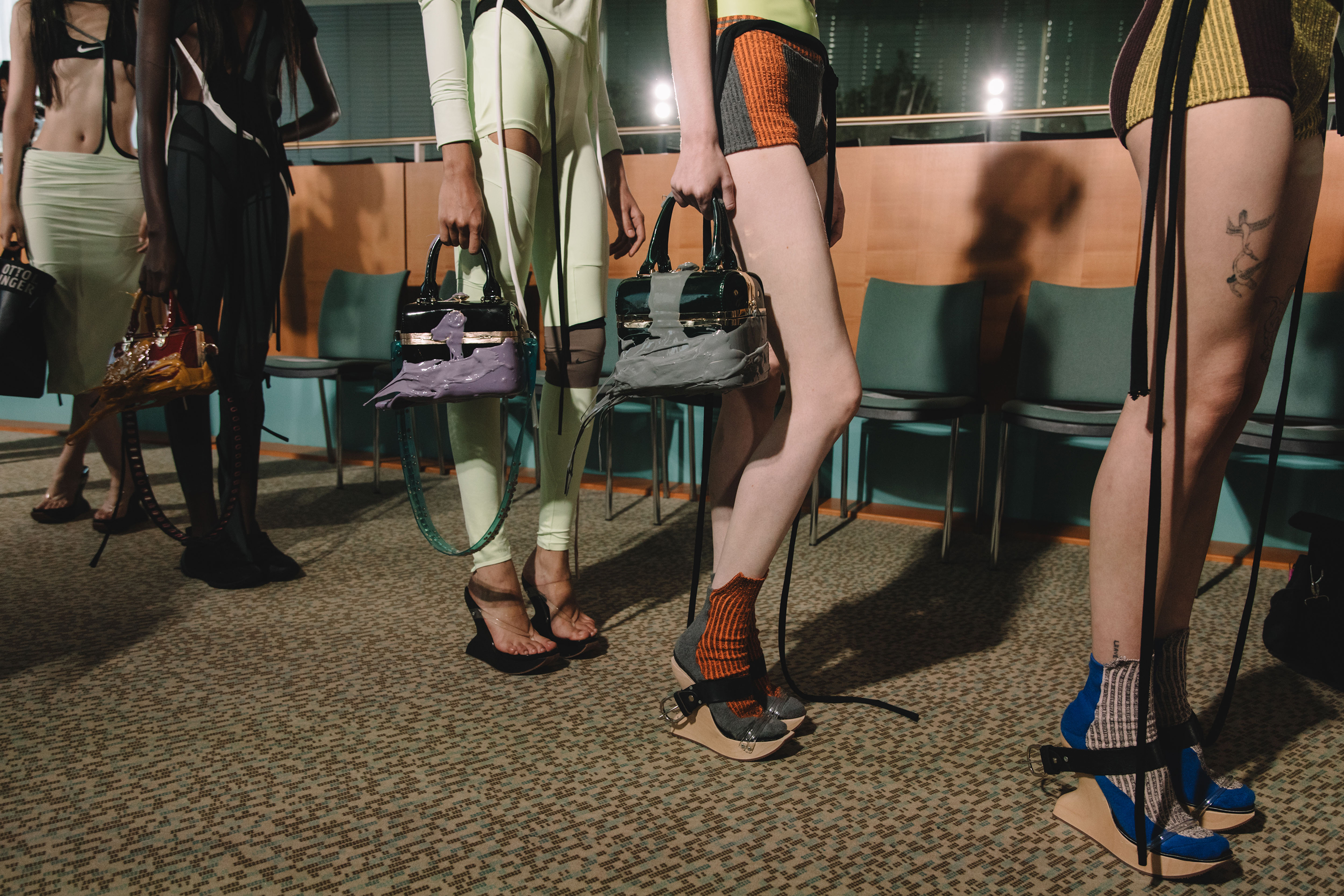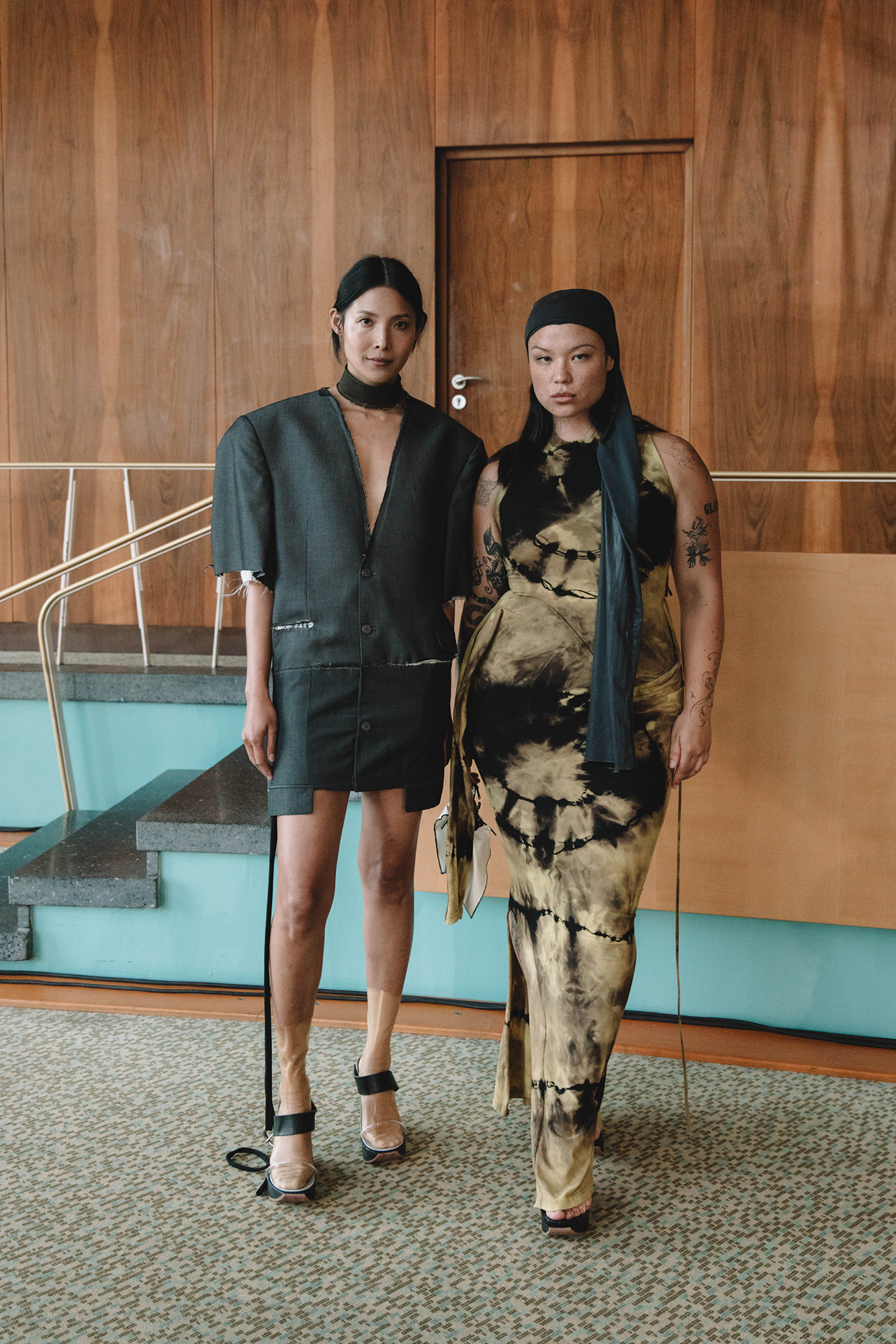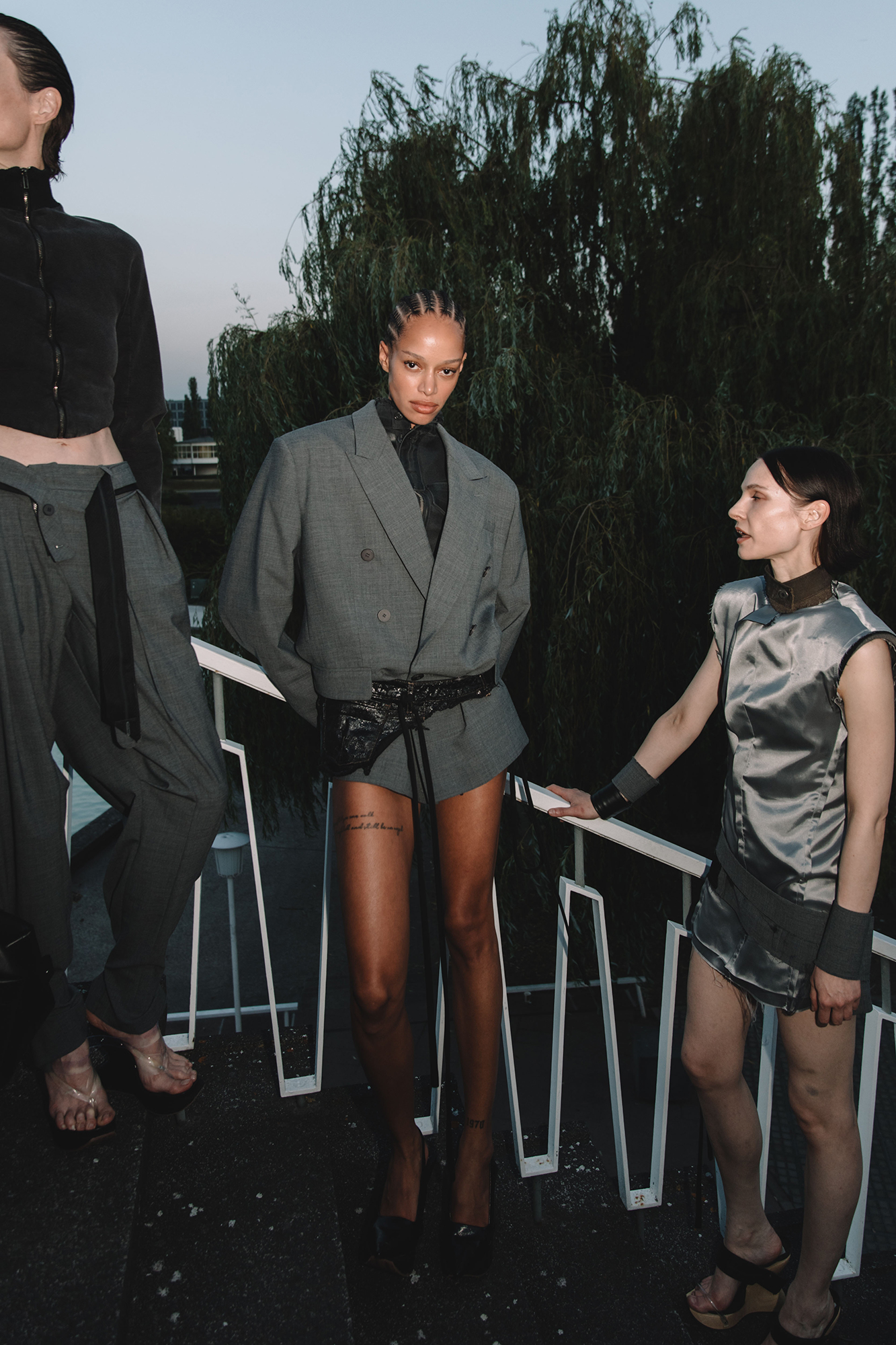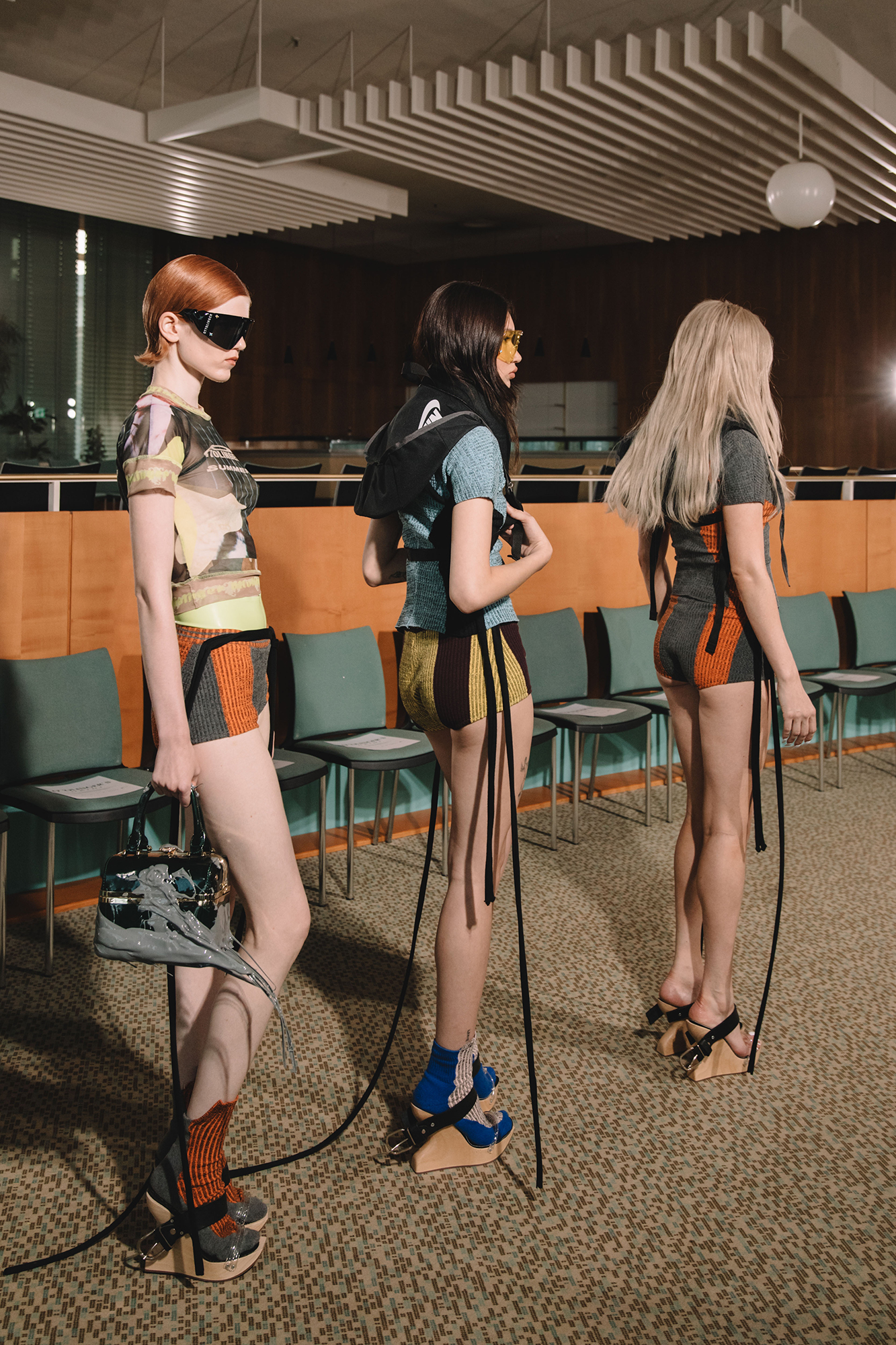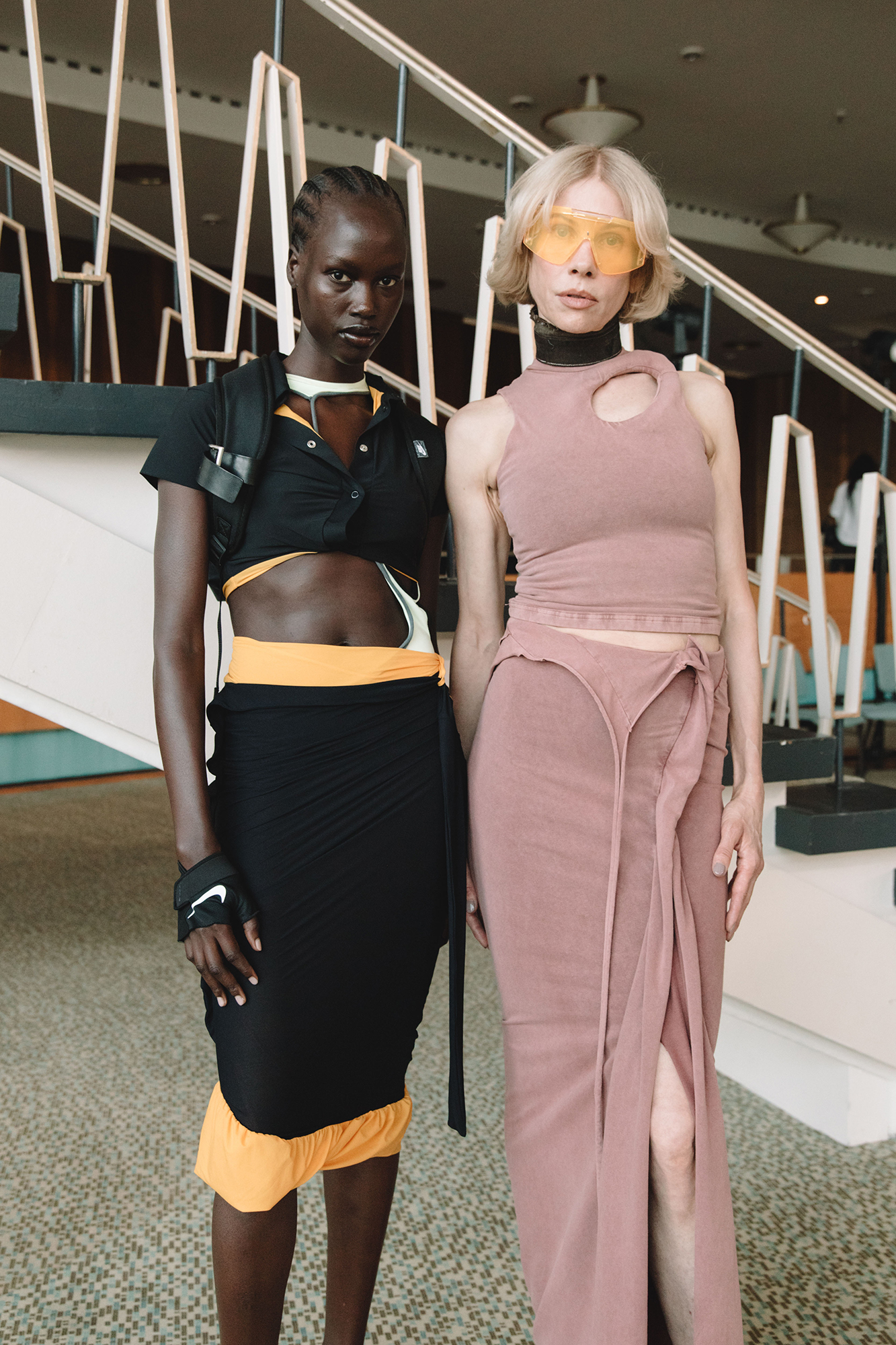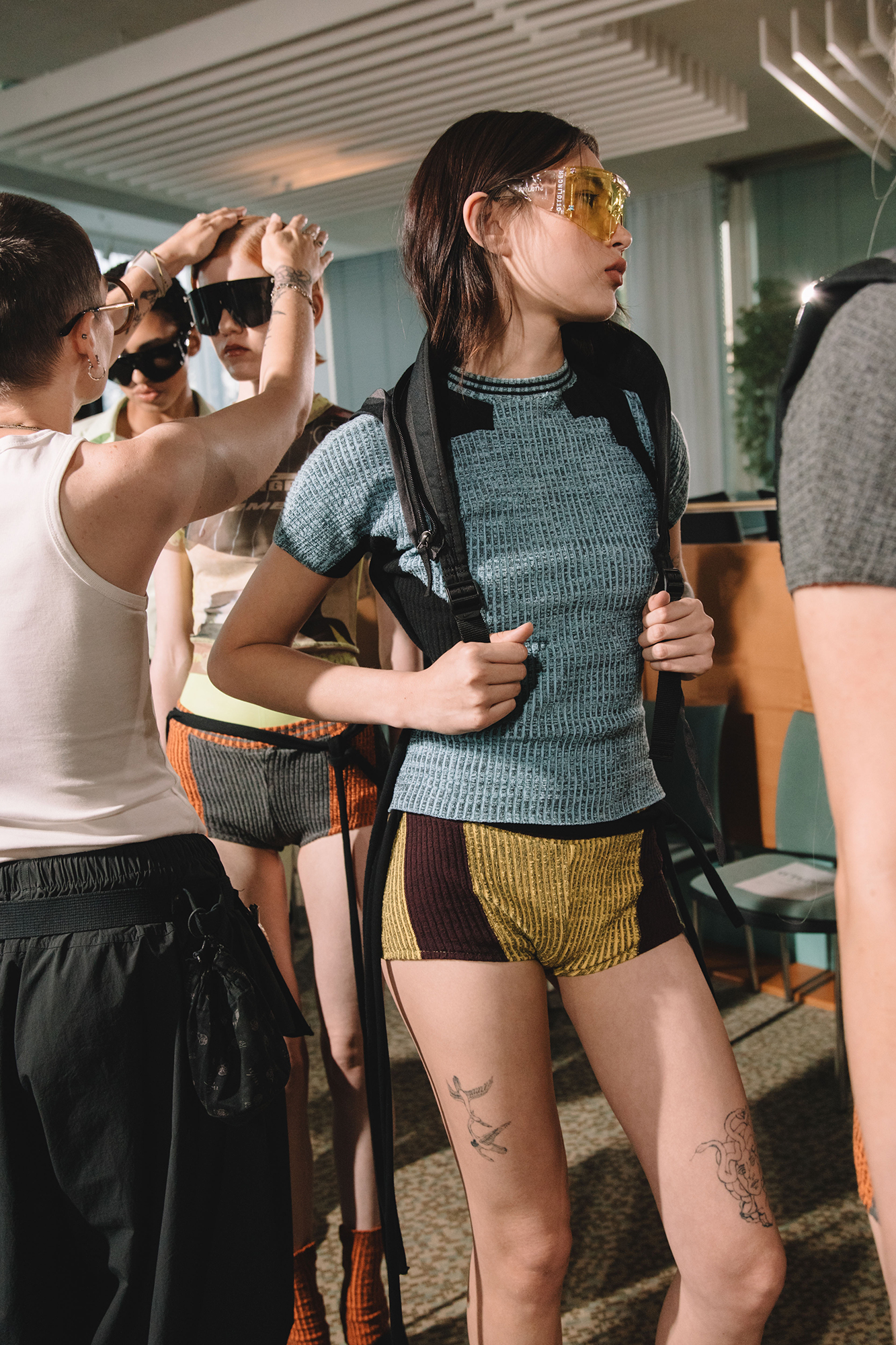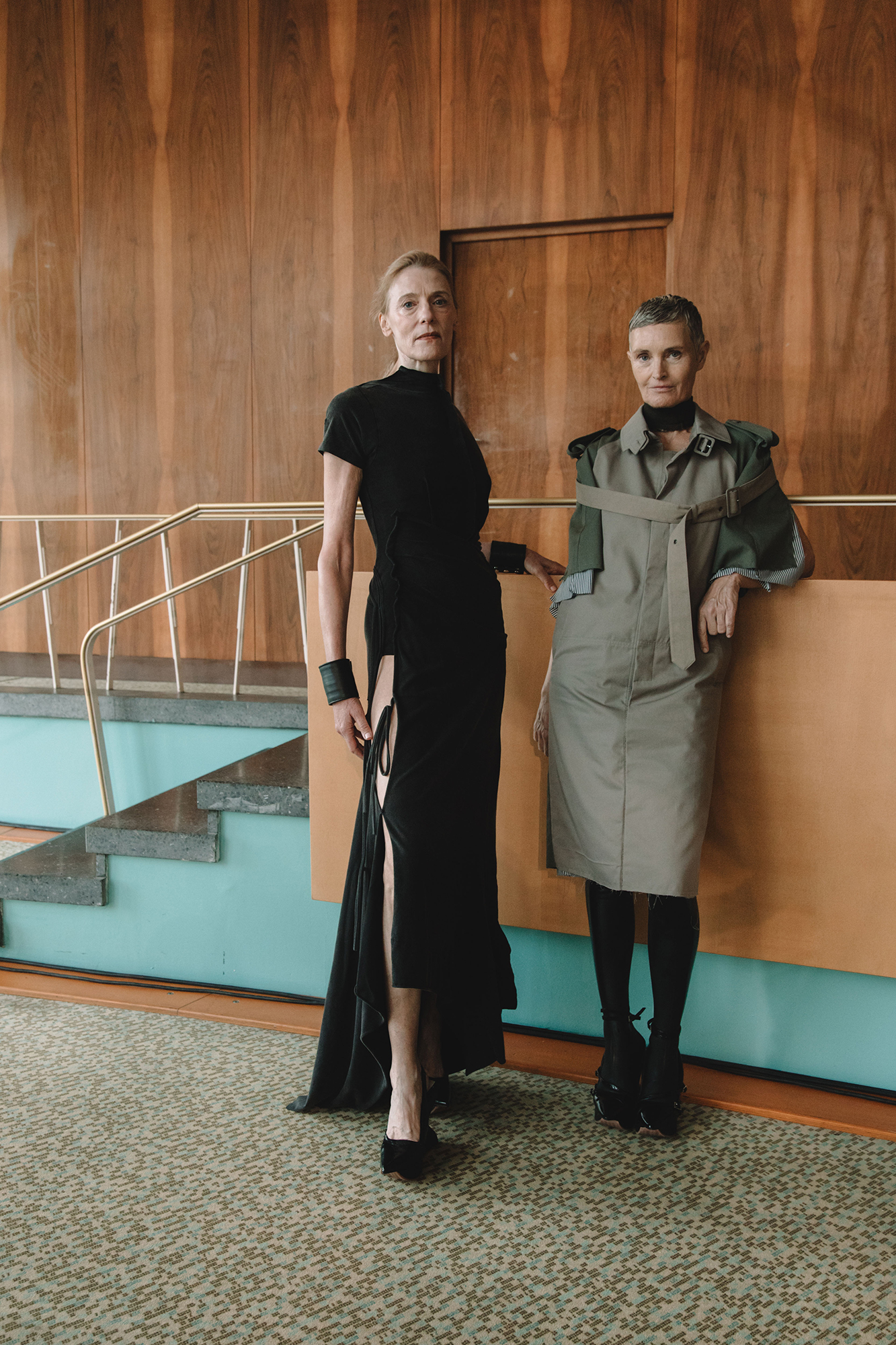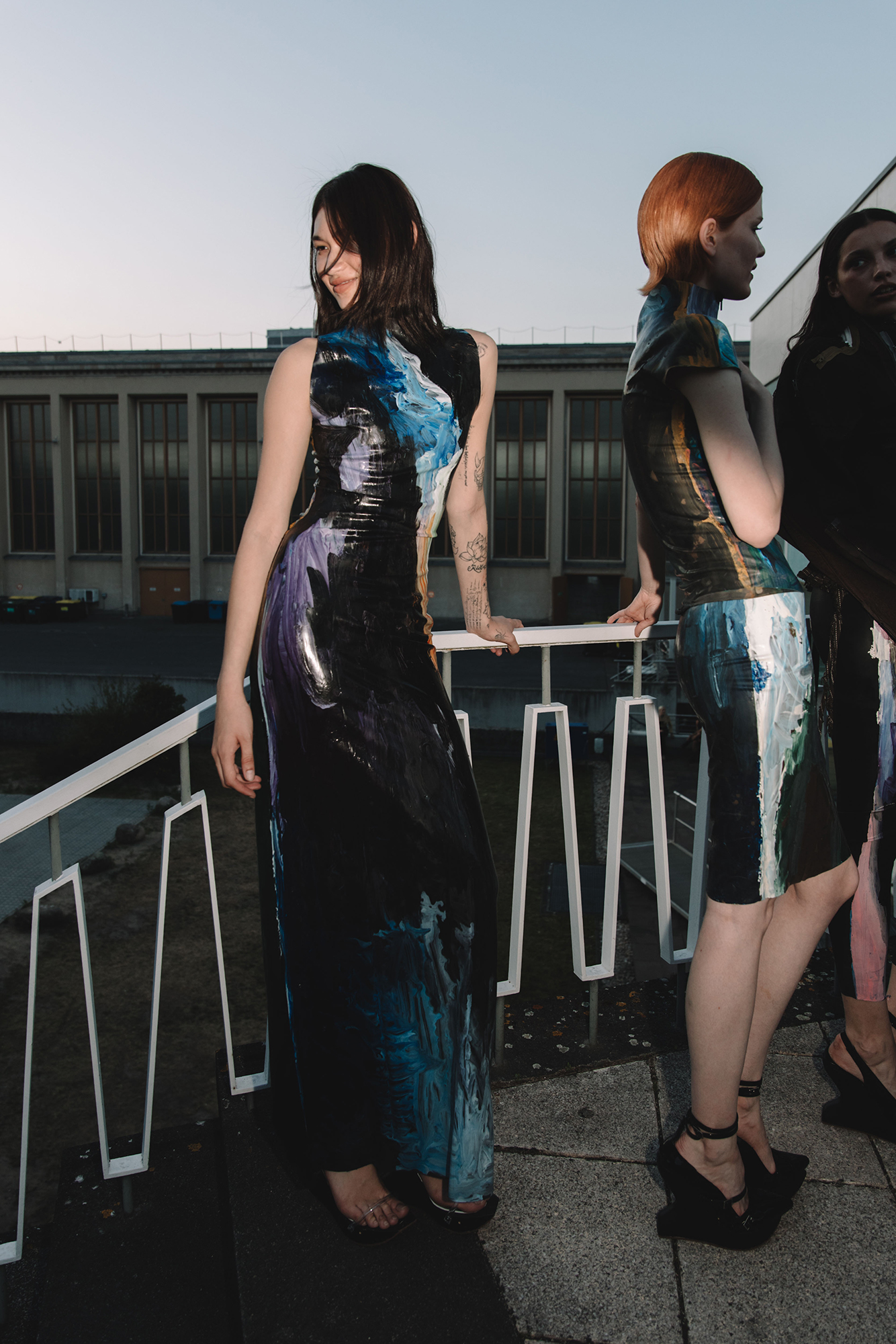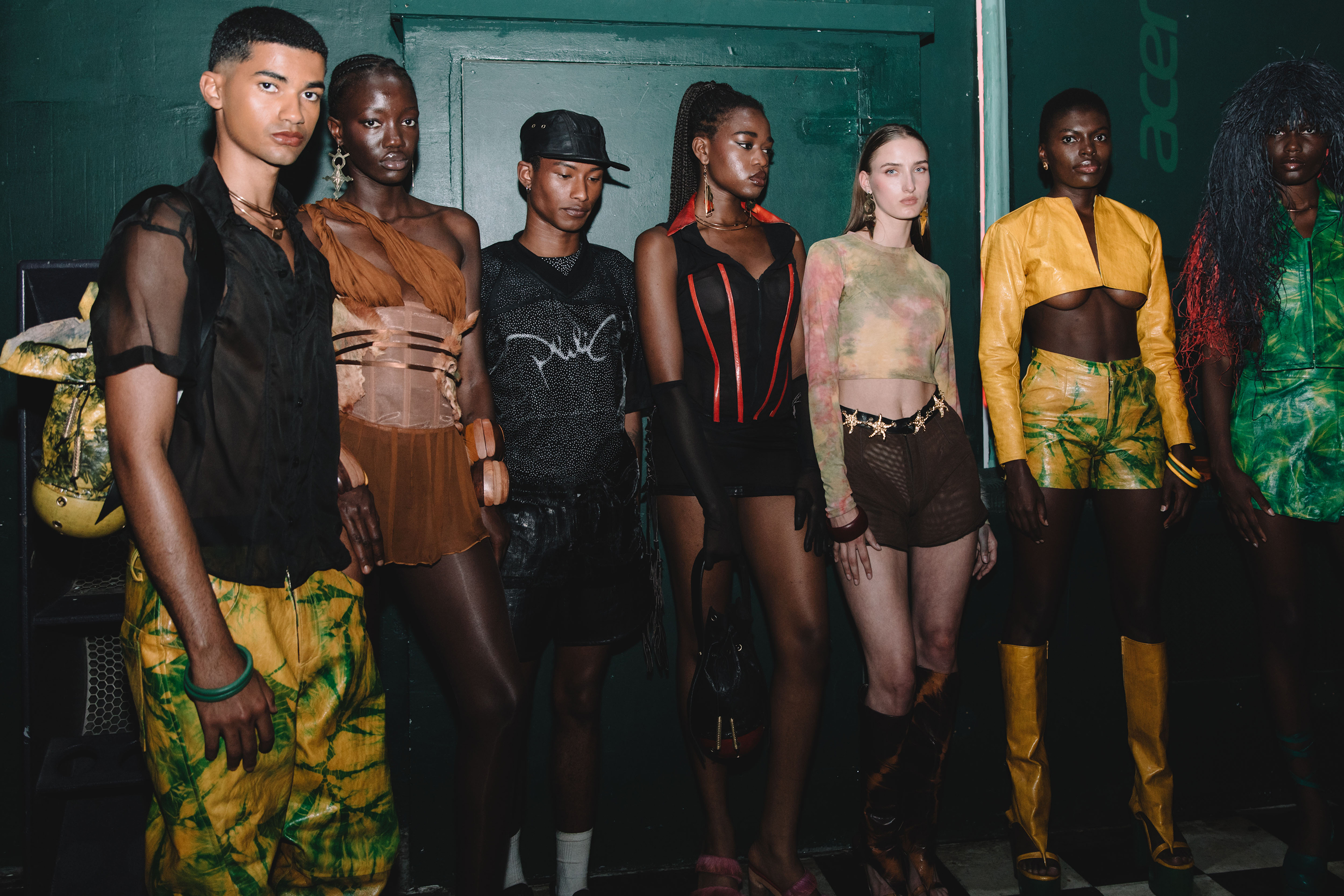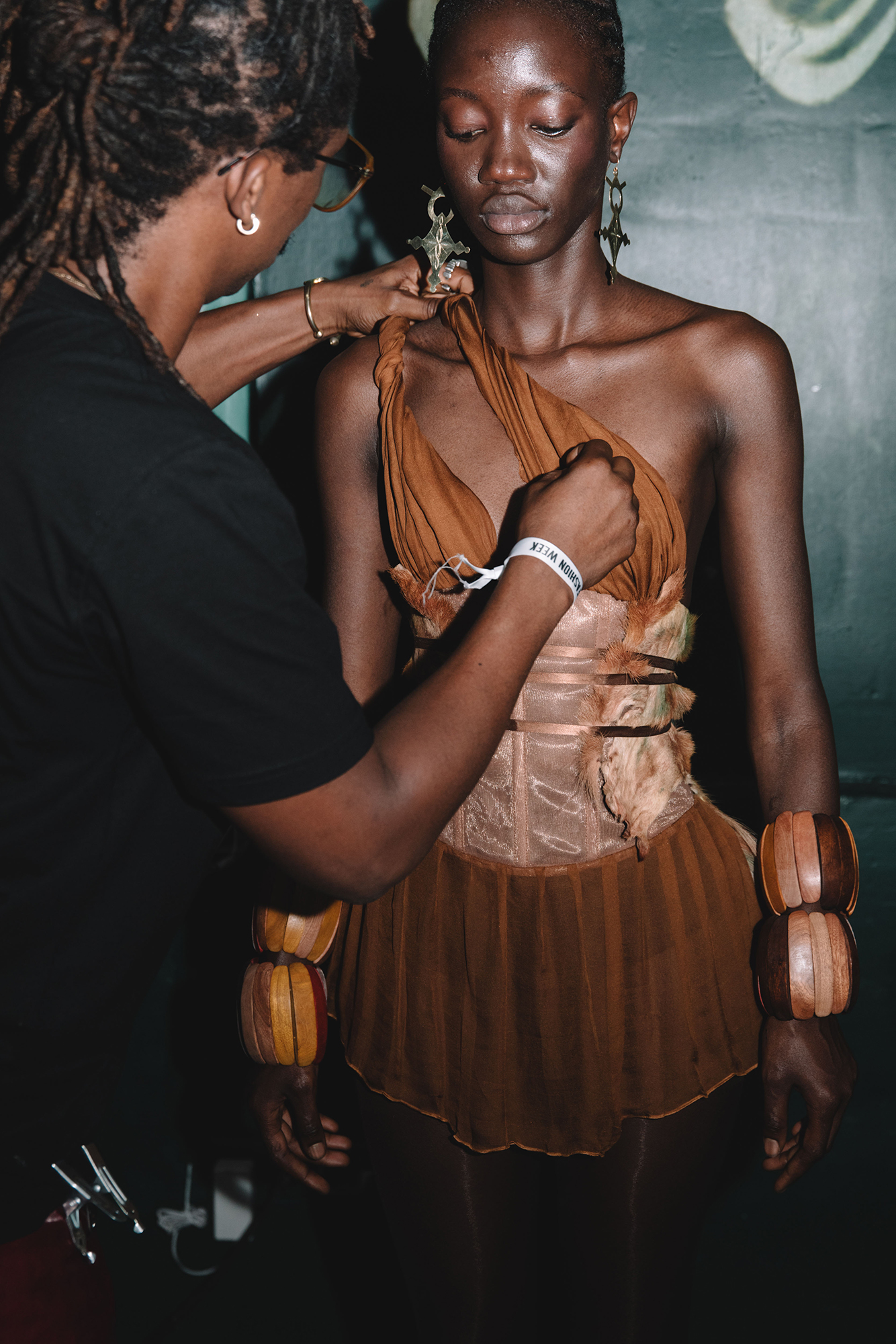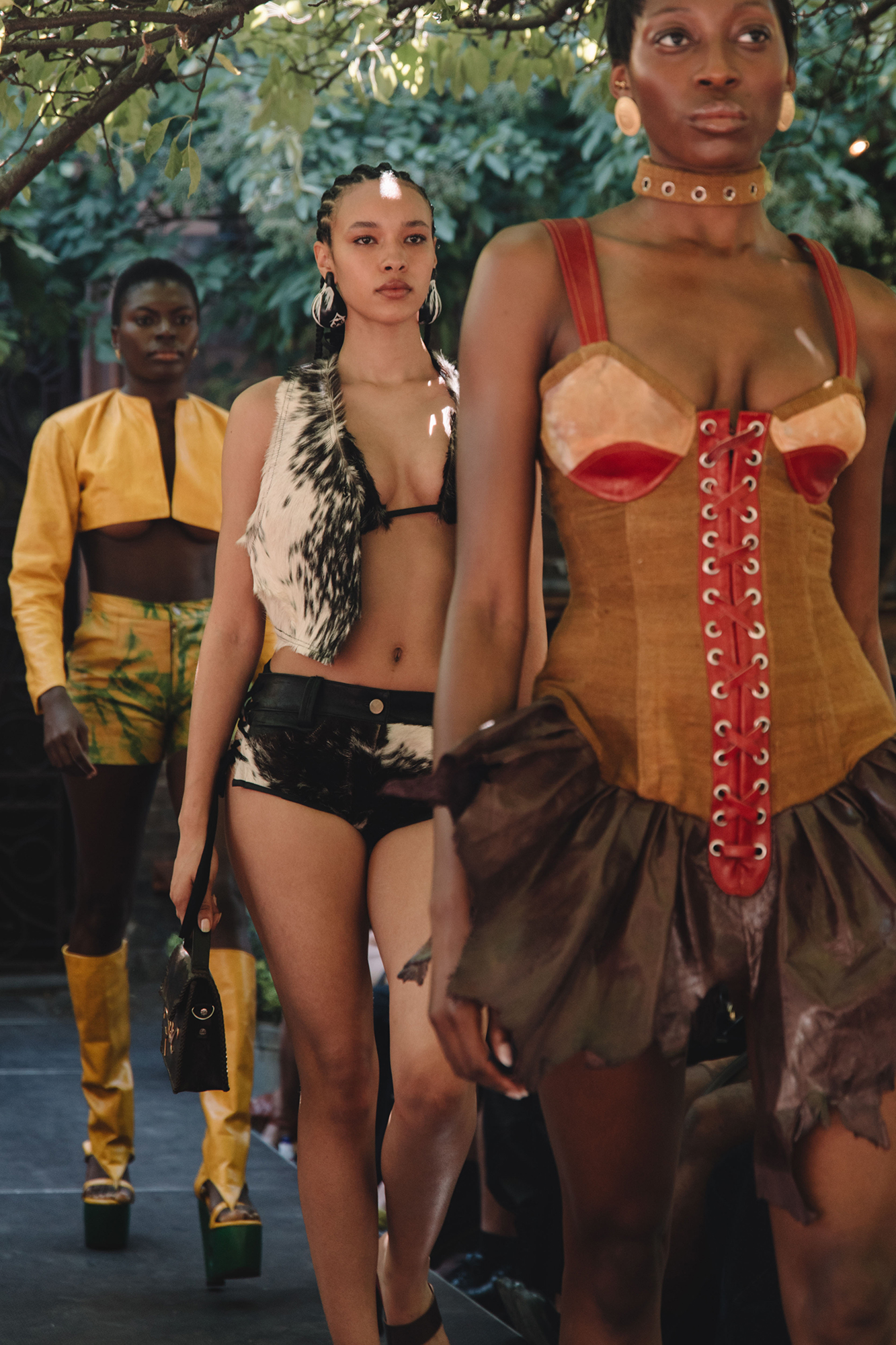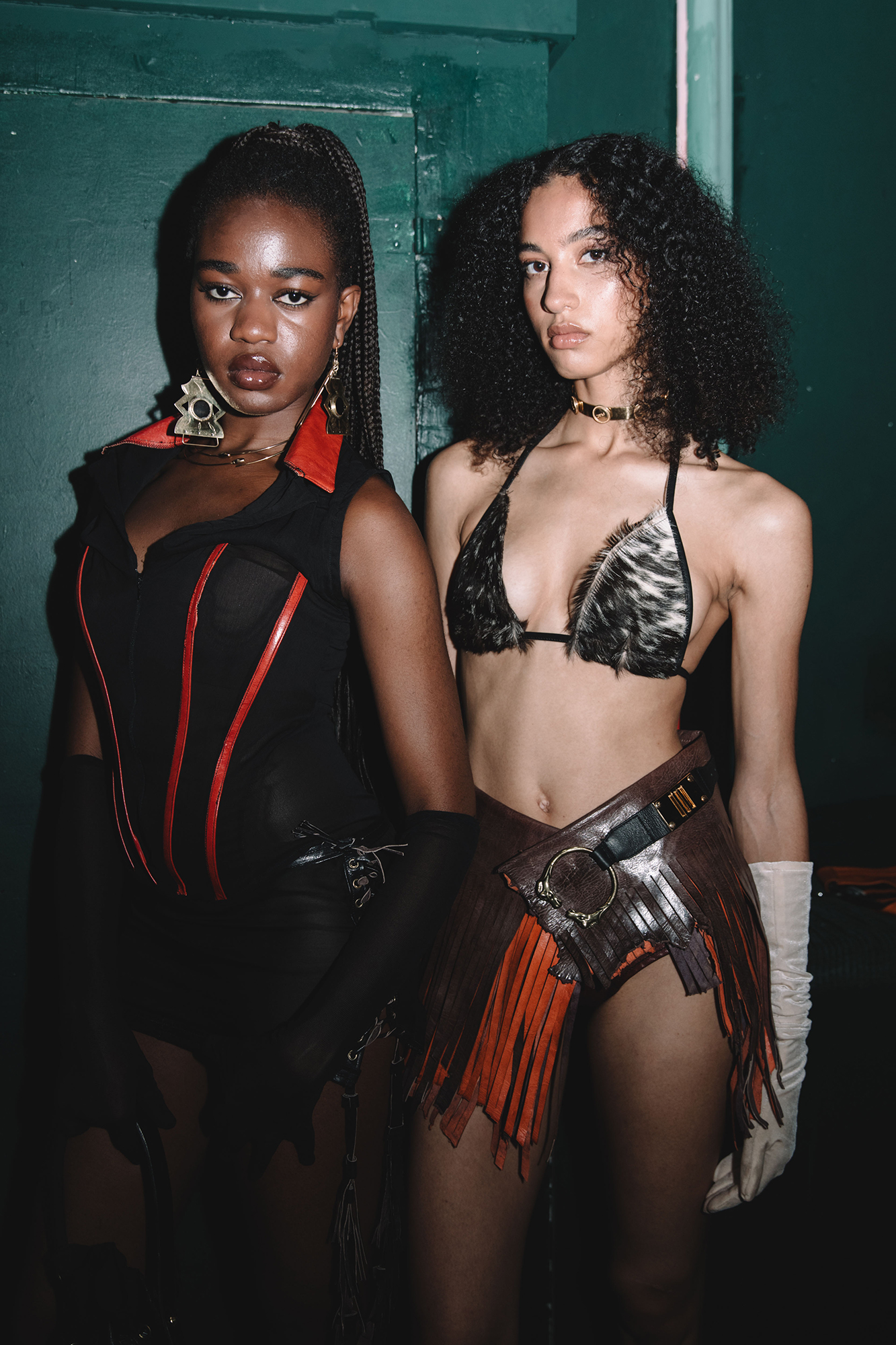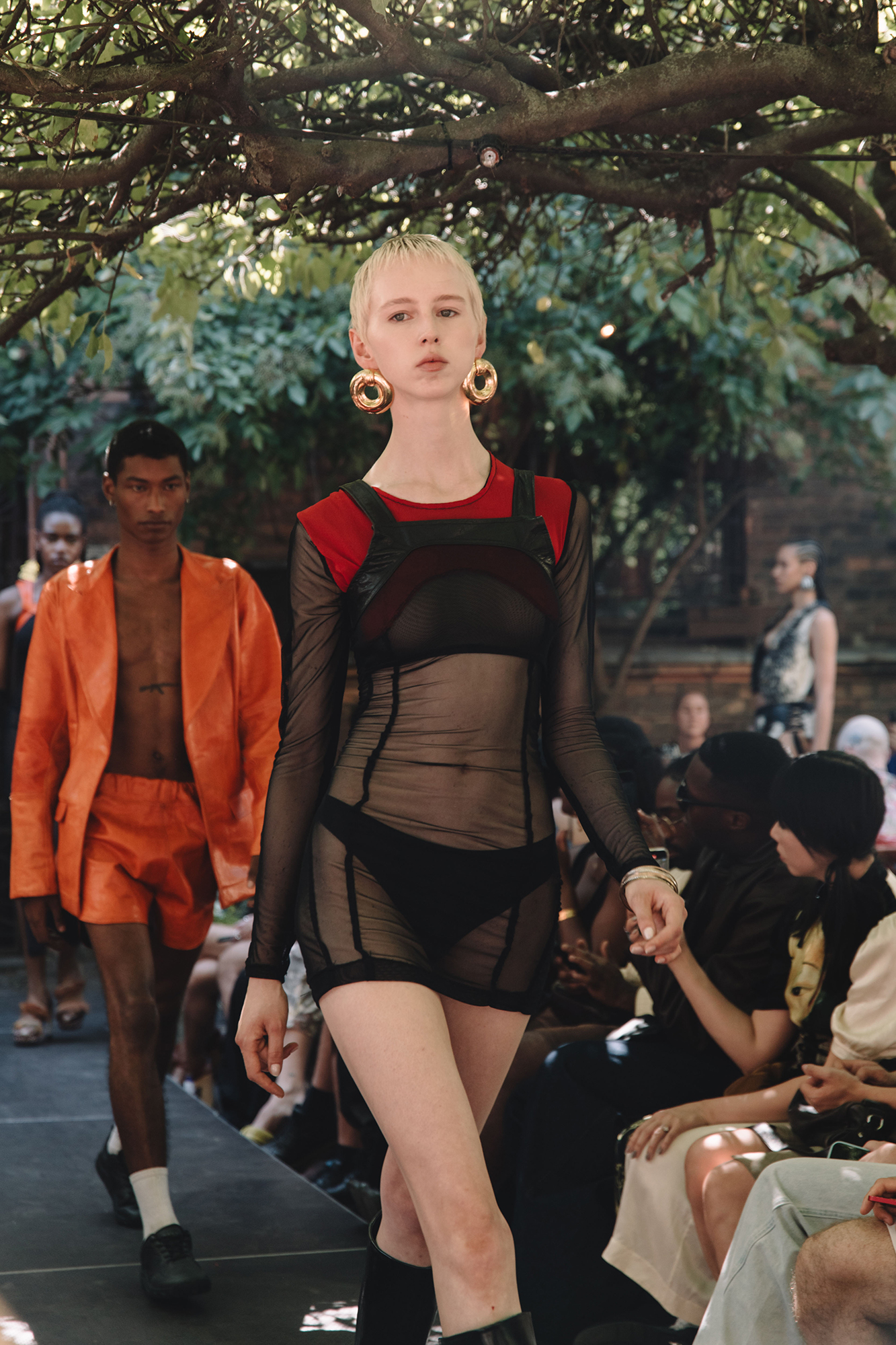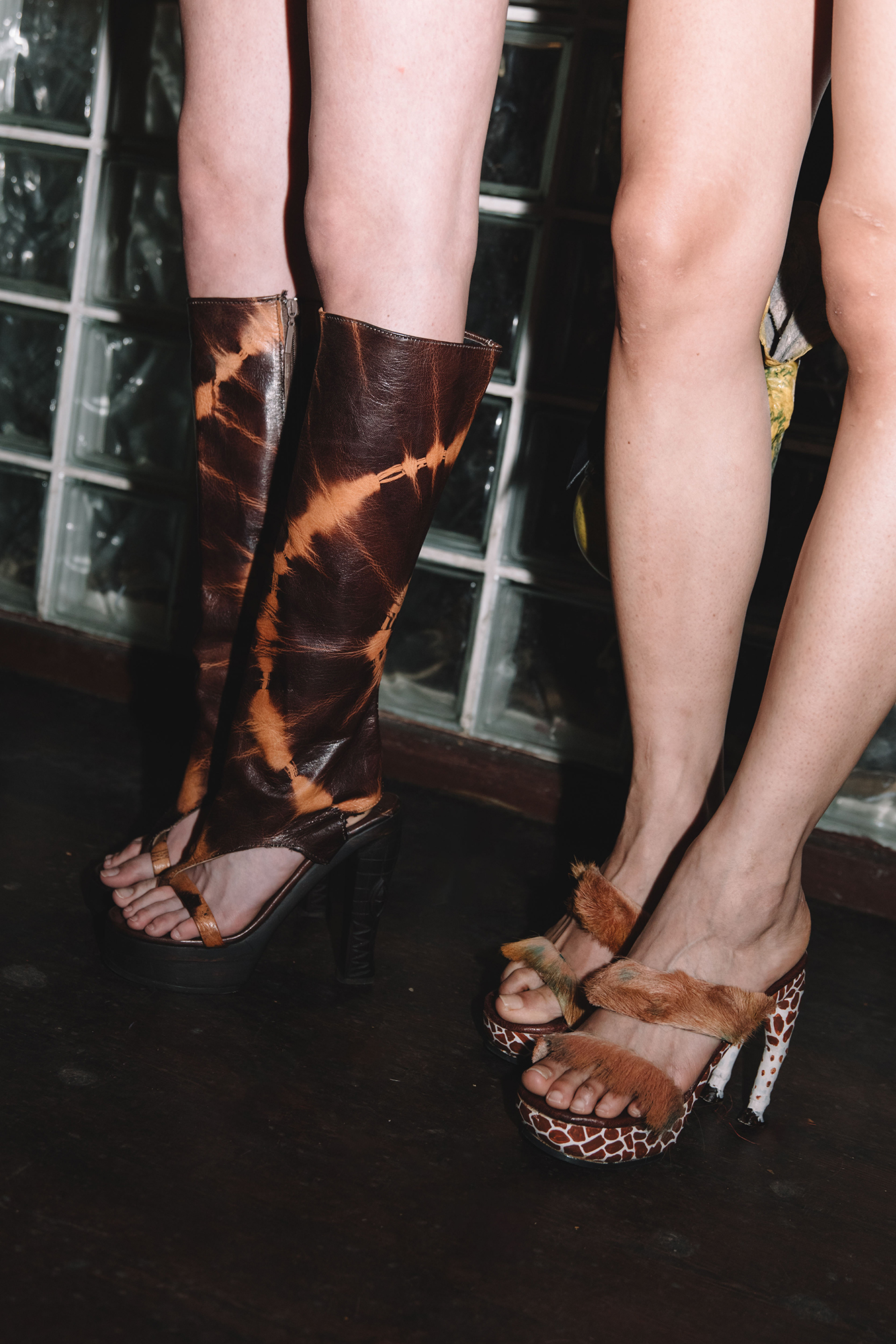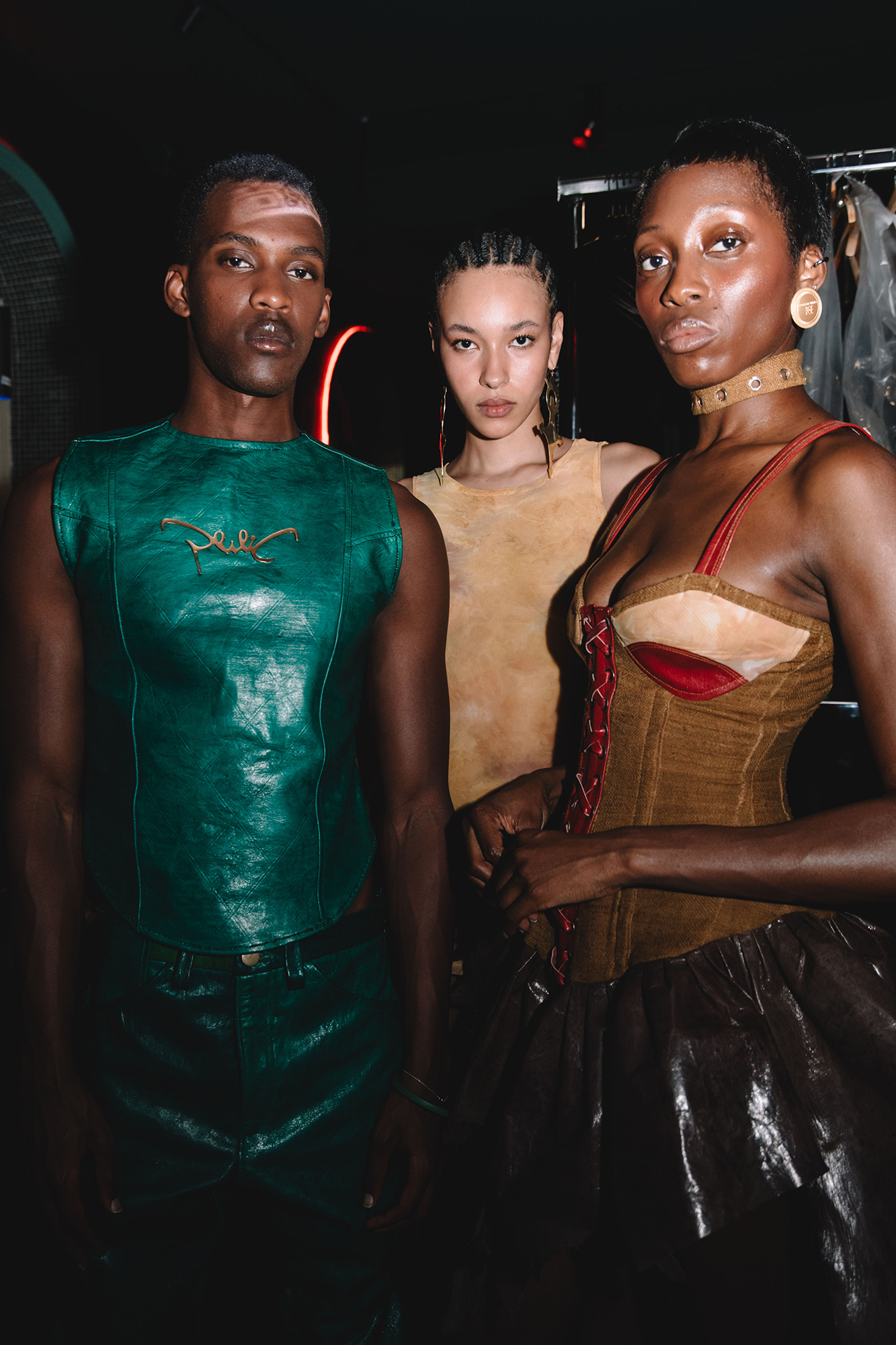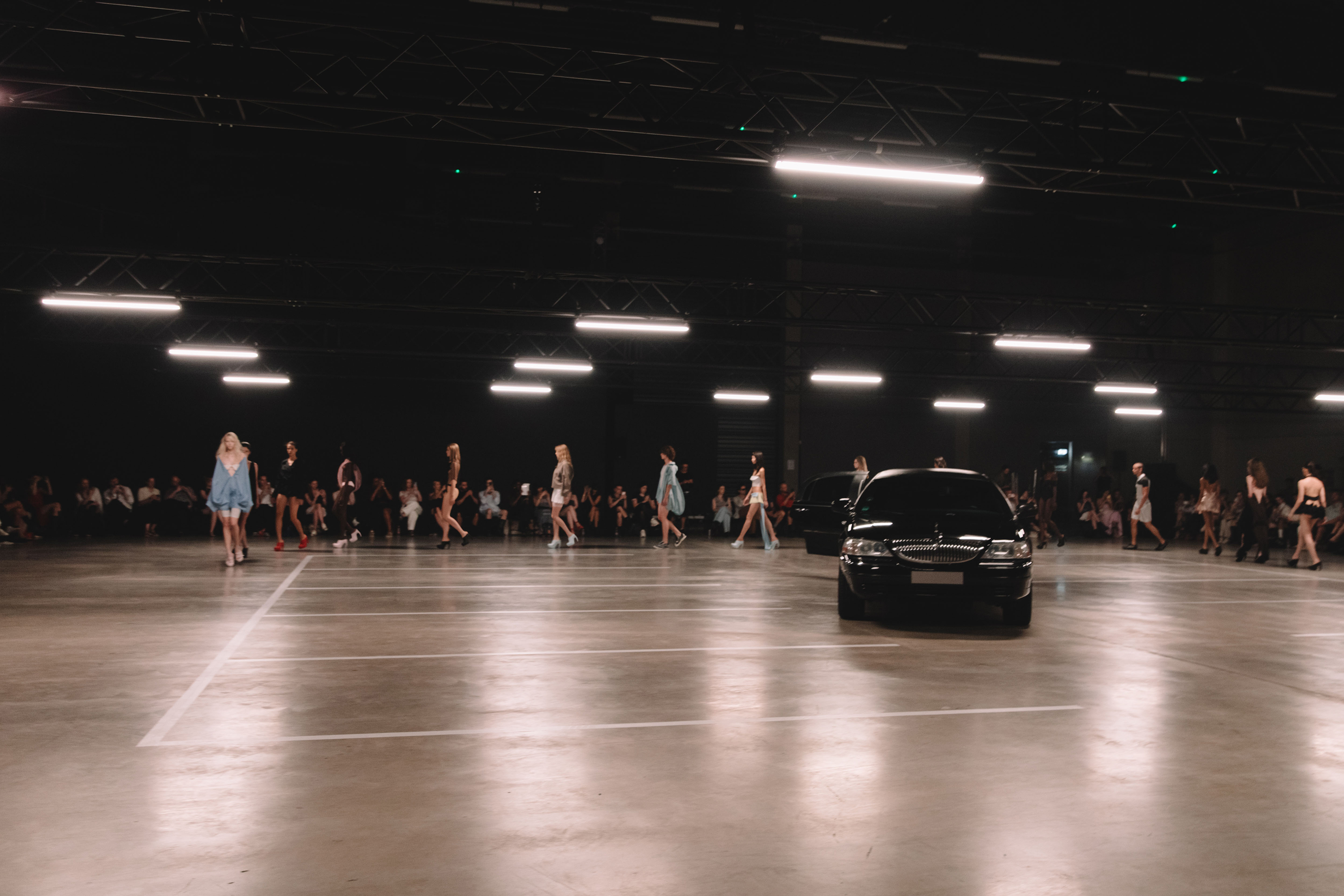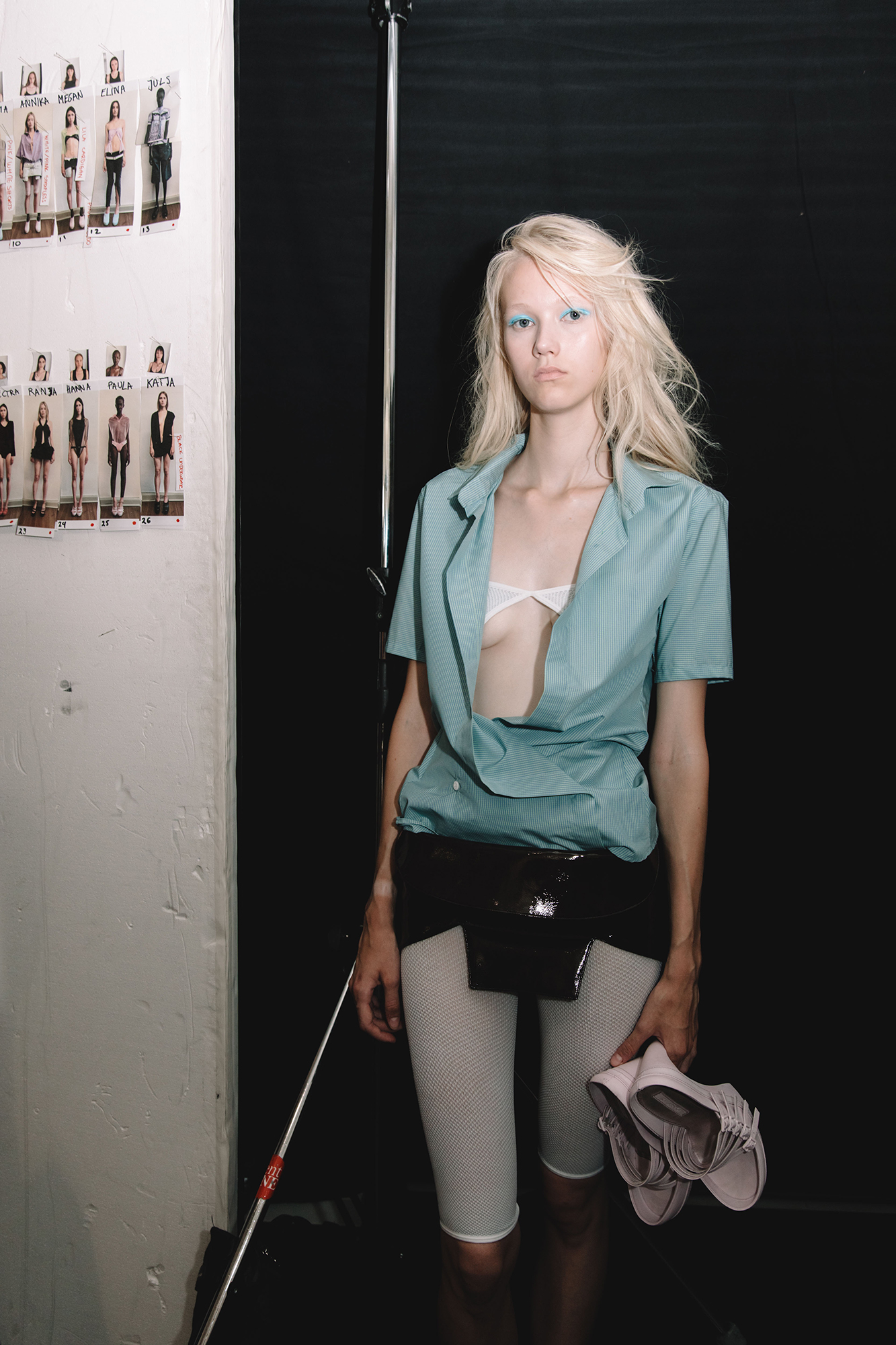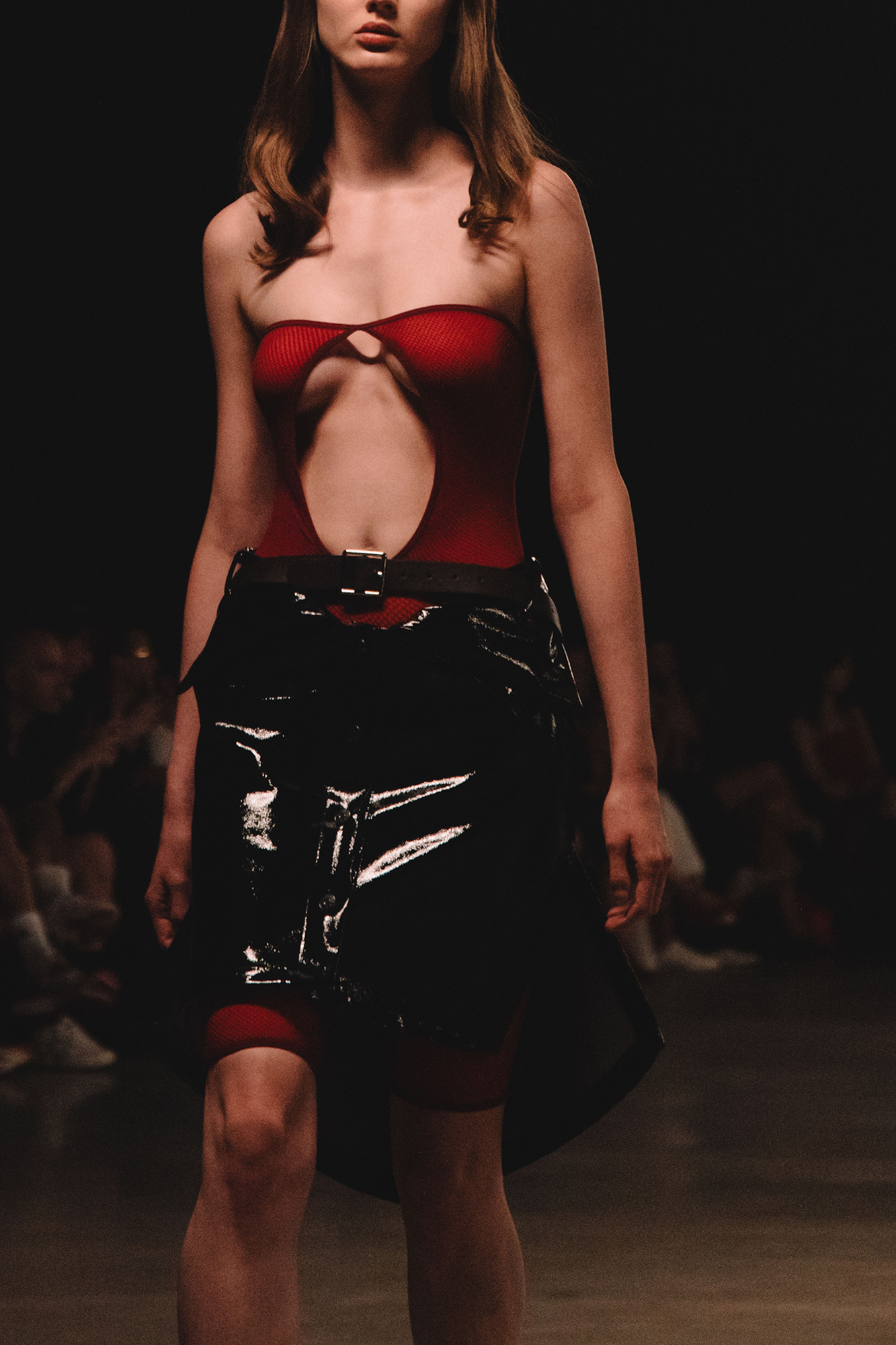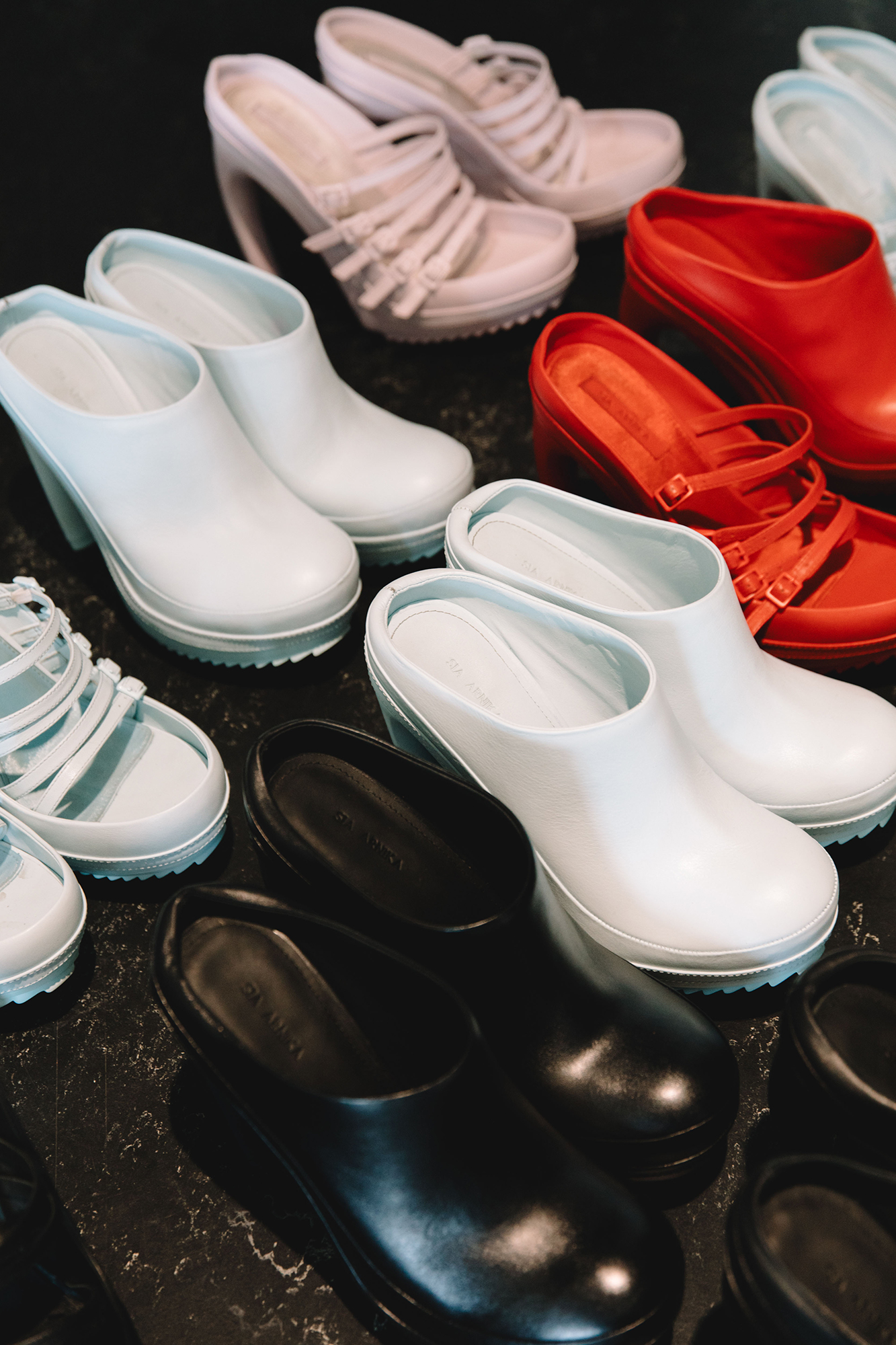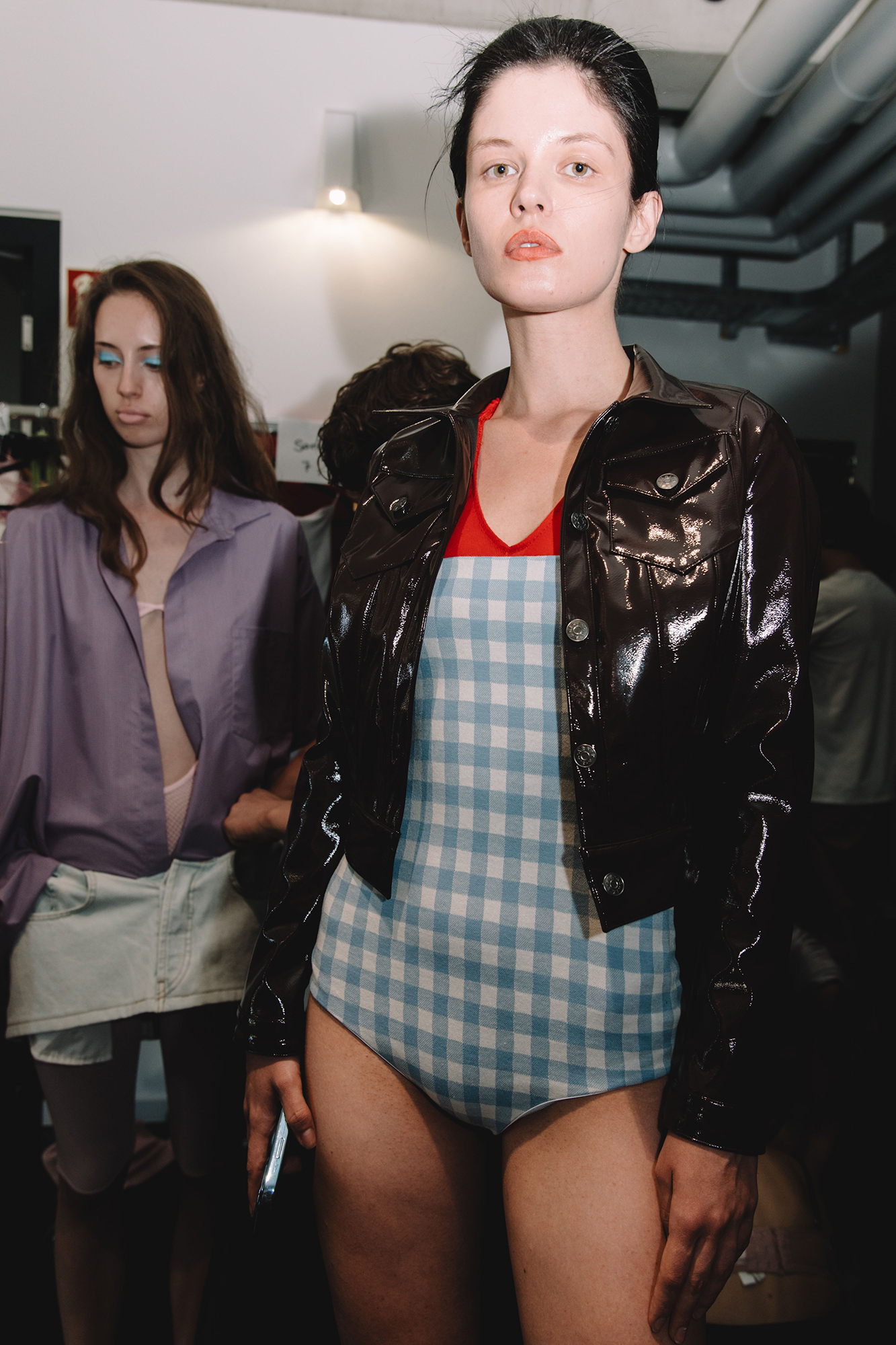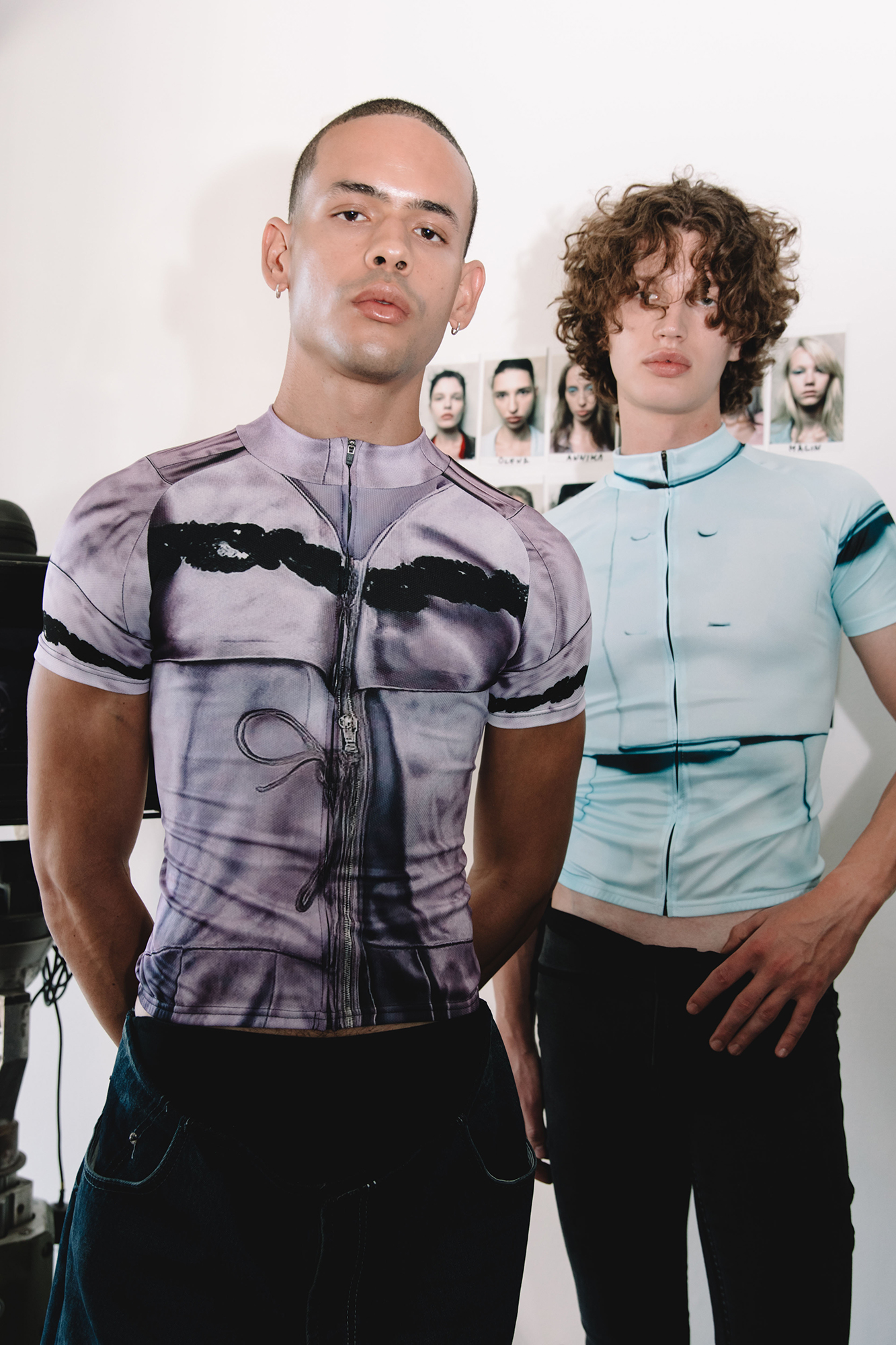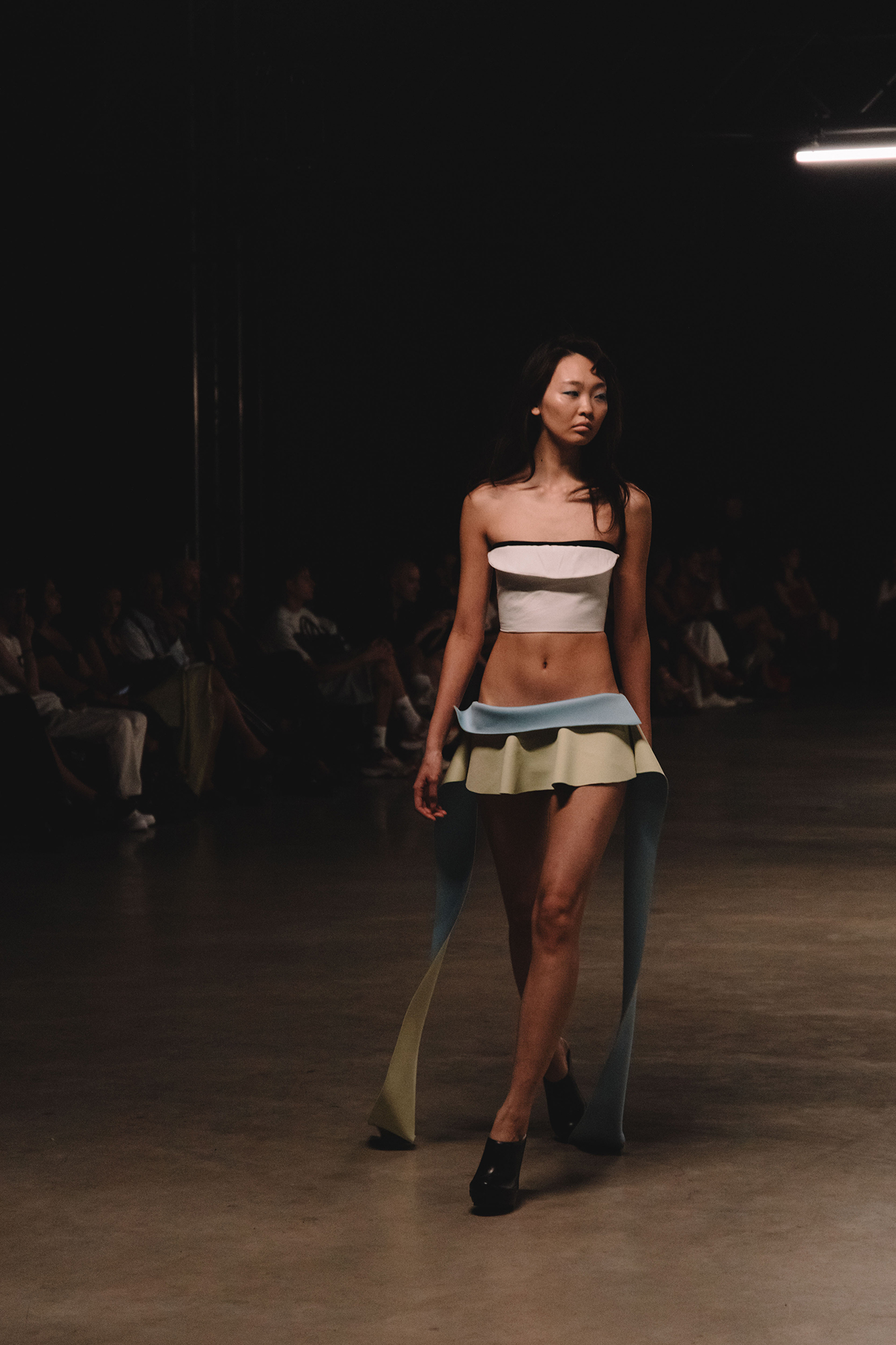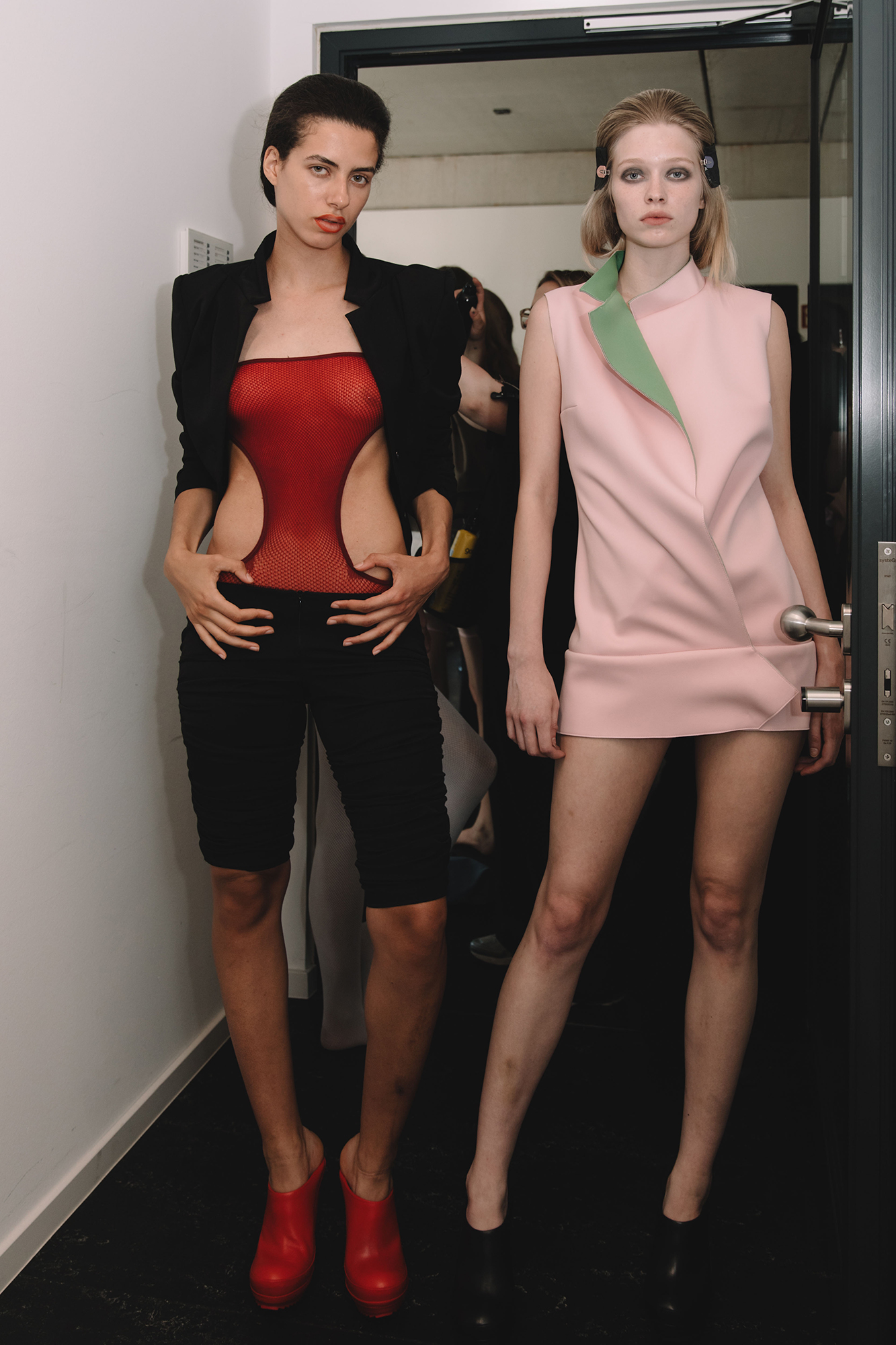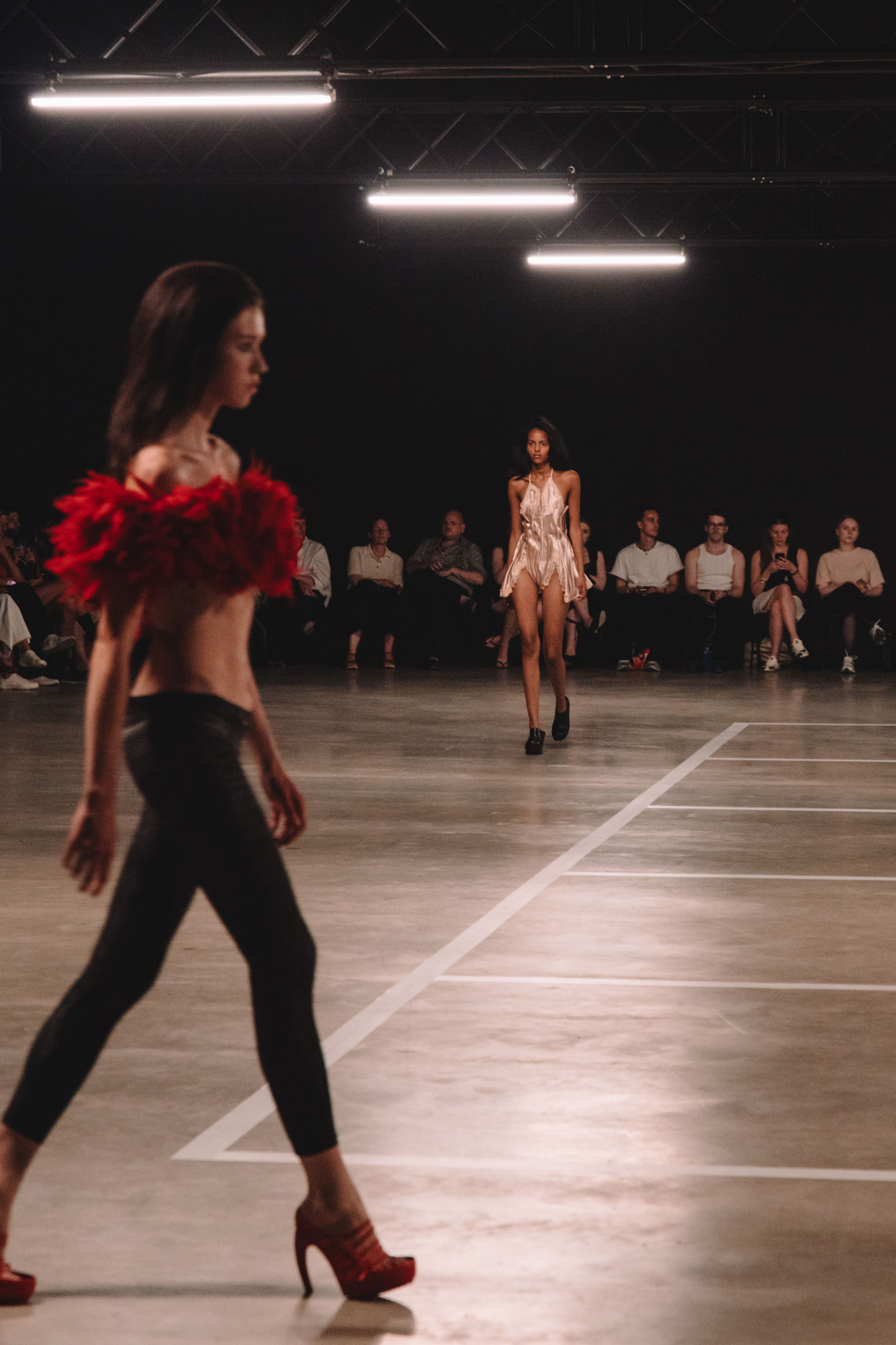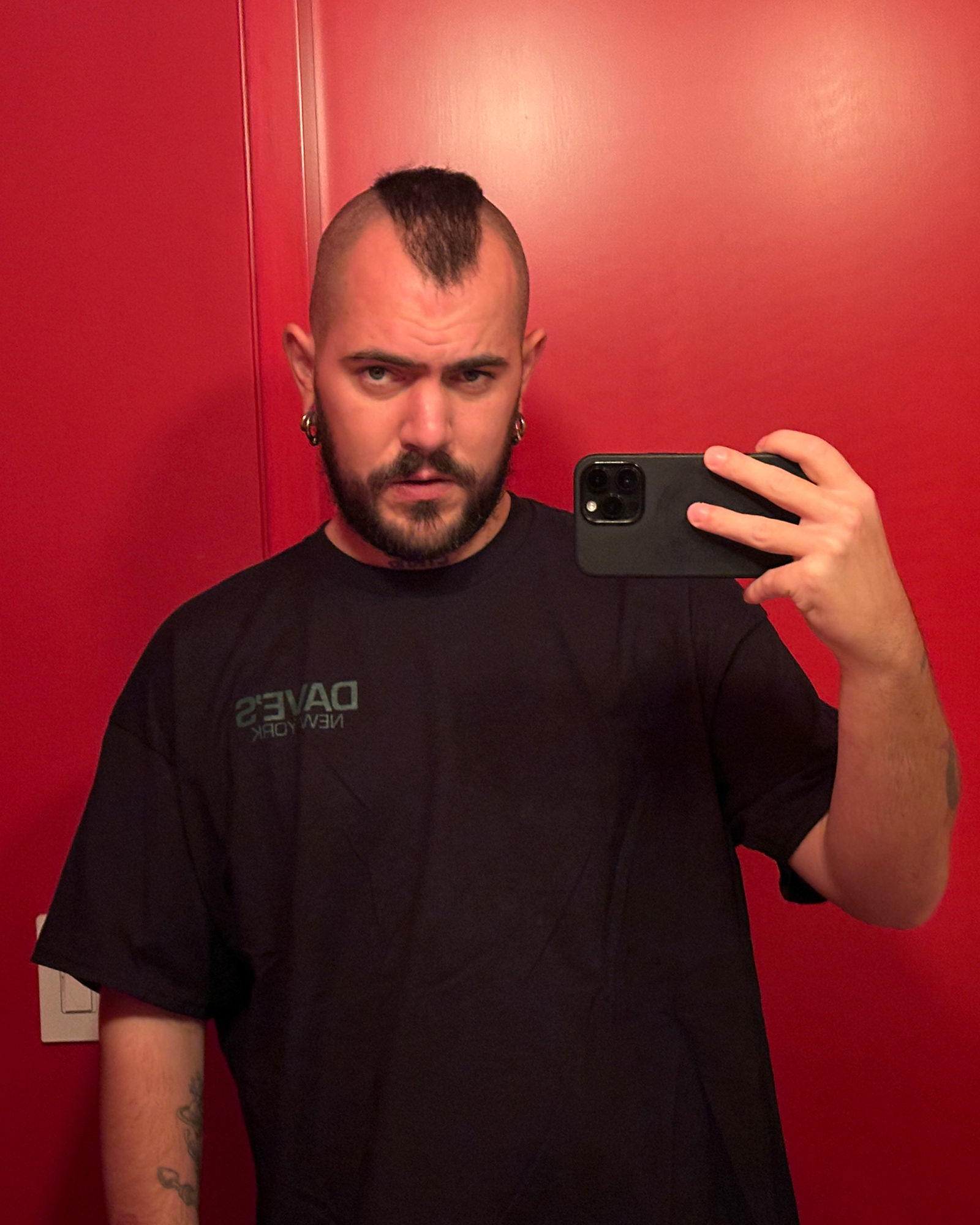Berlin Fashion Week has officially stepped onto the world stage. Once a local showcase of emerging German talent, this season’s edition marked a significant shift with a conscious expansion to include emerging international voices beyond Berlin’s borders. At its core, Berlin remains a city built on expressive freedom, and that spirit was embedded in the hosted collections that celebrated the beauty of imperfection, rebellion, and redefinition. The week’s evolution was the result of a joint venture between the Fashion Council Germany and Berlin Fashion Week organizers, reflecting their shared dedication to creating a runway that is both globally minded and proudly Berlin‑centric. Each label selected for the Berlin Contemporary program received €25,000 in funding to stage their shows—an investment that underscored the city’s commitment to nurturing design with global ambition and local relevance. The elevated tone behind the scenes matched the on-runway energy. Christiane Arp, stylist, journalist, and former editor-in-chief of Vogue Germany, lent seasoned vision and institutional weight to the week, while Scott Lipinski, CEO of both Berlin Fashion Week and the Fashion Council Germany, led the charge to position Berlin as fashion’s next frontier.
A clear highlight was Berlin’s growing prominence as a sustainability hub that was not just a talking point—it was a design principle. Laura Gerte took vintage tees and morphed them into sexy, body-conscious pieces ready for any formal gig on the itinerary. Brands like Buzigahill and PLN‑GNS shouted their message in organic textiles, low‑waste processes, and transparent storytelling, showing that eco‑awareness isn’t an afterthought but an integral part of their design DNA. That same ethos extended to craftsmanship as Haderlump Atelier Berlin impressed with sculpted leather jackets, intricately stitched coats, and draped romance. Marke by Mario Keine brought emotionally charged menswear tailoring that told a poetic tale of lost love through silhouette and cut. Models.com was front row as the city buzzed with creative momentum and a sense that Berlin is no longer a fringe player, it’s fashion’s next major contender.
Andrej Gronau
Andrej Gronau delivered a youthful yet refined collection that showed his evolution from his Central Saint Martins beginnings without abandoning his playful signatures. Bows, stripes, and star cutouts, a playful hallmark of his brand, adorned a more grown-up focus on knitwear and tailoring with gingham prints and muted tones of pinks, mustard yellows, and lavender. Presented at KINDL, a art museum restored from a former brewery in Berlin’s Neukölln district, the androgynous lineup allowed Gronau to expand his commercial repertoire without losing his original spunky DNA.
David Koma
Making his much-anticipated Berlin debut, David Koma unveiled his first-ever menswear show, aptly titled “I Love David,” as a cheeky fashion self-portrait. While juggling duties at his namesake label and Blumarine, Koma has been quietly building his menswear vocabulary—and embraced his first dedicated runway outing with sharp precision. The collection mined inspiration from three specific “Davids” – David Beckham, Michelangelo’s David, and Koma himself – merging Y2K nostalgia with classical art references and personal branding. The references came through in distressed denim trousers, phenomenally aged leather bombers, rhinestone-studded slogan tees, delicate lace aprons stitched into Michelangelo torsos, and impeccably tailored suits, all punctuated by playful crystalized hibiscus brooches and crystal detailing. The result was a confident character that found his stride, reimagining modern masculinity that stood out as one of the week’s defining moments.
GmbH
Berlin-based label GmbH once again impressed with Benjamin Huseby and Serhat Isik’s signature fusion of fluid tailoring and narrative depth in a dramatic three-act presentation titled “Imitation of Life”. The show opened on a solemn note, underscored by a moment of silence for the dead victims of the Gaza conflict, before giving way to a collection that delicately balanced softness and strength. Satin boxing shorts and fluid layered tops floated while paired with structured blazers, cinched with oversized bows at the back, to striking effect. Styled by Ellie Grace Cumming, cropped tees showed a sensual amount of torso and a highlight were the currency tops that put into perspective the cost of creativity. In all, the collection exemplified GmbH’s talent for weaving commentary into street-smart, sophisticated designs.
Lueder
Marie Lueder kicked off the week’s Intervention showcase hosted by Reference Studios by bringing medieval myth to the runway with her collection “SL∀Y”. A gleaming silver installation that resembled something sinister from the Rocky Horror Picture Show, dominated the set as Lueder explored the theme of “slaying the dragon” through performance and bold contrasts in texture and color. Styled by Tati Cotliar, Lueder paired utilitarian hoodies and knits referencing the protective armor to take on a beast with unexpectedly feminine cuts, and even emblazoned fire-breathing dragon motifs across T-shirts and bikinis. All of it was underlined by an ongoing performance from Ruby Commey, Roman Ole, and Luisa Gaffron who grabbed me out the crowd for the finale. Definitely a fun surprise! Shout out to Luisa.
Orange Culture
Lagos-based Orange Culture made a memorable Berlin entry with his “In the Shadow” collection that confronted mental health stigma through vibrant design. After a tough year of personal loss, designer Adebayo Oke-Lawal took on the challenge of creativity despite heartbreak to expand on his last showing at the Victoria & Albert museum last year. He employed a rich mix of materials, from Regenesis recycled textiles to traditional Nigerian Aso-Oke fabric, with flowing, untailored shapes shifting into sharply cut, deconstructed forms (think blazers cleverly turned into skirts or worn backwards), reflecting an inner conflict through silhouette and to symbolize the complexity of inner struggles. Ultimately, bold colors and exuberant prints celebrated “the beauty of letting go of the illusion of perfection,” while a few grounding black-and-white looks kept the message sincere, balanced, and aligned with the Berliner mood.
Ottolinger
For their hometown debut at Berlin Fashion Week, cult label Ottolinger delivered on their renegade reputation with a Resort 2026 collection titled “Heidi.” Themed around the idea of the cool big sister who breaks the rules, the show opened with pop star Kim Petras strutting out to Lady Gaga’s Scheiße thumping beat – a fitting start for the rule-breaking energy that followed. Designers Christa Bösch and Cosima Gadient sent out an array of twisted body-conscious looks in stark black and vivid brights, alongside slinky jersey separates and printed mesh dresses that will be commercially popular. Hallmarks of Ottolinger’s edgy style were their signature coated accessories, mesh bodycon that morphed to the wearer’s body, and latex-painted dresses and leggings that reinforced the collection’s fierce, rebellious attitude.
PALMWINE IceCREAM
Ghanaian brand PALMWINE IceCREAM turned heads with Kusi Kubi’s first major foray into womenswear. The Spring 2026 lineup was a heartfelt tribute to the women in Kubi’s life, putting craftsmanship and sustainability front and center with deadstock cotton, organza, mesh, and upcycled leathers that were naturally dyed with tree bark and transformed in collaboration with Ghanaian artisans. The silhouettes balanced toughness and playfulness with standout pieces included a laser cut out leather dress, sharp leather blazers paired with shorts, and carved shoes that doubled as one-of-a-kind art pieces. In a week that celebrated global talent, PALMWINE IceCREAM’s offering exemplified cross-cultural creativity and conscious design, earning its place among Berlin’s most talked-about presentations.
Sia Arnika
Invoking the spirit of Lana Del Rey, Sia Arnika channeled gritty Y2K nostalgia into her “Summer Time Sadness” collection, crafting an It-Girl wardrobe that felt right at home in Berlin’s underground club scene [and definitely up Kylie Jenner’s alley, as the socialite has been collabing with all the cool girls like Arnika, Dilara Findikoglu, Poster Girl, and Namilia]. As models sauntered around a stretch limousine in the center of Jofa Lichthaus Berlin [the location is one of Germany’s first 100% sustainable studios], a parade of ultra-short shorts, skin-tight cut-out tops, micro-pleated minis, and deconstructed men’s mesh shirts were all styled with Arnika’s signature chunky clogs – a bold assembly of pieces that radiated youthful nonchalance and provocateur attitude. The Danish-born, Berlin-based designer even sprinkled in a few menswear looks to round out the lineup, underscoring her commitment to real-world wearability. In the industrial venue bathed in neon light, Arnika’s presentation stood out for its raw energy and unapologetic celebration of club-cool glamour and sex appeal.
